AV LIGHTING SOUND REINFORCEMENT RECORDING STAGE SOUND BROADCAST November–December 2023
A NEW DIRECTION
ST MARTIN DE PORRES DIGITAL MINISTRY


AV LIGHTING SOUND REINFORCEMENT RECORDING STAGE SOUND BROADCAST November–December 2023
ST MARTIN DE PORRES DIGITAL MINISTRY

THE PLATFORM WITH THE AMPLIFIER ON BOARD.
Unica is the next-generation cloud based amplifier platform designed to provide a safe and consistent user experience for any size application, whatever your installation requirements and efficiency goals might be.
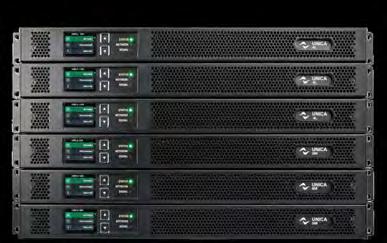

NDH 30 – OPEN DYNAMIC HEADPHONE
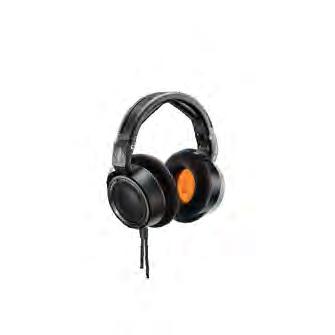


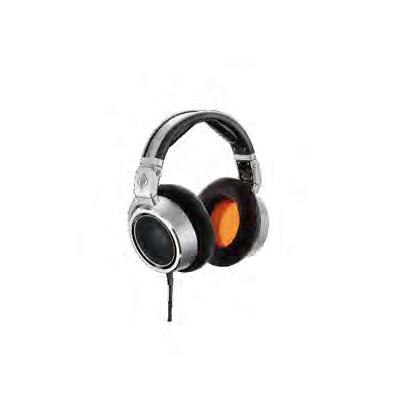

Superior linearity – like a perfectly calibrated Neumann loudspeaker system | High-precision imaging with razor-sharp localization | Manufactured to extremely tight tolerances
NDH 30
Open Dynamic Headphone
Sound and mix compatible with Neumann KH-Line speakers
Reference-class sound quality for mixing & mastering
Also available: NDH 20
Closed Dynamic Headphone
Excellent isolation allows working in noisy environments
Monitoring, editing, mixing. On the road, at home, in the studio.
Whether we like it or not, the hybrid world is here to stay, whether it’s working at home or worshipping at home. Most churches will now have some means of streaming their services online to people who are either housebound or travelling away on business. But it’s how houses of worship use, develop and modify this digital ministry that will potentially allow them to grow their following even further.
Oryun Vision Centre in Seoul (p.14) has significantly increased its worshippers by streaming three weekly programmes via the CBS channel on cable TV. The church has set up a new broadcasting suite in its

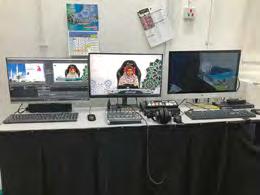
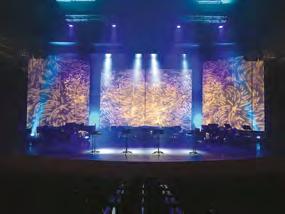
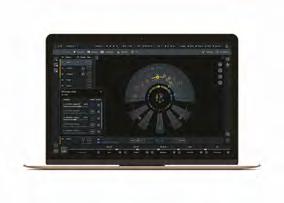
propelling its membership beyond the sanctuary.

The potential to grow online attendance is evident, and hopefully some of the articles in this issue can help. On p.32, QSC’s Golden Preciado looks at how to create the best broadcast mix for livestreaming and how to recreate the live worship experience as much as possible for the online viewer; and Media Mentoring founder Graeme Spencer explores the heart of digital ministry on p.34 and considers 10 reasons why digital ministry matters and how to keep content engaging.
I hope you enjoy the issue.



LICENCES: Singapore: MICA (P) 014/05/2023 PPS 1644/05/2013(022954)



CIRCULATION: circulation@worshipavl.com

Alternatively, for a basic and straightforward setup, it’s possible to livestream with just a smartphone, especially if it has a high-quality camera. In this case, the video and audio sources are captured by the built-in camera and microphone in the smartphone. Bear in mind that the result could be an unacceptable outcome in terms of visual and audio quality as it depends on the quality and specifications of the smartphone’s hardware.
Malaysia in early 2020, the Movement Control Order (MCO) had a huge impact on mosques, congregational prayers were disallowed, Friday prayers were postponed and knowledge-based activities were cancelled due to social distancing orders to stop the spread of the deadly virus. Consequently, mosques were unable to effectively carry out their function as a place of worship and as a centre of knowledge due to strict permission and stringent standard operating procedures set by the authorities. Nonetheless, new initiatives were quickly organised and new approaches formulated to compensate for the requirements of religion and the necessity to safeguard public health interest and safety. In this last article, I will share how livestreaming and broadcasting systems have been used in mosques ever since the pandemic began.
Long before the pandemic started, most mosques in Malaysia were already equipped with a visual system but it was

visual distribution system. During the pandemic, these visual features were enhanced for the capability of livestreaming and broadcast functionality as many mosques had mass gatherings prohibited.
Friday sermons, religious classes or religious talks went to livestreaming platforms such as YouTube and Facebook to maintain the mosque’s engagement remotely. By doing this, the role of educating society on spiritual elements and providing spiritual guidance was kept intact.
There are five significant components for a livestreaming setup, namely the video source, audio source, encoder, streaming platforms and internet connection. The video sources generally come from cameras, while the audio sources come from microphones or mixer feeds. For mosques, the video and audio sources are usually fed from the existing visual and PA system. Under certain circumstances, the video source could also come from the CCTV system due to the absence of a visual system.

There are two types of streaming encoders that can be used: either a hardware-based encoder or a
based encoders such as Extron’s SMP Series are examples of hardware that could be used as they come with built-in processors for capturing and distributing AV sources and presentations, such as livestreaming and recorded media. In contrast to hardware-based encoders, OBS Studio is an example of a software-based encoder that is commonly used as it is renowned for video capturing, customisation and streaming. However, there is an additional requirement for software-based encoders to operate as computing devices such as PCs or laptops and supported operating systems are needed along with an audio interface device for the audio source and a capture card for the video source. Generally, the hardware-based encoder is costly compared to the software-based encoder; nevertheless, both options have their pros and cons. In the next process, the encoded signal will be sent out to streaming platforms such as YouTube and Facebook Live which are the most common livestreaming hosting services that are widely used in Malaysia because they are easy to deploy and manage.
There’s no doubt that the pandemic has changed the way mosques engage with Muslim society. As a result, nowadays the livestreaming and broadcasting system is a new standard requirement and a compulsory addition to be installed alongside the visual system in any mosque in Malaysia. However, two main concerns consistently arise whether during the design stage or project implementation, which are internet availability and IT skills proficiency. Internet availability is normally related to the IT infrastructure, such as fibre broadband connectivity provided by the local Internet Service Provider (ISP) to the mosque. It will be problematic for rural areas as fibre networks are not normally supported away from the cities. A 4G/5G broadband solution can be used as another option to overcome this problem.
Last but not least, the streaming setup is not a complete hardware setup, it also requires a software element such as creating an RTMP server and video editing. For this reason, a competent person with IT skills is indispensable to manage this software-oriented hardware. So, this is the final article from me and I do hope it will give a brief overview of livestreaming and broadcasting systems and how important it is for mosques. Until we meet again in another comments section, take care and goodbye.
Azizi Ala looks at how the use of livestreaming and broadcasting systems in mosques has grown since the start of the pandemicA software-based livestreaming workstation Founder and technical director at Acousticon Sdn Bhd
ATEM Mini makes it easy to create professional multi camera productions for live streaming to YouTube, Skype or Zoom! Simply connect ATEM Mini and you can switch live up to 4 high quality video camera inputs for dramatically better quality images. There are loads of video effects too! Plus, ATEM Mini has a built in hardware s t reaming engine for live streaming via its Ethernet connection.
There’s never been a solution that’s professional but also easy to use. Simply press any of the input buttons on the front panel to cut between video sources. You can select from exciting transitions such as dissolve, or more dramatic effects such as dip to color, DVE squeeze and DVE push. You can even add a DVE for picture in picture effects with customized graphics.
Live Stream via Ethernet
ATEM Mini has a built in hardware streaming engine for live streaming to a global audience! That means you can live stream services direct to members of your congregation all over the world in better video quality with smoother motion. Streaming uses the Ethernet connection to the internet, or you can even connect a smartphone to use mobile data!
Monitor Sources and Status with Multiview!
When doing larger live productions with multiple cameras, it’s very useful to see all your video sources at the same time on a single monitor. ATEM Mini includes a professional multiview that lets you see all video inputs, preview and program on a single HDMI television or monitor! Multiview even includes status for recording, streaming and the audio mixer!

Includes Free ATEM Software Control!
ATEM Mini is a full broadcast television switcher, so it has hidden power that’s unlocked using the free ATEM Software Control app. This means if you want to go further, you can start using features such as chroma keying for green screens, media players for graphics and the multiview for monitoring all cameras on a single monitor. There’s even a professional audio mixer!
$405
Learn More!
AS THE OLD SAYING GOES, time flies when you’re having fun. Indeed, it does feel that way as it was almost a year ago when I penned these words “I’m happy to introduce a new series titled Let’s do it better!” and now I’m into my sixth and final edition of this 2023 series. Previously I’ve touched on five areas we can work on improving, namely stage monitoring, microphone techniques, livestreaming, sound mixing and, most recently, video mixing. We can certainly do better in many other areas, but for this final article I’ve chosen to focus on one topic that rarely enjoys the limelight but will draw attention only when things don’t go
well – church AV operations. Let’s zoom in on a few common examples here. In article 4, I centred on the art behind sound mixing because many churches are constantly looking for ways to improve their overall worship sound experience. In spite of this, many still do not place enough emphasis on one particular prerequisite to achieving it – the sound check. Often, we find the team arriving just minutes before the start of the service, which allows very little to no time to conduct any sound check, but yet we all expect everything to work and sound perfect when the band strikes the first chord. Back
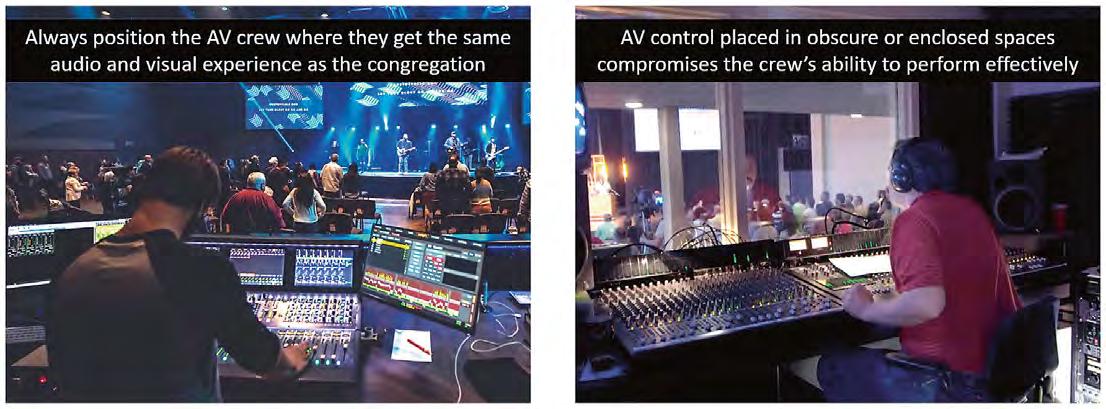
absolutely necessary to ensure the proper function of every incoming/ outgoing channel and delivering the right mix balance from the very start (and in case you’re wondering, recalling the previous week’s settings isn’t going to work either). Establishing a clear standard operating procedure (SOP) and inculcating a discipline to
Well, I guess that’s one way of getting the congregation’s attention! But jokes aside, these are all unnecessary operational glitches that can be easily avoided.
To facilitate a smooth delivery of sound and video, the AV crew must first be located at a good vantage point that allows them to monitor, assess

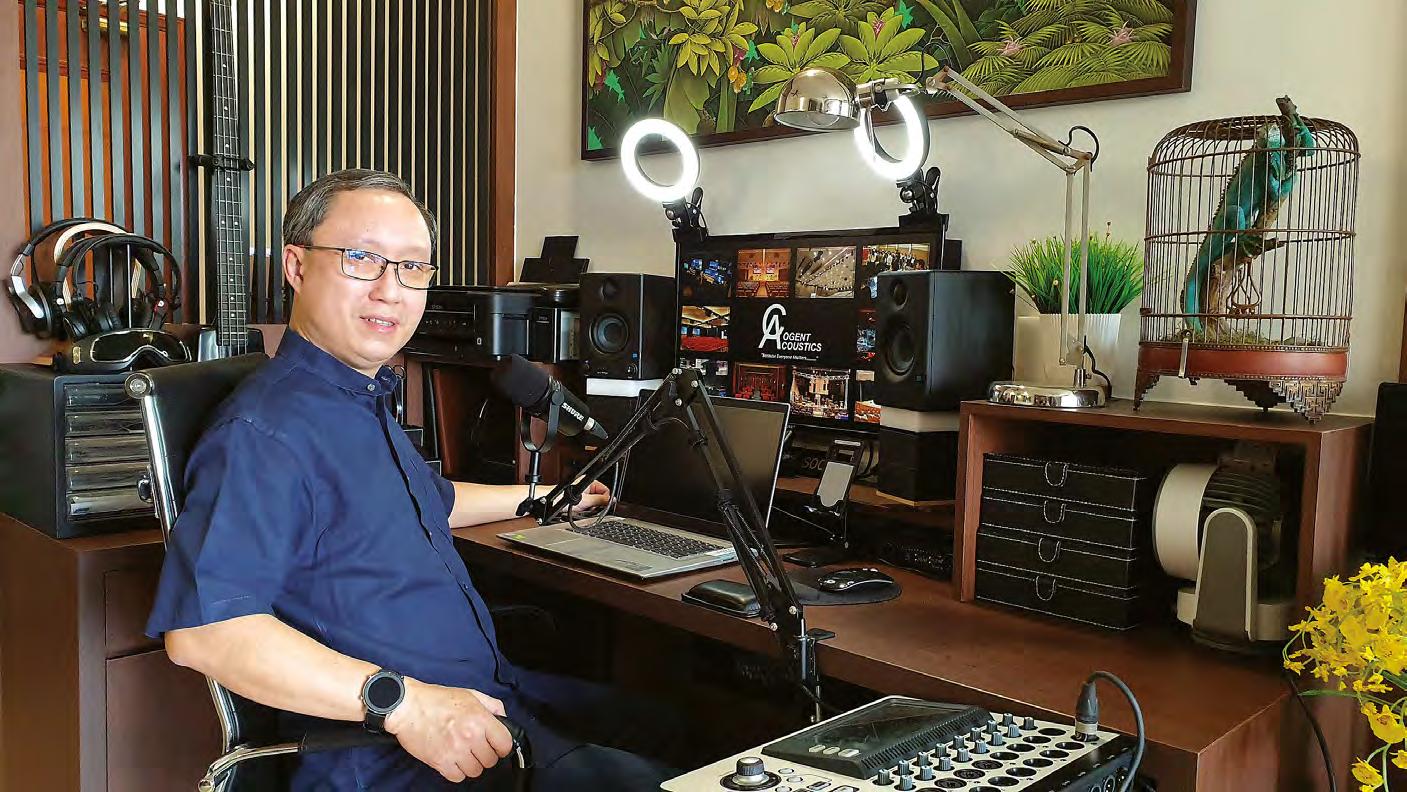
Robert Soo considers an often-overlooked way of improving the worship sound experience: the sound check
and execute the right adjustments and settings. However, we’ll often find AV control booths located in some obscure corner or enclosed room at the back of the sanctuary, or at the upper deck that suffers from muted sounds and occluded visuals. Putting the AV crew in such compromised locations is analogous to putting pilots at the tail end to steer their plane, or having drivers put on blinders. Such conditions prevent the crew from performing effectively, so it is imperative that they are stationed strategically within the sanctuary where they have the same audio and visual experience as the congregation, thereby providing them an accurate assessment to make the right decisions.
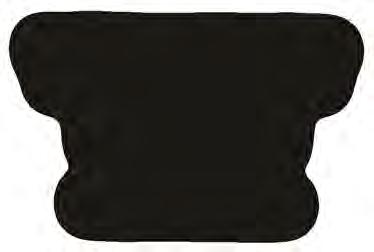
It’s not always that common to find well-instituted SOPs on the proper use and maintenance of AV equipment, more so in churches that are mainly run by volunteers. Often, I’d find churches operating with only two or three functioning mic cables and discover that they have a bunch of faulty ones sitting under the console table, simply because no one knows what to do with them. Once I was watching a livestream of a church service where the preacher’s handheld microphone placed on an extended boom arm started with the
microphone positioned at his lips but descended down to his throat level by the middle of the sermon. This is usually the result of mic stand abuse where users forcefully turn the boom arm without releasing the clamp. Others such as mixers, microphones, DI boxes, rechargeable batteries – you name it – suffer similar negligence because there is inadequate management on proper equipment use and maintenance, which inevitably leads to undesirable disruptions and distractions during worship services. It is good to invest in quality AV equipment but it must always be complemented with regular training and upgrading programmes for the crew because even top-notch systems


can perform poorly in the hands of untrained or inexperienced operators. Besides equipment operations, these trainings should also cover good practices and disciplines as described earlier, as well as on basic equipment repair and maintenance. A regular AV training programme I used to be part of also taught on soldering techniques, imparting a “lost art” that has helped hundreds of trainees revive numerous faulty cables in their respective churches. Another valuable skillset for AV operators is system troubleshooting techniques, particularly useful when technical issues occur during worship services.
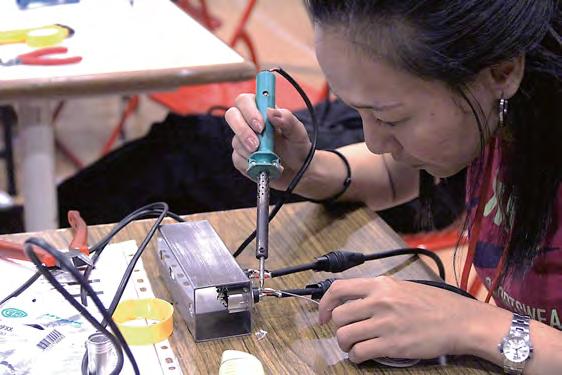
Before I wrap up this final article, I would like to reach out to church

leadership concerning AV upgrading projects – seek the counsel of experienced and independent AV and acoustic consultants who have good track records, particularly in church AV projects. Such professionals have dedicated many years to not only studying best designs but also amassing knowledge on what mistakes and pitfalls to avoid. They will be in the best position to propose the right solution in meeting your church’s budget and long-term needs. Though I advocate engaging a consultant as early as possible in the project, do exercise prudence in your selection, as there will be those who also supply AV equipment and provide contracting services, which consequently clouds their ability to provide non-biased system solution proposals. Take the time for thorough research before you engage, and remember it is always wise to first seek counsel from above. Well, there you have it, my final short article for this year. I hope my past columns have been helpful to the church AV community in some ways or another. As always, there is so much more that I would like to share so, God willing, I hope to be back again in 2024. I will be looking for new topics to talk about then, so do drop me a note if you have any suggestions. Till then, take care and God Bless.

THERE ARE TWO THINGS
necessary to ensure trouble-free wireless mic performance: sufficient RF signal dynamic range and finding a clear channel to tune your system to. Today we will be exploring dynamic range (aka “carrier to noise ratio”).
In general terms, your receivers need to receive a signal from your wireless mic that is at least 20dB stronger than the noise floor at the frequency you tune to. Within a reasonable range, more signal-tonoise is better of course and will lead to more stability.
So, here’s what typical levels look like starting at the mic transmitter:
50mW = +17dBm
30mW = +15dBm
10mW = 10dBm
Generally speaking, we will need to subtract a little for the inherent transmitter mis-match loss.
Transmit antenna loss = –3dB
Maybe you never thought about this but transmitters in the hands
to keep the transmitters reasonably close to the receiving antennas to minimise this loss. The loss factor increases with frequency, so we’ll
loss, like BNC connections and polarisation fading. So, it’s good to consider those as well. So we’ll throw in a little here.
It all starts with the power output from your wireless mic transmitter. More is better, right? Well, it is a bit of a balancing act. More power increases intermod problems when using more than a single transmitter and this becomes a bigger problem as the number grows. Intermod build-up will reduce the number of open frequencies you could otherwise tune to. Additionally, more RF flying around the room will sooner or later end up in your other systems as noise. To better understand this, we’ll need to calculate the
of humans (or on their belts) suffer a fair amount of loss. It will also greatly reduce the signal if the talent covers the transmit antenna with their hands. The losses are directly proportional to body size … bigger people create more losses than smaller people.
Handheld loss = –8dB
Beltpack loss = –20dB (double if in your back pocket)
As the signal travels through the air, there’s something called free space path loss. Basically, the further
consider the centre of the UHF TV band at 550MHz.
Loss @ 30m = –57dB
Loss @ 15m = –51dB
Loss @ 7.5m = –45dB
As receive side antennas become more directional, they exhibit greater gain. But regardless of gain, you do need to select the proper antenna to achieve the coverage pattern you need.

Whips = +1.5dB
LPDA/paddles= +6dB
Helicals = +9dB
Another important factor to remember is the loss as the signal travels through your coax cables. This is called transmission line loss and becomes greater as cable length increases. I’ll give a few examples here, but you should refer to the specs for the coax cable you are using and you should be using the best you can afford.
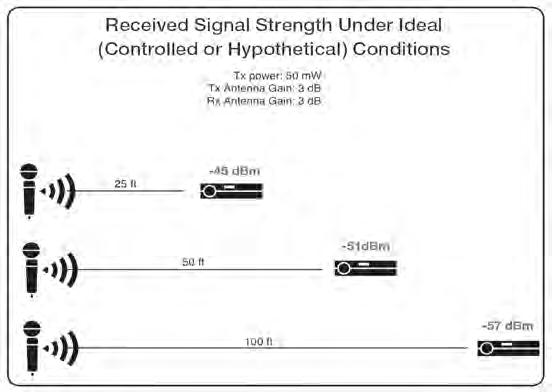
RG58 loss –12dB/30m
RG8x loss –8dB/30m
LMR400 –4dB/30m
Misc losses in your system = –3dB
So let’s add it up!
30mW transmitter +15dBm
Transmit loss –3dB
Human absorption –20dB
Free space path loss 15m –51dB
LPDA antenna gain +6dB
Coax loss 15m RG8x –4dB
Other misc –3dB
Total RF energy at receiver
antenna port = –60dBm
Assuming your mic is assigned to a clear frequency and your antennas are properly aimed and not suffering from additional polarisation losses, we’re looking pretty good as long as our noise floor stays below –80dBm. There are other factors that can affect the strength of the signal received by your wireless mic. But, by understanding those factors and optimising your setup, you can ensure a better signal-to-noise ratio and avoid any dropouts or interference.

signal’s path in dB, also referred to as a “link budget”.
the signal has to travel, the more it weakens. So, it’s always a good idea
There are a few other factors that can affect the signal and introduce
If you wish to avoid the measuring and the maths, RF Venue provides a free online calculator that is easy to use. Just fill in the dropdown fields and hit “Calculate”. If you get a green light, you will have 20dB or better of dynamic range available. www.rfvenue.com/rfvenue-calculator

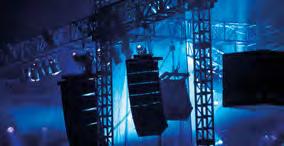
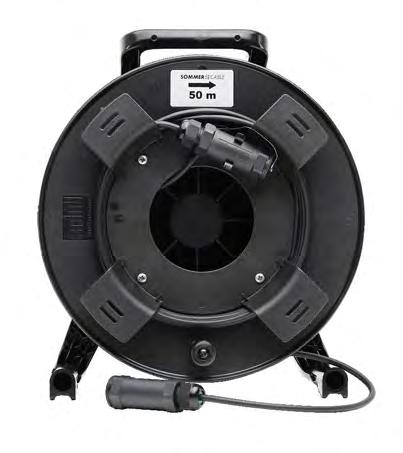
Wide range of bulk ware and readymade cables in different colours –especially white



High quality connectors by HICON and NEUTRIK
Large choice of multicore & power distribution solutions





Modular systems for individual installations or mobile use

Electronics for multimedia infrastructures
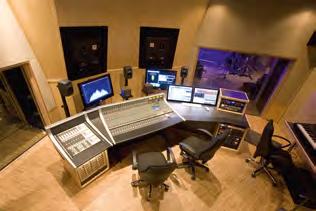
Big stock and fast delivery
HDMI® up to 100m/328ft

SOMMER CABLE based in Straubenhardt/Germany was founded in 1999 and is now one of the leading suppliers of professional high-quality cable and connection technology with a focus on the audio, video, broadcast, studio and media technology sectors. The product range including the in-house brands HICON, CARDINAL DVM and SYSBOXX covers cable bulkware, connectors, connection cables, individually adaptable distribution systems and electronics. A B2B shop with over 25,000 products is available 24/7.
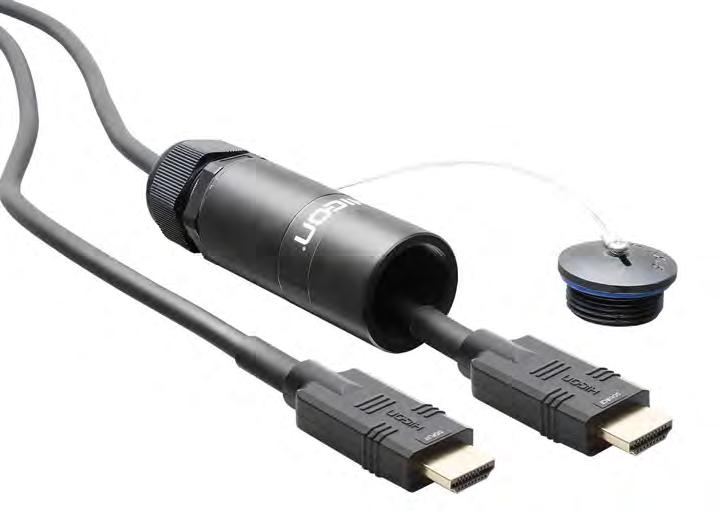
NORTH CAROLINA’S REIMAGE Church, made up of a diverse community of Christians, recently upgraded its sound reinforcement system to better accommodate the challenges of contemporary worship services. This resulted in the deployment of Blaze Audio’s Constant Curvature Array (CCA) loudspeakers.
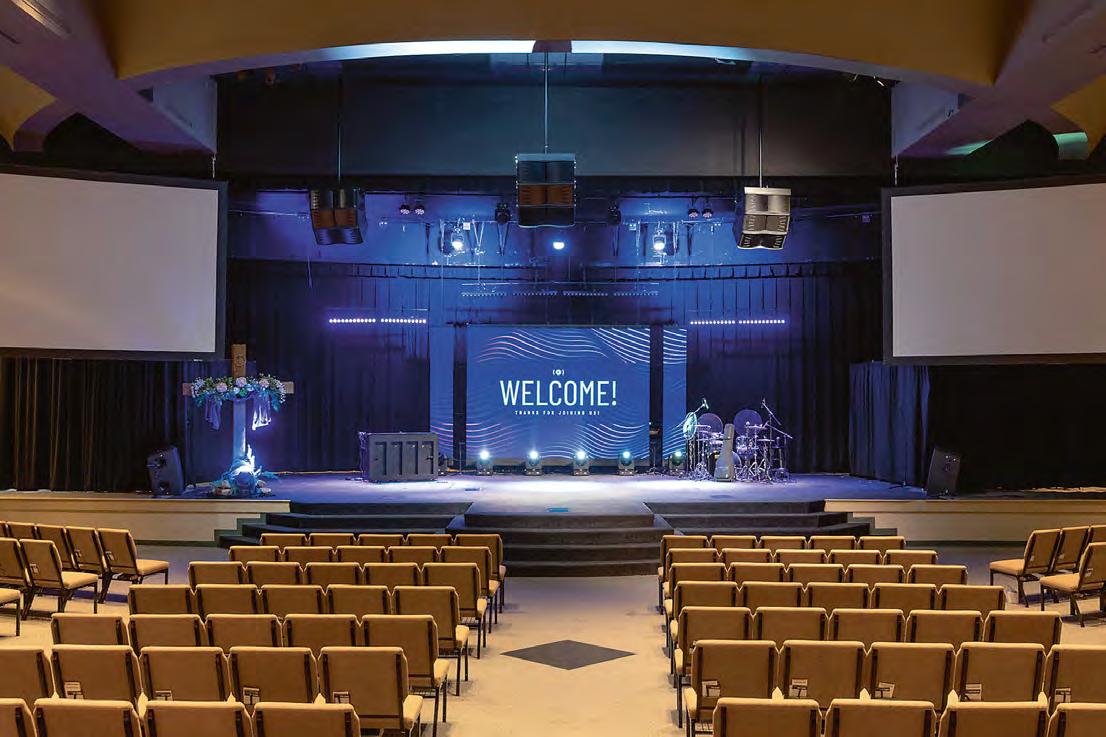
Hi Tech Electronics, a design/build AV integration firm with a primary focus on the HOW and education markets, was contracted to design and deploy the new sound system at Reimage Church. Hi Tech Electronics president, David Williams, discussed the challenges of the job and his reasons for selecting the CCA Series from Blaze Audio: “The sanctuary at Reimage Church is a large, semi-circular space with seating accommodations for 1,200 people,” he explains. “The edge of the stage faces directly into the arch of the room, which measures approximately 23m from the stage edge to the rear wall. This design can easily create considerable challenges for having consistent-sounding audio throughout the entire space – particularly on the extreme left and right sides. This is precisely why loudspeakers with wide horizontal dispersion in addition to a well-focused vertical throw were so important, and this was a key factor that led us to deploy the Blaze Audio CCA Series.”
Mounted horizontally with tight acoustic centres to minimise comb
filtering, each CCA10i enclosure provides a fixed 20° vertical coverage pattern and can be flown with additional enclosures in vertical arrays.
“The installation includes three hangs – each with three Blaze Audio CCA10i-BA-B enclosures,” Williams reports. “The centre cluster faces straight out towards the rear centre of the room, while the left and right arrays face into the mid area of the left and right sides. All three clusters are positioned directly over the front edge of the stage area. DSP is handled by two Symetrix Prism units. Power amplification is provided by six Blaze Audio PowerZone Connect 3004
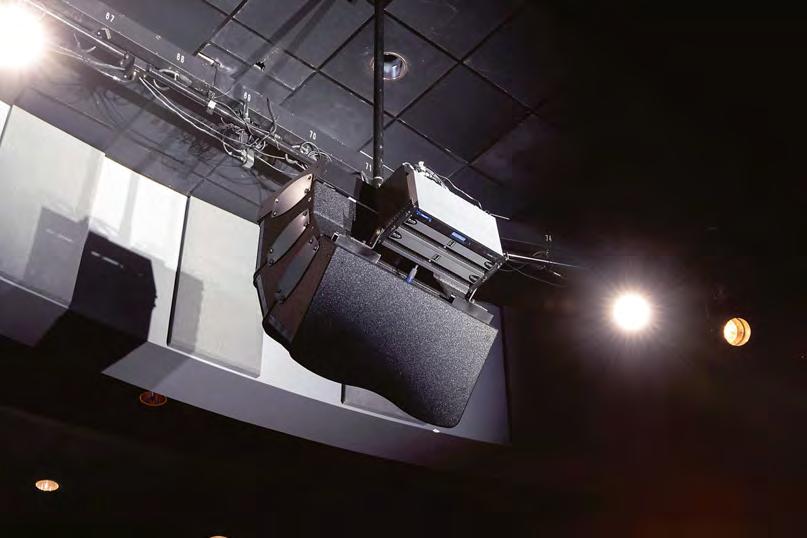
full-matrix DSP-enabled Class-D power amplifiers. There are two amps per hang point, mounted with a custom bracket that holds the amps on the back of the loudspeaker enclosures. “I should also point out that we retained eight WorxAudio UW18BP subwoofers that we installed with the original system back in the 1990s,” Williams adds. “Like the new Blaze Audio loudspeakers, the WorxAudio sub-bass enclosures were also designed by Hugh Sarvis, and this was a key factor that enabled us to retain the subwoofers and mate them with the new CCA enclosures. They all originated with the same loudspeaker engineer.”
Williams continues: “The clarity and pattern control on the CCA loudspeakers is nothing short of amazing. It doesn’t sound like you’re listening to a box – the sound seems to be everywhere. Speech intelligibility is excellent and music reproduction is as clear and present as I’ve ever heard. Everything sounds so completely natural. Equally noteworthy is the fact that with the Blaze Audio CCA Series, it took roughly half the loudspeakers of the previous installation to deliver superior results. I should also add that the video and stage technicians are very happy because this new system doesn’t complicate lines of
Williams reports his client is very pleased with the results: “Everyone at the church has been extremely complimentary of the new sound system. These loudspeakers speak for themselves. Sonically, the sound is like a breath of fresh air and everyone who hears this new system agrees. I’d also like to add that during the installation, Hugh Sarvis and the other staff members at Blaze Audio were extremely helpful. The bottom line here is that Blaze Audio has some terrific loudspeakers and a great support staff to help ensure the best possible use of the system.”
Blaze Audio has helped Reimage Church overcome the challenges it was facing with its contemporary worship services

















It has always been our main goal to deliver clear, natural sound to ensure every word is heard throughout the whole audience. Especially in places of spiritual contemplation it is particularly important to not just transmit speech. Using K&F PIA M makes room for the most important thing: the message. Loud, crystal clear and natural.

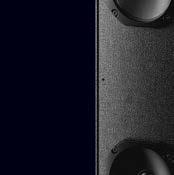





www.kling-freitag.com


















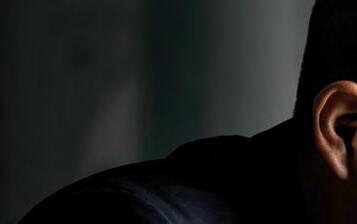









REPRESENTING 7% OF THE total population, Vietnam has the fifth largest Catholic population in Asia. Following the creation of Spanish and Portuguese missionaries in the 16th and 17th centuries, the French gradually developed and accelerated the role of evangelisation in Vietnam. As a result, the country is characterised with stunning architectural landmarks following French colonisation, including the noted Saigon Notre Dame Cathedral in Ho Chi Minh City.
Intelligibility remains paramount for the spoken word in Catholic services, particularly in reverberant stone buildings with lofty ceilings. In more recent years, amplification has been added to extend increasing musical demands. Located on the eastern outskirts of Hanoi, the congregants of Lieu Ngan Catholic Parish had been experiencing difficulties understanding the spoken word for several years. Parish Priest Toma Vu Van Dinh concluded that the audio system no longer met current requirements and, as such, commissioned The QV Sound Company to design a new audio system.
In addition to speech, the design would need to be adapted for musical
services and choral arrangements. Scheduled to be installed prior to the busy Easter service schedule, the QV Sound Company was faced with a seven-day deadline. The church also stipulated that ease of operation for the volunteers and clergy was a paramount feature within the 14m-high sanctuary. Challenge accepted – room acoustic measurements and simulations were made by the QV Sound Company engineering team prior to a demonstration that signified the works could proceed.
The audio solution is based on an AVE Stuttgart passive 100V
line audio reinforcement system powered by racked Ashly Audio KLR3200 and FA250.4 amplifiers. Completed within the one-week residency provided by the church, eight Atlantic-TS120 two-way coaxial loudspeakers are wall-mounted at set intervals along the long 43m-long nave. Operating within a 100Hz–20kHz frequency range, the discreet 974mm-high columns comprise eight 4-inch woofers and a single 1-inch tweeter.
Precise delay times of the TS120 enclosures were programmed before QV Sound Company’s business development manager Quoc Nguyen
and his colleagues fine-tuned the system prior to commissioning. The altar and choir areas are served by four compact Atlantic-T 04LZ coaxial enclosures, each comprising four 4-inch woofers. Extended low-frequency output is provided by a single VUE Audiotechnik is-26a active subwoofer. QV Sound supplied and installed Van Damme Black series speaker cables and Classis XKE microphone cables throughout.
The analogue audio system is controlled from an Allen & Heath Qu-16 digital console. The analoguefriendly mixer was primarily selected for its intuitive touchscreen management promoting quick access to all the parameters, including recalls stored for the various speech, choral and musical uses. Three of the Qu-16’s inputs are routed to beyerdynamic GM306 goosenecks at the altar and up to nine TG750 dynamic cardioid handheld mics can be used by the choir.
Following commissioning, Van Dinh commented: “I can hear my voice clearly. It feels natural and can now comfortably deliver the words of God.” www.ave-stuttgart.de
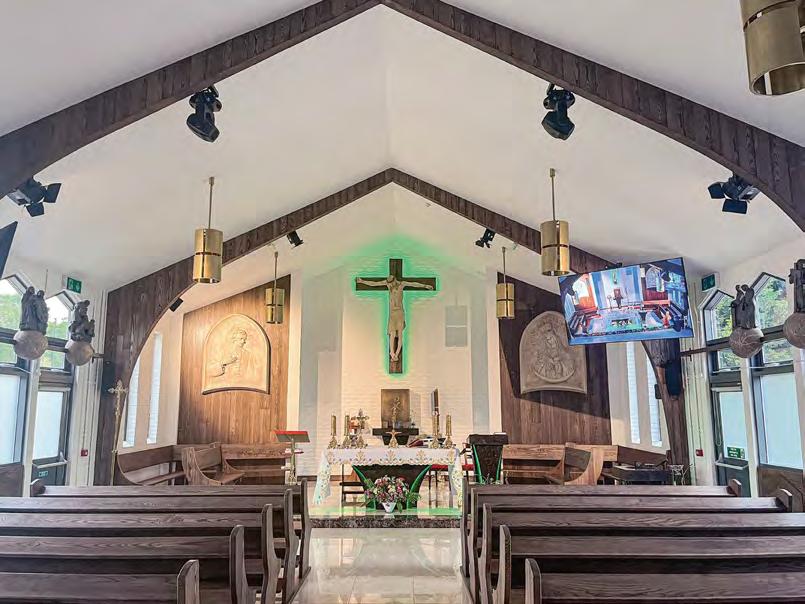
THE INSTALLATION OF LIGHT and sound in a church usually presents integrators with special challenges, including avoiding standing waves due to stone walls and the general architecture of a church. In the recently refurbished Polish Catholic Parish Church in Sheffield, England, the responsible integrator, Magic Music, had to equip four rooms with sound (and some lighting) simultaneously: the main hall, the hallway and entrance area, and two adjacent event halls of different sizes. To achieve a uniform –and at the same time flexible – result, the Magic Music team relied entirely on sound reinforcement solutions from LD Systems.
Each area can be used in a variety of ways – from classical services to live music evenings and conferences, or as flexibly deployable alternative areas. “We wanted to design an audio system that would provide a transparent, even and pleasant sound for both speech and music applications,” explains Magic Music managing director, Maciej Szramowski. “The lighting in the main hall is not only to illuminate the space, but to support the worship experience and make the characteristic elements more prominent.”
For uniform sound reinforcement in the main hall, Magic Music relied on the LD Systems CURV 500 array system. To cover the elongated room,
three arrays per side – each with four S2 array satellites – were mounted on the arcade-shaped wooden elements. “Thanks to their line array characteristics, the CURV 500 systems cover the different listening situations in the course of a church service – sitting and standing –without compromise,” confirms Szramowski.
Two LD Systems SUB 88 2x 8-inch subwoofers serve as support for musical recordings or live music. Since the church band plays in the gallery at the end of the hall, two SAT 82 G2 8-inch installation loudspeakers were installed as monitor speakers at the height of the musicians. In the altar area, two compact SAT 42 G2 4-inch loudspeakers provide monitoring for the priest and others involved in the service. All of the speakers are driven by eight DEEP2 4950 four-channel power amplifiers, which Szramowski considers the ideal combination of “performance, long life and reduced rack space”. Meanwhile, six U506 HHD 2 wireless microphone systems are used as wireless all-rounders for the transmission of speech and vocals.
To enhance the experience for the congregation, Szramowski selected four Cameo TS 200 FC Fresnel theatre spots with six-in-one LEDs, strategically positioned at the sides and centre of the church and aimed at
the altar. “The TS 200 FCs provide us with a wide range of lighting options, including warm white and cool white, allowing us to highlight each element of the liturgical year in different colours and colour temperatures,” continues Szramowski.
In addition, two Cameo AURO SPOT Z300 LED spot moving heads handle the targeted emphasis of specific worship events. Magic Music has also assigned two specialists for the staging of the two reliefs on the wall behind the altar, using TS 60W RGBW theatre spots. The complete lighting system is controlled via a mobile Cameo DVC USB-DMX interface on the computer and is fully integrated into the higher-level building control system from Crestron.
On the way from the main hall to the adjoining function rooms, visitors are accompanied in the entrance area by four LD Systems SAT 62 G2

6-inch installation loudspeakers. In case the main hall is full, visitors can also take their seats here and attend the service via screens and the loudspeakers in excellent picture and sound quality.

Magic Music also relies on the sonic flexibility of the SAT G2 Series for the two function rooms – whether it’s for conferences, readings or as additional backup rooms in case of heavy traffic. In the larger of the two rooms, six SAT 82 G2s in combination with two SUB 88 subwoofers provide the sound reinforcement for the guests, complemented by two Cameo AURO SPOT 200 LED moving heads for the targeted use of colours and lighting effects. In the adjacent small hall, SAT 62 G2 loudspeakers with a SUB 88 provide an identical sound image.
“With the products from LD Systems and Cameo, we were able to design an audiovisual environment that allows people to fully engage in the service,” exclaims Szramowski.
“As a result, after the renovation, the church not only has a modern appearance, but also a transparent and consistent sound, coupled with an integrated lighting system that gives more impact and depth to the individual worship elements.”
www.cameolight.com
www.ld-systems.com
www.magicmusic.me
Oryun Vision Centre has significantly increased its worshippers by streaming three weekly programmes via the CBS channel on cable TV

has evolved exponentially since the dawn of the millennium. Firmly on the rise prior to the pandemic, internet broadcasting is today drawing online congregations that are starting to dwarf their in-person services. Worship AVL recently returned to Seoul’s impressive Oryun Vision Centre (OVC), where in the depths of the lower-level basement, the senior pastor is streaming a varied programme of 4K content to a growing audience.
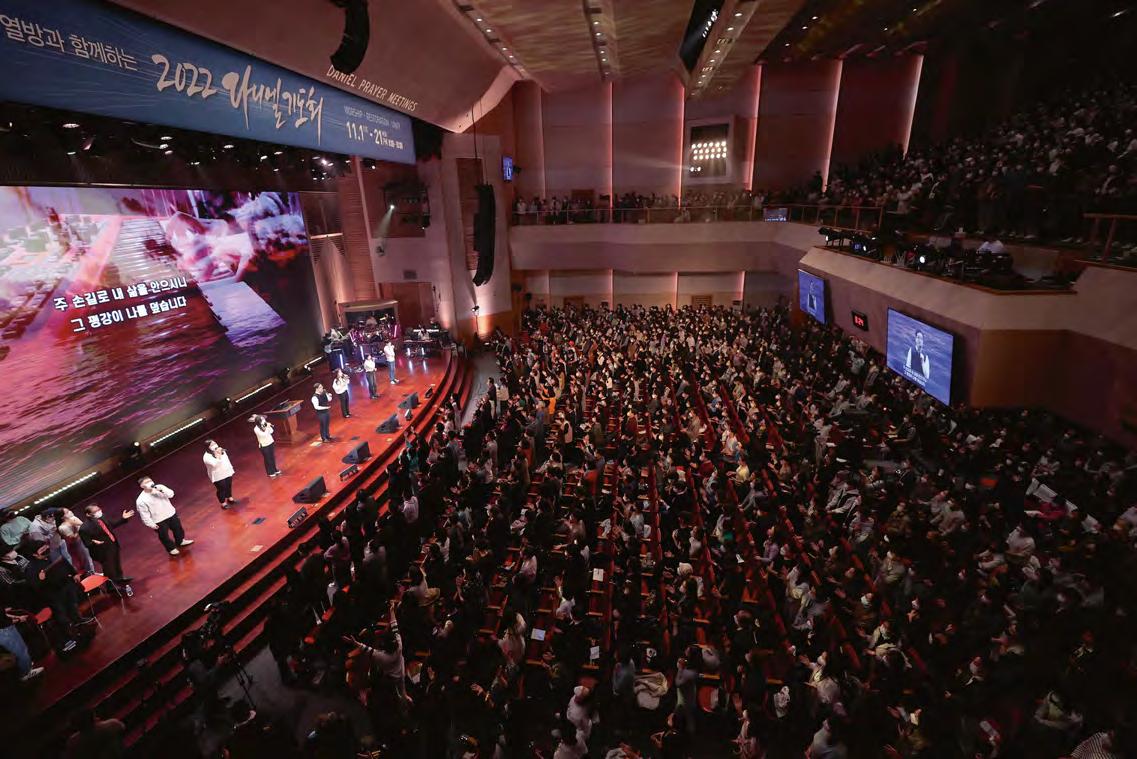
Despite Seoul’s streets being awash with believers and an abundance of churches, Oryun stands out as a remarkable, if not iconic, place. However, the main sanctuary occupying three entire floors of a 10-storey tower became a redundant venue when Covid-19 made landfall in the South Korean capital. The Covid restrictions and rules that dictated most faithful congregants across the world having to tune in at home to experience their Sunday services on YouTube or Facebook, also applied to OVC. Fortunately, the landmark within the Olympic Square district was
channels as well on the internet. With Covid-19 restrictions eased then lifted, Oryun welcomed its regular 12,000 congregants to Sunday services once again. However, the church has significantly increased its membership by streaming three weekly programmes via the CBS channel on cable TV. “The potential to increase the number of online followers was all too evident,” explains CEO Yeon Woo Kim from the consultancy, Aimed.
Kim was commissioned to design and install a new broadcasting suite into the church’s basement level. “Following approval, we were scheduled to commence our works following the conclusion of the busy Christmas schedule in late December 2022. Previously trading as S3 Global, Aimed tuned into the wishes of the senior pastors. “The senior pastor harbours a vision for Oryun to be the leading church in Korea for broadcast, so we had to carefully execute a design that would not look out of place on KBS [Korean Broadcasting Service], for example.”
Initially specialising in audio, Aimed has transitioned more towards video technologies in recent years. Having earned his stripes at Sovico and Tech Data for many years, Kim is well connected within the South Korean HOW community. “The church demanded broadcast quality for their productions and that is why there is a large inventory of Sony and Ross Video equipment included here at Oryun. Additionally, the engineers
were familiar with these brands’ technologies and interfaces. Add the rock-solid reliability of the brands to that and it was an obvious choice to draft this specification together with DiGiCo digital audio mixing and grandMA3 lighting control surfaces.” Upon entry into the live studio, it is hard to imagine that you are in a church. One half of the space hosts a 3m x 3m x 4m (DxHxW) virtual white room served by an Epson EB-L630U
Compact, powerful and unobtrusive, NEXO loudspeakers combine even coverage and full range sound with excellent speech intelligibility to create the perfect system for worship spaces. Find out more about spreading the word at nexo.sa.com
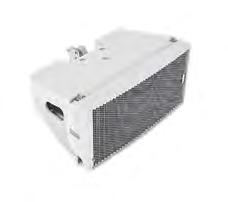
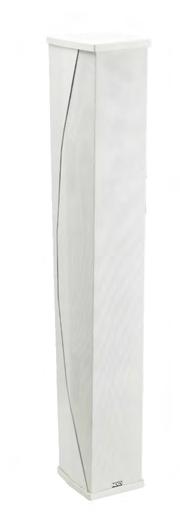




Thinking. Inside the box.

projector. Directly opposite, a curved 10m x 2.7m (LxH) 1.5mm pixel pitch LED wall is used as an impressive high-resolution backdrop for many of the scheduled programmes. Scripts recited from autocues are captured in 4K on EFP (Electronic Field Production) cameras, including Sony ILME FX6 digital camcorders. Connected to Ross Cambots, three Sony HDC-3500 4K cameras transmit their 12G-SDI signals from dedicated HDCU-3500 control units to a Sony XVS-G1 multiformat video switcher in the main control room.

The resultant transmissions are routed over fibre from the five Sony cameras in addition to a Minnray UV570 PTZ camera to the Sony video switcher connected to an AJA Kumo panel. Interfaced to an AJA Kumo 1616-12G-SDI matrix, the producers have full remote control and monitoring capabilities at their
fingertips. The processed signals are output from the matrix to prompters, preview monitors, respective panels and a 65-inch multiview LED.
Three Ross Video AMX-8952 4K UHD 12G-SDI distribution amplifiers accept audio signals from the DiGiCo S21 console and Sony switcher. As an openGear solution, the amplifiers convert and route the signals into HD/3G/6G/12G-SDI infrastructures to the Sony XVS G1 panel, a Novastar H9 video processor and the DiGiCo S21 audio console over MADI. Powered by dual K4.2 and K8.2 amplifiers, the resultant audio output is played out on Chris System ceiling-mounted 6.5-inch coaxial loudspeakers and K12 floor wedges in the live studio.
The broadcast standards are repeated throughout, including the dressing rooms used by the pastors and presenters prior to a broadcast. The grandMA3 lighting console serving the main studio is connected
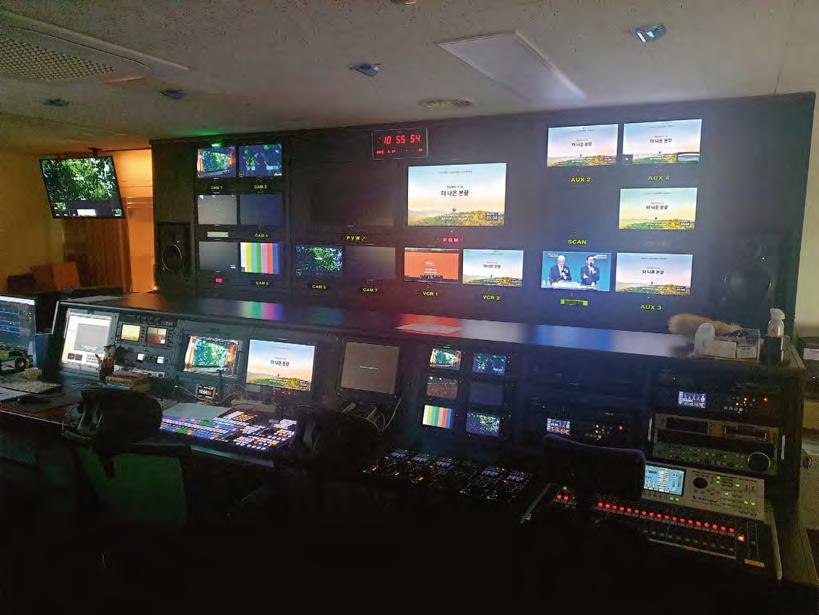
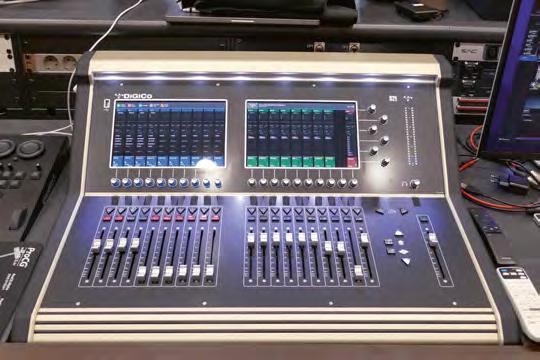
over the DMX network to 40 lighting fixtures with barn doors. The camera crew and technicians fitted with Clear-Com wireless beltpacks and headsets communicate digitally with the programme producers over a Clear-Com DX410 base station.
Enhanced by UA844+ SWB signal boosters, the spotlighted talent is
equipped with Shure QLXD4 wireless transmitters. A combination of Yamaha NS10 and Genelec 8331A monitors provide studio playback. Sourced audio and video transmissions can be transmitted to a rear recording studio equipped with an AKG C414 microphone for vocal recording and podcasts. Serving
as the main interface, a wall panel incorporates eight mic inputs and eight outputs together with SDI I/Os and dual Behringer Powerplay personal monitor connections. Capable of hosting Dolby vocal recording, the engineers have access to Avid HD Series and RME Fireface UFX+ interfaces, dual Warm Audio WA-2A levelling amplifiers, dual Universal Audio 6176 tube preamplifiers, API analogue preamps and a TC 8210 reverb. Neumann KH310 speakers provide accurate monitoring.
Ultimately, a late February deadline to conclude the works proved over ambitious. “We had not factored in the ongoing supply chain disruption and the inevitable late deliveries that formed vital components of the schematic jigsaw,” explains Kim. Opening its doors in late April, Oryun’s talent now glides through the main studio and a connecting corridor to the backstage area where they can prepare the delivery of their message to the world beyond Olympic Square. Captured on 4K cameras and illuminated by LED fixtures, extra attention is now taken for makeup and hair.
Signifying a focused AV standard within the HOW community, Aimed “aims” to extend its credentials deeper amongst the South Korean church fraternity. Having executed a broadcasting studio that will propel Oryun’s membership beyond the sanctuary to an exponential audience, this glowing reference has placed Aimed firmly on the network. www.oryun.com

For more than 75 years, JBL Installed Audio systems have defined the sound of the world’s most iconic concert halls, houses of worship, corporate spaces, and every venue in between. The JBL Professional Control Contractor series offers a complete range of surface-mount, in-ceiling, in-wall, line array and outdoor speakers to fit any architectural or aesthetic requirement. When you choose JBL, you’re not just choosing a product, you’re choosing a long-lasting partnership built on expert guidance, exceptional support, and a shared commitment to your success.


ST MARTIN DE PORRES CATHOLIC
church was founded in 1970 when Cardinal Timothy Manning established a new parish in Yorba Linda, California. As the St Martin de Porres parish grew to over 2,000 families and the city population swelled to 29,000, the need for a new church building became a reality in 1982. Today, the church has the capacity to hold around 700 parishioners in its weekday and weekend services, with Mass livestreamed to YouTube every day of the week.
During an audio upgrade at St Kilian Catholic church in Mission Viejo, about half an hour away from Yorba Linda, members of St Martin de Porres met with the founder of AV Technologies, David Lusk. “They saw what we were doing at St Kilian with their new audio and video streaming systems and asked me if I’d be interested in carrying out a similar upgrade at their church,” says Lusk.
Happy to accept his next project, Lusk began working on the St Martin de Porres installation in mid-2020. The video streaming part of the installation went well – Lusk installed a PC-based streaming system with two Lumens IP-based PTZ cameras, one pointing down the middle of the church and the other looking down a side angle. “The audio side of things started out
Despite the challenges, Lusk specified an Active Audio system consisting of two StepArray SA180P vertical columns and a single dual 15-inch subwoofer flown to supplement the low frequencies. The entire system features Active Audio’s NUT processor to handle the digital beam steering, and Linea Research amplifiers. “We were able to get on top of the reverberation with the new system, but still felt some type of sound panels to help reduce the reverberation time even more would be helpful.”
However, at that point, the installation took on a new set of problems. Around six months after the new Active Audio system had been fitted, the church started making cosmetic changes to
during Covid, so they took advantage of the church being closed to start upgrading the interior look,” describes Lusk. “They started by pulling the carpet out and putting in marble everywhere. The entire floor was marble, and they didn’t stop there –they added a marble topped altar and podium, and ended by building a façade surrounding the entire altar area. It was gorgeous, but it was just so reflective. The entire church became one giant sound mirror.”
Lusk describes the most challenging part of the process was that the changes were done in phases – the marble first, then the changes to the altar area and then the new façade. And after each phase of adjustments,



tighten down the frequencies on the speakers as much as he could to manage the additional reflections that the cosmetic changes had made. “To begin with, after they’d installed all the marble and services were still being held outside because of Covid, it wasn’t until people were allowed back in the building that they realised how bad everything was. But they kept making changes and after about three visits to try and retune the Active Audio system, we got to the point where we couldn’t do any more with the speakers – sound absorption on the walls and ceiling became the only option.”
“Around that time, we were posed with nearly a 4s reverb time,” adds Jeff Miranda, national sales manager at
Active Audio column speakers have overcome the odds at St Martin de Porres, despite multiple changes to the sanctuary’s layout
but added to the reflections
Allied Professional Technologies, the exclusive US distributor and importer for Active Audio. “The changes had made the space more live – you could be in one corner of the church whispering to someone and a person on the opposite side could hear what you were saying. The church even suggested that we move the speakers or go back to having overhead units,
Originally, the sub was flown above the centre of the Active Audio speakers but when the whole altar area was redesigned and the ceiling was opened up – creating even more reflections –the sub needed to be relocated. “We had to put it down low and hide it in the pillar that they had built into the façade and it became a side-firing subwoofer,”


built to fit within the space beneath the side pillars.
“Looking back on it now, this was a fun church,” laughs Lusk. “It was constantly changing and incredibly frustrating because we weren’t aware they were making these changes until they’d ring me up and ask me to come back and fix the sound. They wanted a
very ornate church – they want people knowing that they’re in God’s house. And the greatest thing is that you can hear the spoken Word now. The speaker design along with the sound panels made a huge difference. It looks and sounds stunning.”


“We always felt from the start that the room required acoustic treatment,” concludes Miranda.
“The Active speakers did their job of providing smooth and consistent SPLs throughout the space – with everything that happened, minor adjustments to the StepArrays, paired with acoustic treatment, have provided the church with a sound system that blends right into the space and provides consistent sound pressure levels throughout the entire sanctuary. The acoustic treatment helped with the acoustical anomalies and made for a much better intelligibility. Having gone through so many changes, the StepArrays worked flawlessly, which speaks volumes about the flexibility and power of the Active Audio system. The parishioners are incredibly pleased with how everything has turned out – it’s such a beautiful space now.”
www.activeaudio.fr
www.alliedprotech.com
www.avtechnologiesinc.com
www.smdpyl.org
These elegant 2-way column speakers provide highly intelligible sound, especially for speech but also for music because of their design which also incorporates a tweeter. Their strikingly slim design not only integrates into any interior aesthetically but can also be used outdoors as they are IP66-protected in a weatherproof housing and provide clear announcements over longer distances. With their wide horizontal and narrow vertical dispersion patterns, the speakers can also be installed in acoustically difficult environments.

www.toa.eu | TOAEurope | TOA Electronics Europe

We supply sound, not equipment.

The video systems, specified to provide for streaming of services from the church to its widespread congregations, have also provided a flexible closed circuit TV solution within the building. Four AVer PTZ cameras cover the principal views of the sanctuary as well as providing shots of the congregation and activities in the nave.
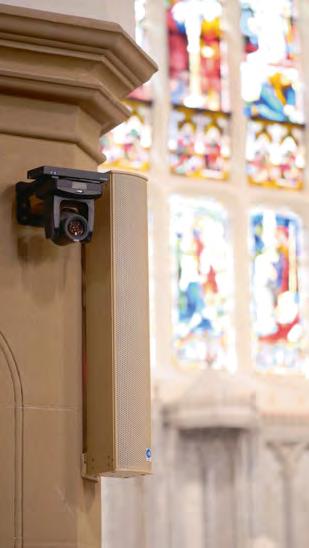
The systems installed have provided enormous benefit to
STANDING
centre of Goulburn, Australia’s first inland city, is St Peter and Paul’s Old Cathedral, said to be the world’s only greenstone church. Its unique and striking sea green façade is a product of the rare green porphyry stone quarried just outside the city. Now, a century and a half later, the Old Cathedral has completed a decadeslong, AUS$12m restoration which has not only returned the fabric of the building to its original glory but also brought it into the 21st century with a Renkus-Heinz IC8-RD digitally steerable line array loudspeaker system and a network-based control, distribution and AV streaming solution from WyreStorm.

As the restoration of the magnificent Gothic church moved to the interior works phase, the project sought advice from Amber Technology. “We were contacted quite early in the process to give recommendations on the system design, specifically around the speakers, as cathedrals are very difficult acoustic spaces and Renkus-Heinz is the market leader in that space,” recalls Scott Riley, from Amber’s technical sales and support department.
Following the initial design, the complex task of fitting out the heritage-listed building fell to the Canberra office of MNGD. As with
many projects in heritage structures, one other consideration was paramount: both equipment and wiring had to be unobtrusive – and preferably invisible. Here again, the speakers were able to meet the exact architectural requirements.
camera system (AVer) that was used for streaming services, as well as for overflow screens (Newline) on trolleys.
By using the NetworkHD AV-over-IP system, Amber was able to provide a fl exible solution with simple control so the church could position

WyreStorm’s AV-over-IP solution was chosen with Amber specifying its NetworkHD 400 series due to its versatility, expansion and control capabilities. The NetworkHD 400 series allowed easy distribution of the
the trolleys anywhere and still have access to all the sources in the space, but allow staff to clear the space of screens when not in use to maintain the beauty of the cathedral.
record services in high definition through an automated video streaming service.
www.renkus-heinz.com
www.wyrestorm.com
The MI-58 Series digital IEM system has been praised for its wide 20 Hz ~ 23 kHz frequency response, extremely low audio latency, and delicate sound. No matter vocals or musical instruments, the MI-58 system offers crystal clear sound and great hearing experience.
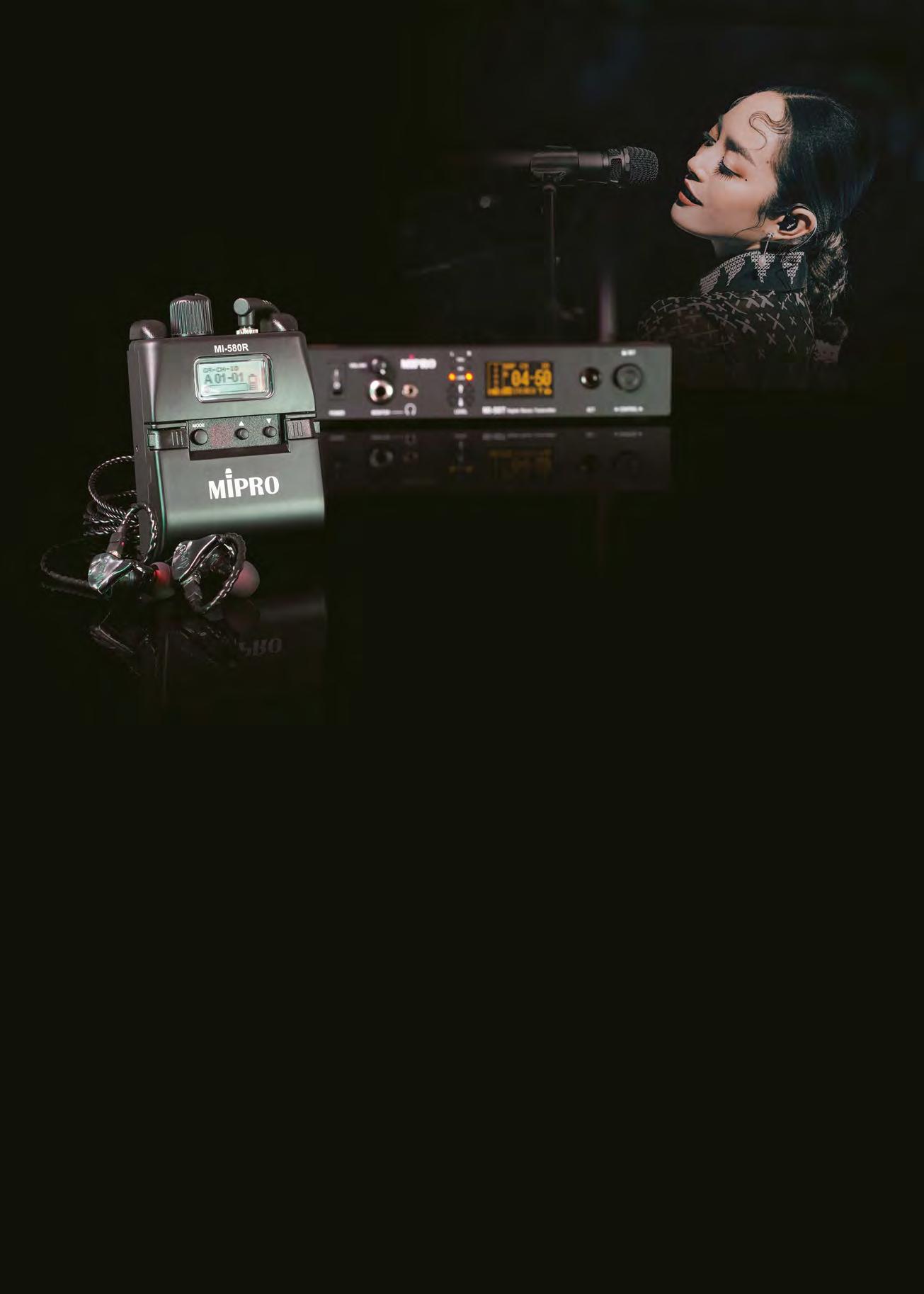
Now MIPRO expands the system with the new MI-580R stereo bodypack receiver. While the MI-58R receiver is powered by one Li-ion battery, the MI-580R is powered by either two AA batteries or one Li-ion battery, conveniently charging via USB Type-C. Both are compatible with the MI-58T and MI-58TD transmitters. The system also offers an ENG MODE, giving sound engineers full control over every live performance.
MI-58R / MI-580R
● Stereo / Mixed mode
● L / R AF balance
● 4 equalizer modes
● 18500 Li-ion rechargeable battery (MI-58R)
● AA batteries / 18500 Li-ion battery (MI-580R)
● USB Type-C charging port for 18500 Li-ion battery (MI-580R)
MI-58T / MI-58TD
● 12 channels (Group A) and 64 ID codes

● Dual earphone monitoring connectors
● Easy-to-read volume indicator
● Two 6.3 mm loop outputs
● ACT-BUS networking interface
● Dante ® interface (MI-58TD)
Following complaints from worshippers, Our Redeemer Lutheran Church has fitted a Listen Technologies Listen EVERYWHERE audio-over-Wi-Fi system to improve the experience for hearing-impaired worshippers

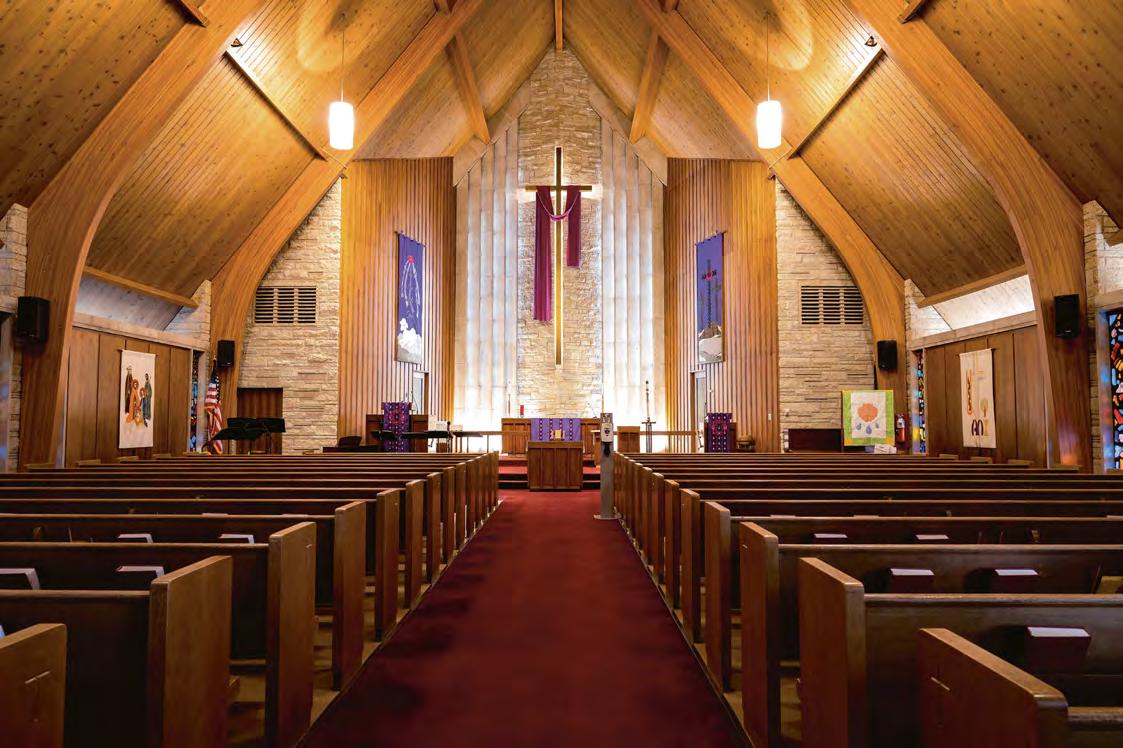
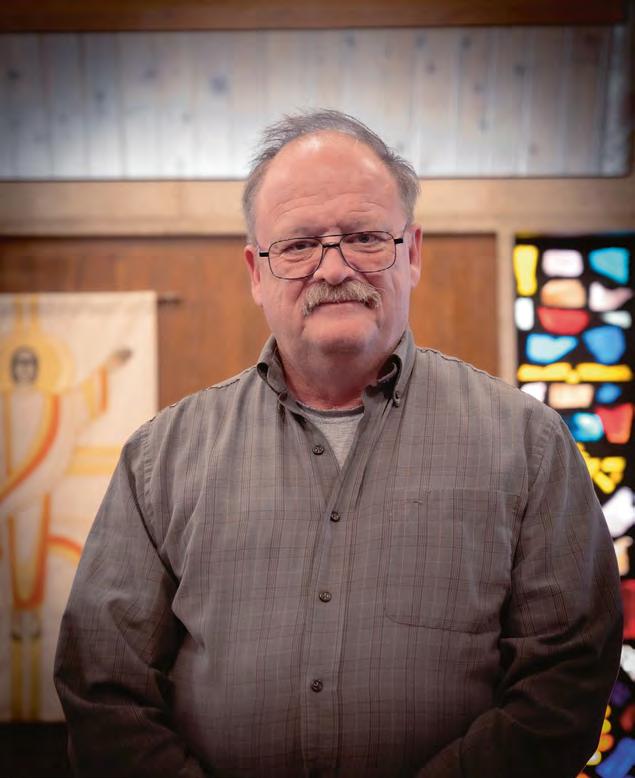
OUR REDEEMER LUTHERAN CHURCH IS a congregation of the La Crosse Area Synod of the Evangelical Lutheran Church in America (ELCA), located on the south side of the city of La Crosse in Wisconsin. Serving the community for nearly 75 years, the HOW averages between 75 and 90 regular attendees each week.
Ed Klein is a retired telephone technician who worked on large-scale voice-over-IP phone systems and is well-versed on the internet, IP and setting up networks. He’s been a
church, there was an old PA system with three wired microphones and four speakers. “At the time, the sound quality from the PA system was adequate,” he explains, “but, in terms of hearing assistance for those that needed it, we had an old analogue 900MHz wireless device with five small beltpacks that users could slip into their shirt pocket and earbuds but, being analogue, it was subject to static and outside interference.”
Complaints started coming in several years ago and it was when three of the five analogue beltpacks failed to work that the church started to consider that it was time for an upgrade. “However, the thing that really drove us to change the system was that someone moved into one of the houses close to the church with a baby monitor, injecting unwanted audio into the old hearing assistance system,” continues Klein. “We had earlier upgraded our PA system so the officiants could wear wireless devices and we could have more than three microphones. We had also added some new equipment at the start of the pandemic so we could livestream our services. But a few months ago, people started approaching me about upgrading the
Having committed US$22,500 towards upgrading the church’s PA system, unfortunately the budget to also change the hearing assistance devices was unavailable. “It fell by the wayside for a while, and no one said anything about it until people started coming up to me and saying that it sounded
Following a lightning strike on the church and damage to the PA system, Klein turned to Tri-State Sound & Light, a local company he has trusted for a long time. Tri-State owner Tom Speropulos came in with test equipment and was able to tweak the levels of the audio equipment

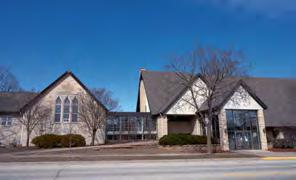
and improve the sound quality compared to when it was originally upgraded. “When we were looking to change our hearing system, Tom suggested Listen Technologies and its Listen EVERYWHERE audio-overWi-Fi system. I was so confident in his recommendation that we didn’t consider any other brands. His knowledge of the AV industry is pretty extensive, and he believed that our congregation would find the Listen EVERYWHERE device the easiest to use. And it was so simple to install –
within a couple of hours of pulling the wires and tying it into the audio system, it was up and running. It’s literally plug-and-play – once you put in your IP address, it’s ready to run.”
The church has two Listen EVERYWHERE receivers that anyone can use during the ser vice or parishioners can download the free app and connect to the Wi-Fi server using their own smartphone. Signage is also provided to make worshippers aware that an assistive listening system is in place in the church. “The first woman to use the
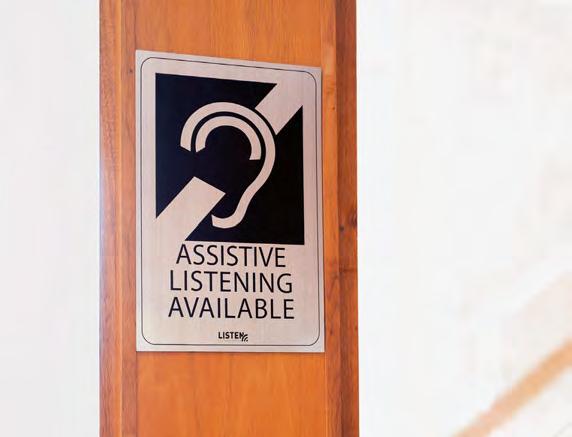
new system handed me her phone so I downloaded the app and connected it for her, handed the phone back to her and she came to me at the end of the service and said she could hear every word – and, more importantly, she could hear the music.” Another gentleman with severe hearing loss thanked Klein for installing the system and commented that he hadn’t been able to hear that well for more than 11 years.
Klein also reports that new hearing system has given people the courage to return to the sanctuary rather than following the livestreamed service at home. “One person I know of was watching the service at home as his TV would interface with his Bluetooth hearing aid. But now he’s back with us in church every week.”
The only issue the church encountered during the setup phase was the wireless router, which was in a separate room at the front of the sanctuary and located about 20m from the back of the sanctuary – too far away for worshippers at the back to receive the signal. “The router was in possibly the worst position in the church, so we went out and bought an extender and now you can sit anywhere and get perfect coverage.
“Everything is so much better since we moved away from the analogue
unit,” concludes Klein. “We don’t have the static; we don’t have the interference and the audio levels are so much better. With the old analogue beltpacks and earphones, there was a lag of around 7s between the pastor speaking and people hearing what he was saying.”
The Listen EVERYWHERE setup has also allowed Our Redeemer Lutheran Church to refocus the content of its services. Klein reports that the HOW is starting to move away from a traditional Lutheran structure to a more contemporary feel. In months that have a fifth Sunday, and periodically on other Sundays, the church’s contemporary music group – Solo Gratia – plays during the service. “The contemporary music is also helping bring in younger members of the congregation,” says Klein. “The new audio system has made a big difference, the livestreaming equipment has made a big difference and so has the new hearing system. Combined, the AV setup is helping keep everyone engaged with services and they’ve all helped improve the quality of the experience that we provide.”
www.listentech.com
www.tristatesound.com
AS CAIRO HAS BEEN GRADUALLY expanding east with the development of the New Administrative Capital on its outskirts, a number of grand buildings have begun to occupy this new skyline. Serving as Egypt’s Islamic Cultural Centre in the new capital, Masjid Misr takes this grandeur to unique levels. One of the largest mosques in Africa, the 19,100m2 complex houses a 9,600m2 mosque nave that can accommodate 12,000 worshippers, three separate domed entrances (as well as a fourth used purely for services) and a 60m-high main dome spanning a diameter of 29.5m. While aesthetically pleasing, the very high ceilings combined with large marbled walls create a cacophony of audio issues. Typically, this would be solved with a distributed speaker system, yet that approach introduces its own set of challenges.
Hoping to avoid this, systems integrator Audio Technology opted to go in a new direction, installing Holoplot X1 arrays for the first time in a major house of worship.
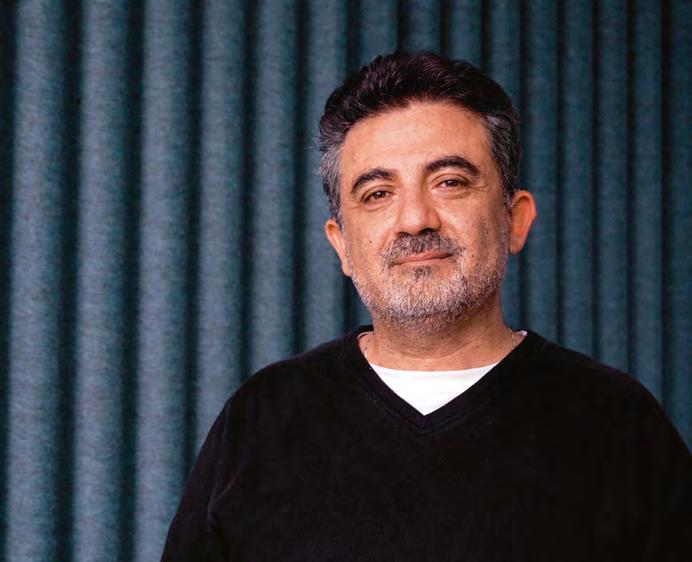
necessary areas with just nine discreetly placed X1 arrays – six positioned on the front wall, two on the dome base and one to cover the rear. This is a 70% reduction in
perimeter of the central worship area that spans 93m x 18m (LxW).
The X1’s 3D Audio Beamforming capabilities allow for sound to be contained within defined zones,
which enable the creation of “sound corridors” extending up to 100m in length with minimal spillage –perfectly suited for the mosque’s long corridors. To optimise intelligibility further, all areas not regarded as listening areas or areas that could cause reflections are designated as avoidance zones within the Holoplot design software. Two 4x2 X1 arrays situated on the far left- and right-hand side of the building create the coverage corridors without producing any drop in level over the 93m-long distance. Positioned further inwards on either side of the entrance, the frontal system consists of X1 arrays in 3x1 and 2x1 configurations. This element covers the frontal congregation space, with tailored beams to avoid the mihrab and minbar. The first wavefront draws localisation to the front wall, avoiding feedback and interference echoes. A further two X1 arrays in a 2x2 configuration fixed at the dome base provide coverage for the audience area underneath, while


one concealed in the ceiling covers the rear. Despite mounting positions of 23m high, the arrays are still able to achieve a high direct-reverberant ratio and speech intelligibility.
While not measured directly, the installed system had to handle an existing reverberation time of approximately 6s, caused by both the marble interior and massive dome. But by managing to not excite the reverberant field – directing energy away from reflective surfaces and preventing the need for large amounts of acoustic treatment – the teams were able to deliver an STI of between 0.5 and 0.69 to 90% of standing and kneeling positions, each targeted area being served by at least one speaker module.
“There were a lot of ideas explored inside Masjid Misr that were entirely new,” recalls Holoplot’s Emad El-Saghir, who worked closely with the Audio Technology team both remotely during the design stages and physically onsite for commissioning. “It’s not only
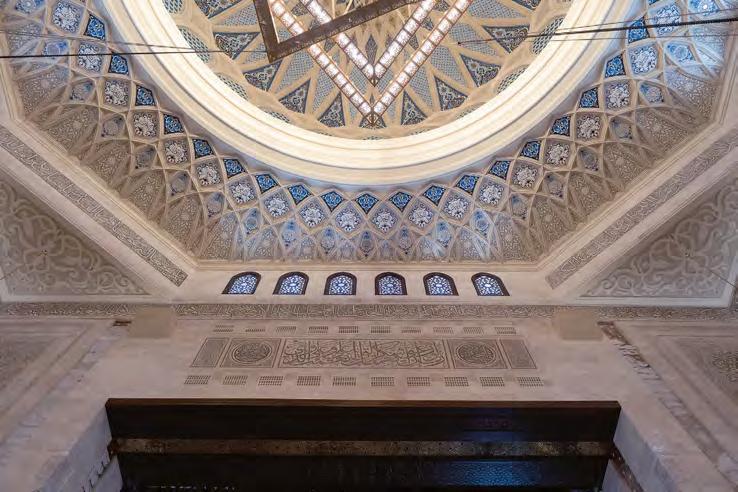
new technology, but a new way of implementing that technology in such a venue. We approached the project consultants and introduced the technology and its advantages. They were impressed, and later when they became involved with the mosque, were keen to explore this approach further.
“Our solution is very different from typical cases and classical technologies and methodologies that are already well-established. So, we provided extensive evidence of our approach through data simulations. It showed that the proposed solution could solve all of the issues raised by the stakeholders, including the architect. The interior of the room is a masterpiece and they wanted to keep it intact.”
In order to physically conceal the X1 modules, specially crafted metal screens and acoustically transparent painted cloth were used to ensure the speakers are invisible to worshippers. “The
in both the horizonal and vertical planes means that we can go as high with the installation as we wish, way higher than a digitally steered array could, which is limited close to ear height,” notes El-Saghir. “By placing the arrays high, we could reduce
of challenges, starting from the size of the mosque, the room acoustics and, of course, project deadlines.
Thanks to the X1’s ability to not only control sound in the vertical but also horizontal, it achieves unbelievable intelligibility, thought impossible in a space clad in marble and featuring a huge dome at its centre.”
“Audio Technology is highly capable and despite it being their first Holoplot project, I was impressed at how fast they made themselves familiar with the system,” concludes El-Saghir. “I conducted training sessions with them remotely – the early stages of the project were happening during Covid times –and although the arrays were installed in very tight and awkward positions, they were able to integrate everything quickly, neatly and in harmony with our instructions.”
Despite El-Saghir’s assessment that the Holoplot solution sets a new path for houses of worship, not all worshippers are blessed with having Africa’s biggest mosque in their backyard. The company, however, has just unveiled its smaller X2 array which brings the same beamforming capabilities in a more compact format.


“The ability to hide the arrays inside the walls, the high ceilings and the marble throughout in a mosque of this size made it ideal for the X1. In smaller rooms, I would say the X1 is still a good choice

was a very important incentive for the architect.”
Emad Shenouda, projects director at Audio Technology, sums up the team’s experience working with the X1. “Together with Holoplot, we met the client’s brief of creating a fully integrated system that satisfies all stakeholders. The project was full
for smaller houses of worship. It has the same features and is optimised for speech applications. The smaller form factor means it can be easily integrated into everyday interior design.”
www.audioteceg.com
www.holoplot.com
SamaSound has installed a Martin Audio WPS line array at the 3,000-seat Sunlin Good Samaritan Korean Methodist Church
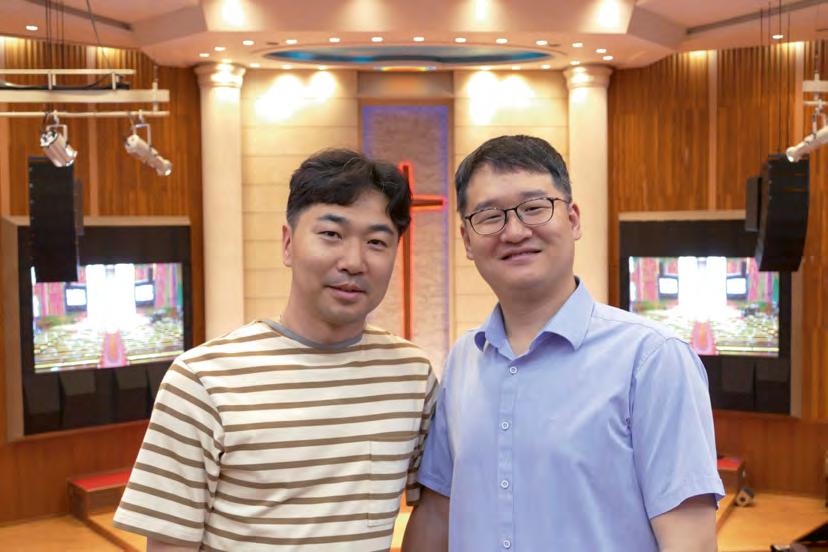

STARTING CHILDREN ON THE right path is the basic aim for all religious institutions. Located in Incheon, Sunlin Good Samaritan Korean Methodist Church is no different. The multistorey church attracts increasing numbers of worshippers to its four weekly services, and a new wing recently opened adjacent to the church will ensure that the youths and children will grow older appreciating good audio.
Showing signs of age and fatigue, a decision was made to upgrade the audio system in the main sanctuary in 2022. Further to a successful demonstration and a tender bid, SamaSound was nominated to install and commission a Martin Audio WPC line array loudspeaker system in the 3,000-capacity sanctuary. “The previous point source loudspeaker system was prone to reverberation, and intelligibility was degrading,”
For over twenty years d&b has been helping church audio teams achieve the same high-quality sound for every member of their congregation. This is Democracy for Listeners in action: a belief that sound should be equally experienced by all. A unique and unifying energy for expressing daily acts of love.
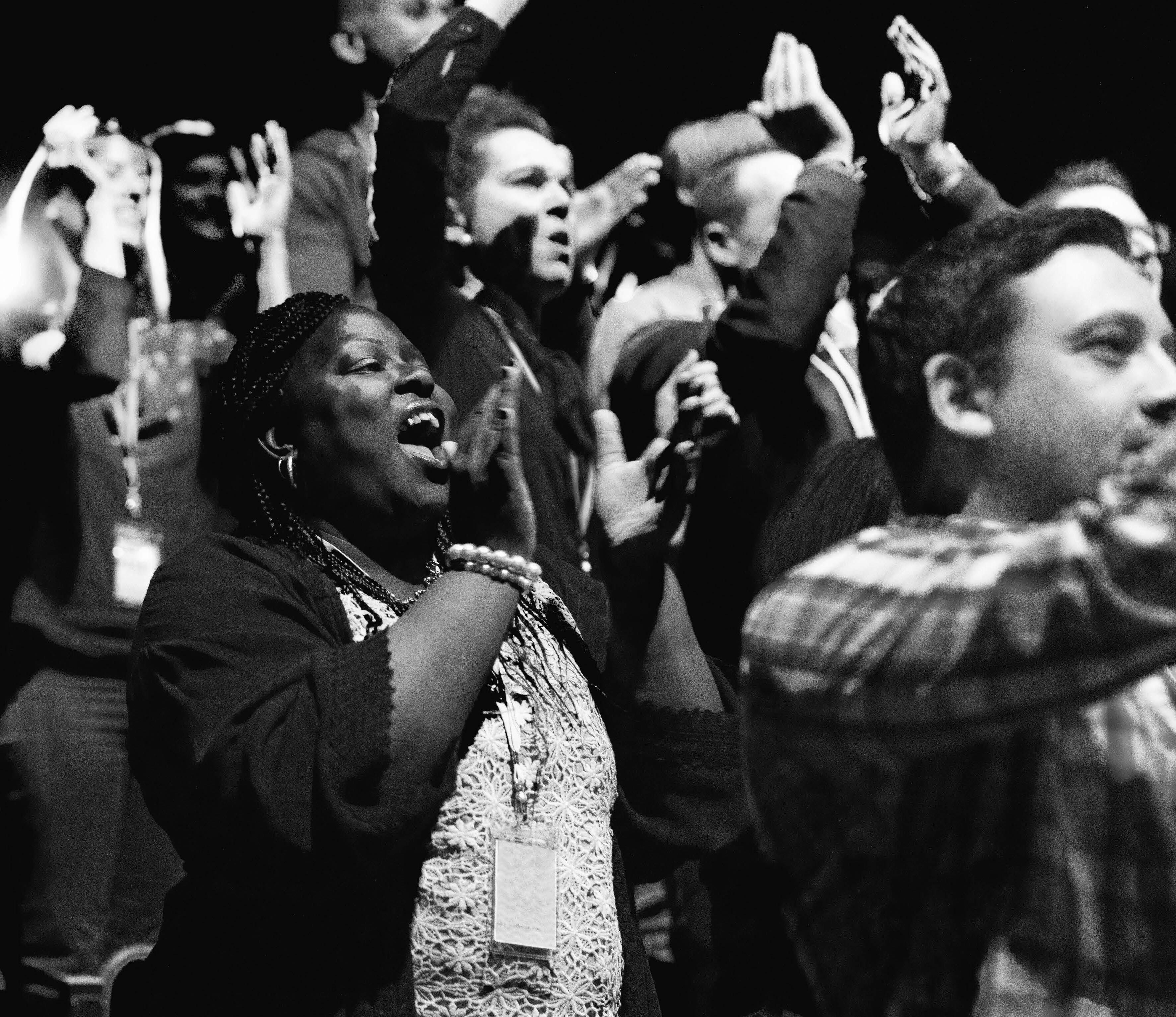
SamaSound product manager Edan Kwon evaluates. “The church had adapted the enclosures as a flush wall-mounted solution, but even coverage was not possible across the wide sanctuary with extensive balcony seating.”

Having conducted EASE evaluations of the room, SamaSound proposed a Martin Audio WPS three-way passive, dual 8-inch compact line array as the main loudspeaker system. “Owing to continued supply chain disruption at that point in time, we demonstrated an eight-per-side WPC system in the church itself,” adds Kwon. “The church was so impressed with the WPC demo, they unanimously decided on installing the very same demo setup as a permanent solution within the sanctuary.”
The WPC is a slightly larger dual 10-inch three-way design, which also features scalable resolution optimisation for advanced array control, resulting in improved coverage, consistency and control. Serving the midrange, dual 5-inch drivers together with four 0.7-inch HF compression drivers married to individual horns are physically separated, resulting in less distortion and a more extended HF response. Capable of producing a peak SPL of 135dB and exerting 100° of horizontal constant directivity pattern control, eight-per-side L-R hangs deliver sufficient coverage to all the sanctuary seats. The two hangs of WPC arrays are augmented in the lower frequencies down to 35Hz (±3dB range) with the addition of suspended L-R SX218 dual 18-inch subwoofers directly behind. Owing to the comprehensive and effective coverage afforded by the WPC arrays, just four wall-mounted Martin Audio CDD8 8-inch point source speakers powered by a single LEA Professional ConnectSeries 704 amplifier were required as choir and side-fill delay speakers.
The entire WPC and SX218 FOH components are powered by five Martin Audio iKON iK42 four-channel power amplifiers. The incorporation of Martin Audio’s proprietary Display software interacts with DSP that can in turn be monitored via Martin Audio’s VU-NET software network control. Hosting analogue, AES3 and Dante digital audio network inputs, the dedicated controller amplifier provides multichannel amplification up to 20,000W total output.
Located in the upper-level control room, SamaSound also supplied the Allen & Heath Avantis digital console. Bridging the gap between the SQ and dLive formats, the 64-channel
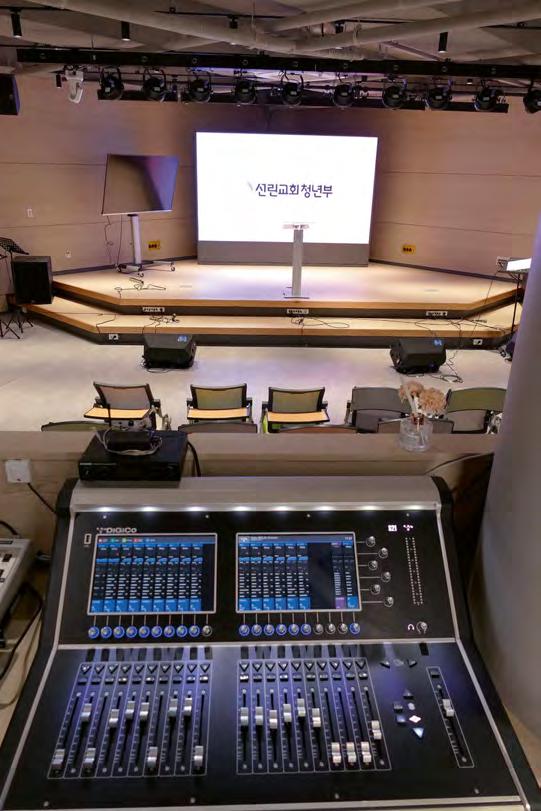
configurable bus configuration with extensive I/O options and a dPack software upgrade package for optional dLive processing. The Avantis control surface focuses on two Full HD touchscreens and their corresponding rotary controls.
“The Avantis console was selected as the church technicians found it easy to use and the platform comprises ample capacity for future upgrades should the church require it,” explains SamaSound project manager and engineer, Hong Geun Kim. “With its intuitive GUI, it’s very easy to use to the extent that we didn’t really require any training.”
With Continuity UI, the church technicians can manage a seamless flow between the physical controls and the onscreen software, such as gains and pans on the rotaries, then at the touch of a soft key switch to EQ or dynamics across the whole strip. The console also provides a configurable FastGrab tab on the right-hand side of each screen, offering an alternative route for accessing the control of aux sends, EQ, compressor and effects on a selected channel or spot channel.
For local I/O, Avantis is equipped with 12 XLR analogue inputs, 12 XLR analogue outputs plus AES (stereo in, two stereo out) connections. Expanding the scope for FOH/ monitor splits, two additional I/O
ports can be utilised for inserting any of the full range of current dLive option cards, including Dante (64x64 and 128x128), Waves, gigaACE and MADI. As such, the church is equipped with Dante-ready networks but, owing to supply chain problems, currently awaits the arrival of the Dante modules, which will enable the church to record multitrack services when desired. Operating within the UK manufacturer’s Everything I/O ecosystem, Avantis is connected to 48-in/16-out GX4816 and DX168 audio expanders at stage right. The Avantis console is connected to six Allen & Heath ME-1 personal monitor systems. While the musicians prefer the accuracy of in-ear monitoring, the pastors preaching from their two pulpits prefer Martin Audio LE100 compact floor monitors and Blackline X12 speakers. Positioned below the stage in front of the initial row of pews and directed towards the twin lecterns, the 12-inch Coaxial Differential Dispersion speakers focus their energy levels evenly on the stage area where required. The low height wedges are powered by QSC Powerlight PLX1602 amplifiers.
Selected for their audio quality and reliability, Shure QLXD1 bodypack and QLXD2 handheld transmitters transmit their UHF signals from the stage to QLX-D2 wireless receivers with no dropouts or interference. The signals are boosted throughout the venue courtesy of dual UA874 antennas and UA844+SWB antenna distributors. “With its high spectral efficiency and wide bandwidth, QLX-D turned out to be the ideal solution,” adds Hong Geun. “With Ethernet connectivity, the QLX-D was simple to set up and we could effortlessly connect all the
main sanctuary via Category cabling. Youths are welcome to the Vision Hall which consists of ceiling-mounted L-R Martin Audio CDD-Live 15 cabinets, with the 15-inch coaxial drivers rotated according to the orientation. The self-powered coaxials are augmented in the lower frequencies by dual floor-mounted XP118 subwoofers. Shure ULXD wireless mics used by the leaders and singers are mixed on a DiGiCo S21 console and output to the selfpowered PreSonus Air12 and Air10 choir and pulpit monitors onstage.
deploy them to the transmitters with the IR sync function. This solved a lot of our audio interference issues.”




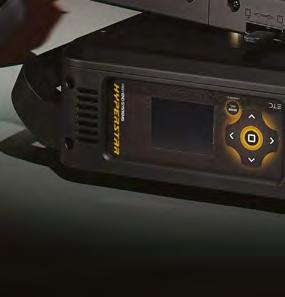
Shure microphones feature extensively, including dual MX418D/C goosenecks in both lecterns. The choir area to the left of the stage is equipped with four ceiling-suspended KSM137 condensers and the percussionist is equipped with a variety of models, including an AKG C1000S on overheads and Shure SM57s on toms and snare. The grand piano is served by a RØDE NT4 microphone and a further pair of NT2 condensers are used by the choir and musicians.

Proving that the kids never had it so good, the newly constructed Vision Centre is connected to the adjacent
Similarly, both the preschool and infants’ room is equipped with a highspecification audio, video and lighting system including PreSonus Air12 speakers, a PreSonus StudioLive AR8c console, Max Lighting LED PARs and a large 4k display. And flat white coffees never tasted so good for the church members unwinding in the Vision Centre café, where Genelec 8030 monitors provide the background music selected on a PreSonus Bluetooth monitor controller. Providing the very best to their flock at the earliest opportunity in life, the cry room at Sunlin Good Samaritan has been equipped with the same model of Finnish monitors
www.sunlin.org

Meet the High End Systems Hyperstar, a new, sensational companion to Lonestar. A powerful, compact moving light optimized for projection versatility, Hyperstar can help create uniquely beautiful designs, bringing precision and power to every stage. Hyperstar is the same size as Lonestar, and is just as bright, compact, and even more affordable.
Designers have an endless choice of breakups, aerials, radial patterns, and gobos specializing in morphing and texture. And by layering Hyperstar’s effects, an endless array of custom visuals are available to achieve your desired look.
visual environment technologies
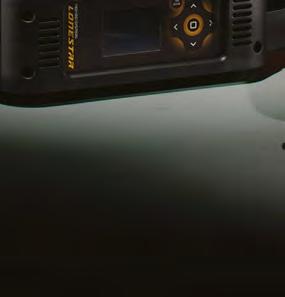
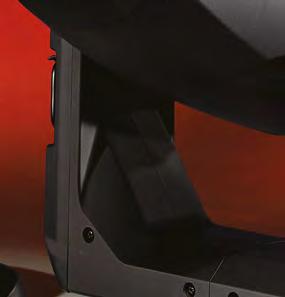

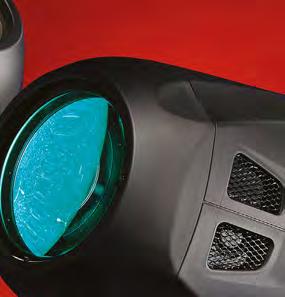

etcconnect.com
 RØDE NT2 and NT4 microphones also reinforce the pianist and singers
RØDE NT2 and NT4 microphones also reinforce the pianist and singers
microphonics and reverberant sound. In order to improve intelligibility, the speech filter was also activated.
DESIGNED BY ARCHITECT
Magaš and constructed in 1988, the Franciscan Church and Monastery of St Nikola Tavelićm in Rijeka has a unique protruding shape that resembles a dove or an ark. Having been in service for many years, the church’s existing sound system was outdated and had begun to deliver poor sound quality, facing acoustic challenges due to the large concrete interior surfaces and decorative woodcuts. To improve audio coverage and speech intelligibility, LAV Projekt proposed the installation of new equipment from RCF, Audix and Xilica.
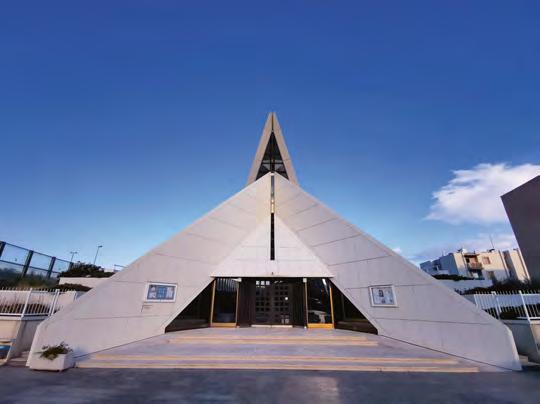
necessary to implement a solution that would enable proper sound coverage of the space, as well as high intelligibility of speech during the liturgy.

For even sound coverage across the entire space, LAV Projekt has installed four white three-way, wall-mounted RCF L2406-T column sound boxes. The L2406-T is equipped with six 5-inch woofers and four 1-inch dome tweeters placed in front of the centre woofers. This design allows coherent dispersion of sound while minimising echo. The wide horizontal coverage angle and
In addition, four RCF DM41-W two-way, wall-mounted sound boxes have been fitted in the apses above the seats and the choir position to provide a natural and smooth speech reproduction. At the entrance to the church, above the door, LAV Project selected two white two-way, wall-mounted RCF MQ 80P IP55rated sound boxes. In order to enable the client to have easier and better control over the entire system, a white RCF MR 40 sound box has also been installed in the sacristy room.
ANTDA4161 directional active antennas have also been installed to enhance the reception of the wireless microphone signals. According to LAV Projekt, “the microphones proved to be a great solution and enabled the sound system to work louder without causing microphonics”.
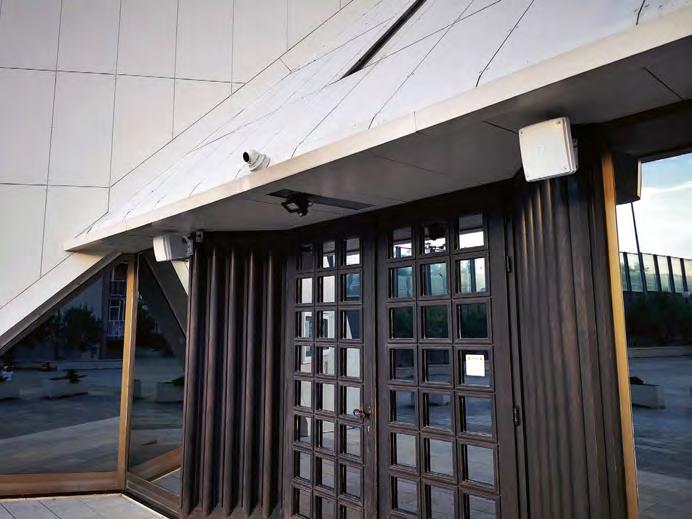
The entire audio system is controlled by equipment installed in a rack cabinet in the sacristy. The main component of the system is a Xilica A0808 Neutrino, a digital sound processor (DSP) that controls all input channels, processes the audio signal and sends it, via an amplifier, to certain zones in the church. The entire system is largely automated; for the necessary
To help ensure high-quality speech reproduction, LAV Project proposed Audix M1250BS microphones as a solution for the altar and ambo. The M1250BS comes with a supercardioid capsule which has directional characteristics and searches for sound that is in front of the microphone while at the same time reducing the impact of sound sources coming from the side. For the mobile needs of the liturgy, the integrator selected an Audix AP42 OM2A wireless microphone set, which consists of two OM2 handheld transmitters and an R42 two-channel base, one Audix HT7 BG3P condenser omnidirectional head microphone and an Audix B60 bodypack wireless transmitter. A pair of Audix
manual control, such as input channel selection, volume control and output zone selection, LAV Projekt installed a 7-inch Android touch panel with Xilica Xtouch. The panel is programmed to provide the church with all the necessary control with a simple interface. In addition to all installed devices, new cables were also laid for all positions of the installed speakers.
“The client is extremely satisfied with the results obtained with the new audio system and the ease of use, and we are proud that we were able to respond to this quite demanding challenge,” added a spokesperson from LAV Projekt.
LAV Projekt has upgraded the audio system at St Nikola Tavelićm, without damaging the church’s modern architecture

COSMO raises the performance bar for line arrays, setting a whole new standard for productivity and efficiency. Integrative and versatile by design, it delivers measurably higher effective SPL in the HF range than comparable systems.
C 6 100˚ C 8 80˚ C 10 60˚ C6 C8 C10


IN THIS PANDEMIC-INDUCED era, numerous churches have been compelled to embrace the realm of livestreaming. The main production goal of a streaming broadcast mix is to recreate the live worship experience as much as possible for the online listener.
#1 – If you want it to be heard, mic it or plug it in
When it comes to capturing everything in your broadcast mix, this is the rule of thumb. Mic each drum, electric guitar amp, percussion, acoustic piano and don’t forget to set up a pair of audience mics. Plug in anything that uses a direct box (DI), like acoustic guitars and keyboards, etc. Microphones and DIs are like ears for your broadcast mix. Just because something is loud in the house to your ears, it doesn’t mean that the broadcast mix can hear it.
#2 – Create a dedicated broadcast mix for your livestream
Do not send your main house mix to your livestream. Your main mix should be dedicated to the house only. When you’re mixing the house, you’re accounting for acoustic noise in the room. You may not choose to reinforce every instrument at the same volume. Sending your main mix to your livestream will result in an unbalanced mix for the online listener. Instead, use the auxes/busses on your mixer to create a dedicated stereo broadcast mix for your livestream.
#3 – Make use of your stereo field
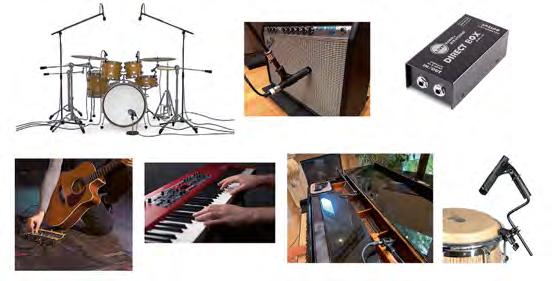
Pan instruments to the left and right of your stereo field. This helps create
delineation between instruments resulting in a wider, fuller-sounding mix. Generally, when applying panning for a broadcast mix, you’ll want to place instruments in your sonic landscape according to where the musicians are positioned onstage. The spoken word should always be mixed up the centre.
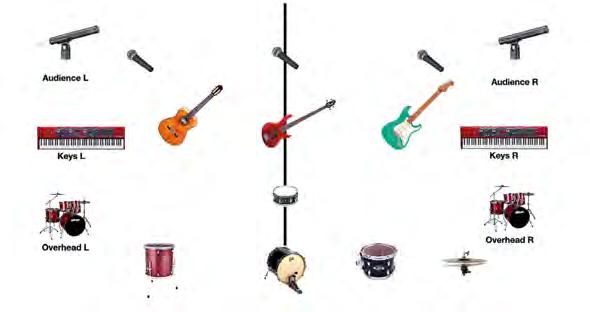
#4 – Pay close attention to the amount of effects in your broadcast mix during worship
When used in the proper amount, effects – like reverb and delay – will create the feeling of being in the same space with the audience. If you’ve listened to your mics in the broadcast
mix without effects, you’ll find they’re very dry and in your face. As you’re listening to your dedicated livestream mix, use your ear when adjusting the FX returns for your broadcast. You don’t want your band to feel like it’s swimming in effects but you do want the feeling of space.
#5 – Monitor your broadcast meters so that they’re hitting near the same level throughout your service
The online listener should never have to adjust their volume. It’s the job of the person running the broadcast mix to monitor the broadcast meters and make the proper adjustments during
the service so that those meters are hitting at about the same level. Keep the output meter for your broadcast mix in front of you at all times.
Whether that means customising the fader banks on your console to include the broadcast meter or using an iPad or tablet to display it in front of you, that meter and access to the broadcast master fader should be always in your line of sight.
#1 – Run a broadcast mix on a separate mixing console
For ultimate control of all processing of your input channels, run a separate broadcast mix from a separate mixing console. In this scenario, the front of house and broadcast mixing consoles are sent their own set of
input signals from the stage. In the analogue world, this is accomplished by using an audio signal splitter which distributes or splits an audio signal into two. Many digital mixers have the ability to share the preamp signal from a digital stagebox via Dante or whichever digital protocol is being used to send and receive the signal. Mixing front of house and broadcast from two separate mixing consoles is a considerable investment in gear and audio personnel for most
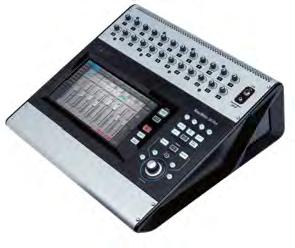
churches which is why you’ll often see this configuration in larger churches. Most mid-sized and more intimately sized churches are under pressure to produce a great-sounding livestream mix with only the one console they have in the main worship centre.


#2 – Run a broadcast mix in post-fader
If you’re one person managing FOH, monitors and the broadcast mix at the same time, then this is the best option for you. Post-fader means that any time you make a level change to a channel fader in your main mix, that channel in your dedicated broadcast mix will reflect the level change as well. Before you start working with your broadcast mix, balance your house mix. Your post-fader broadcast mix will be set based on the fader placement of your house mix. When running your broadcast mix in post-fader, you’ll need to implement something I call broadcast compensation. Broadcast compensation is compensating in your broadcast mix for the lack of level being sent from your main mix. You may find yourself applying broadcast compensation to instruments that produce significant acoustic noise, like drums, or instruments that use loud amps, like electric guitars and bass.
#3 – Run a broadcast mix in pre-fader
This option is perfect if you have an additional person dedicated to mixing broadcast. Pre-fader means any changes you make to the main faders will not affect the broadcast mix. Because of this you will not have to compensate for anything generated from the main mix. The volumes levels in your broadcast mix are running totally free from the main mix. In the pre-fader broadcast scenario, the person mixing can be in an isolated space with studio monitors to reference the service. This allows for a truer sense of what the online listener is experiencing. The person
mixing is now able to make fine adjustments to the levels in the mix since they are now free from hearing noise bleed from the main service meeting space. By connecting via Wi-Fi multiple tablets or iPads to your FOH console, you can create a whole virtual broadcast console.
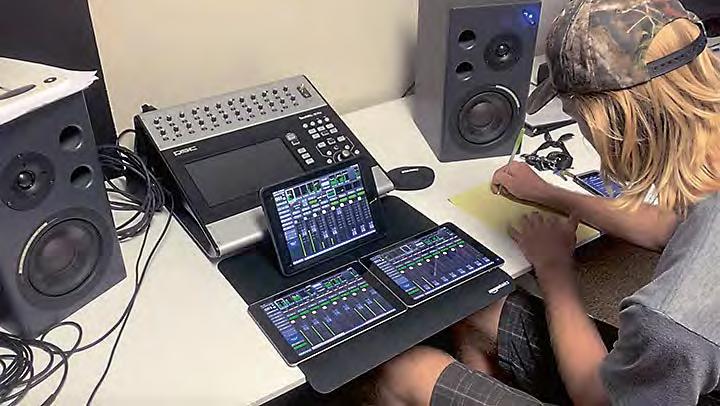
#4 – Run your broadcast mix from a digital audio workstation (DAW) on a computer
This is an affordable method that is fast becoming a popular way to produce a broadcast mix. Unlike mixing broadcast from the same mixer as FOH where channel EQs and dynamics are shared between the


main mix and broadcast mix, mixing from a DAW gives you complete control over every aspect of the broadcast. It’s the equivalent of having a completely dedicated console just for your broadcast mix. However, with such great flexibility and control comes complexity. Not everyone knows how to create their own greatsounding mix in a DAW. There are wonderful DAW template resources available from companies like SundaySounds.com to help the novice user create a wonderful-sounding mix. The user simply needs to connect the input channel signals from the mixer to the channels in the DAW and then adjust the faders to their preference. It’s best to have a dedicated person running the DAW broadcast mix. An engaging and well-balanced livestream will allow the online listener to focus their attention on the message being conveyed. For the person who happened to scroll across your church’s livestream on social media, their first impression of your church will be based on what they see and hear at that moment. These are a few reasons I encourage every church fellowship to pursue excellence in crafting a wonderful-sounding livestream broadcast mix.
www.qsc.com
AMIDST THE THINGS WE HAVE to get done, it’s easy to get lost in the mechanics of our actions and forget the deeper reason behind what we do. The aim of this article is to take a step back and delve into the world of digital ministry. I’ll examine 10 reasons why it matters and how reflecting on these can re-energise our digital endeavours.
S i mon Sinek’s book Start with Why provides valuable insight, emphasising the importance of understanding our motivations. He rightly said: “People don’t buy what you do; they buy why you do it.” Although digital ministry isn’t about selling, it’s about engaging, connecting and transforming lives. So, keeping a solid grasp on our “why” is crucial for effective digital outreach.
Having spent over 25 years in Christian media, I’ve experienced the ups and downs of this journey. I’ve learned that when I lose sight of my purpose, my work becomes routine, my creativity suffers
and my impact lessens. This realisation has ignited my passion to support fellow digital ministry practitioners.
I encourage you to embrace and protect your unique “why”. If the concept of a clear “why” is new to you, this article is aimed at helping you understand it better. As we go through these reasons, I hope you discover your purpose
within these words, igniting a fresh sense of direction and meaning.
Most churches meet once a week for 90 minutes (as an average); some perhaps add a further “midweek meeting” or maybe a
small group or home group dynamic to their calendar. So, you might have access to your congregation three hours out of the entire week. You can be present in their lives 24/7 by engaging in digital ministry.

Some people can’t be in church, even if they want to. This was even more apparent during the pandemic, but many people who can’t attend in person are housebound, travel for work or for many other reasons. Through your digital ministry, you can provide them with community and connection, even when they can’t be with you physically.
With digital ministry, you can reach people with your message
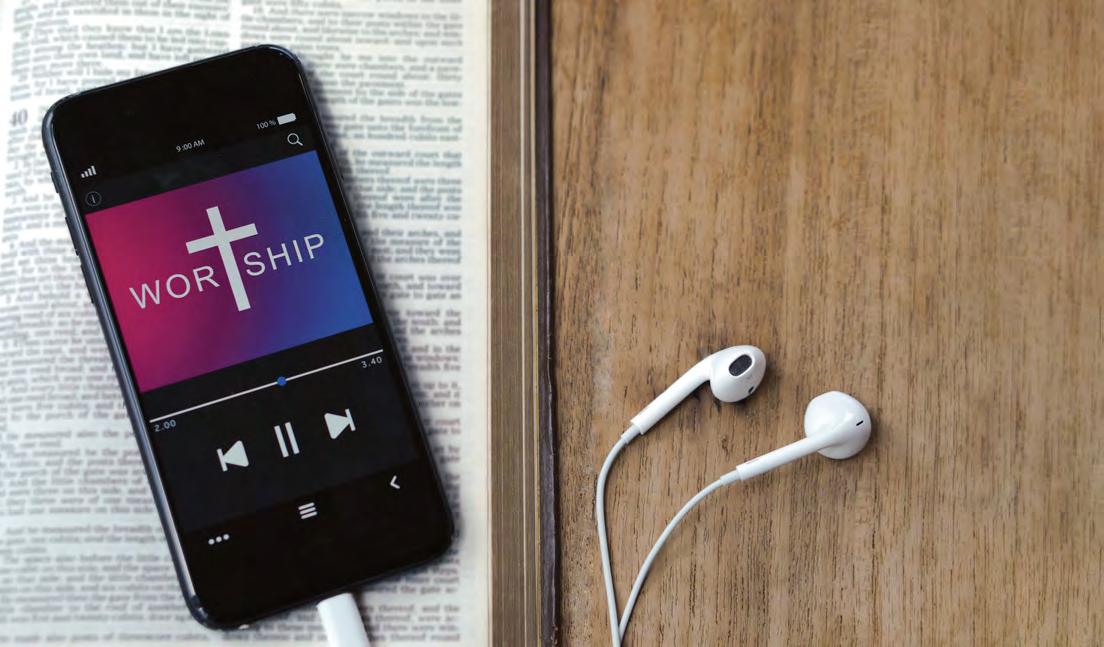
Graeme Spencer, founder of video content consultancy
Media Mentoring, considers 10 reasons why digital ministry matters and how to keep content engaging
in the comfort of their own homes, in a non-threatening way where they are in control and can choose to engage and find out more. This can be a fantastic tool in your discipleship armoury. I have heard so many stories of people impacted by a message they heard in their own homes through digital means who might never have considered attending church.
It is an excellent tool for outreach to introduce people to introduce people to worship through creative ways that don’t rely on them coming to you. Through the use of digital ministry, we can “go” to where they are.
The digital realm offers endless creative possibilities. You can reinforce your message in multiple captivating ways through podcasts, videos, blogs and social media. This approach speaks to individuals at different points in their spiritual journey and in different accessible ways that can give them comfort
Any church, irrespective of size, can be engaged in this. You don’t need to have a big church to use digital ministry. With advances in technology and the access we have to all the platforms, anyone can be in this space and use it for their mission.
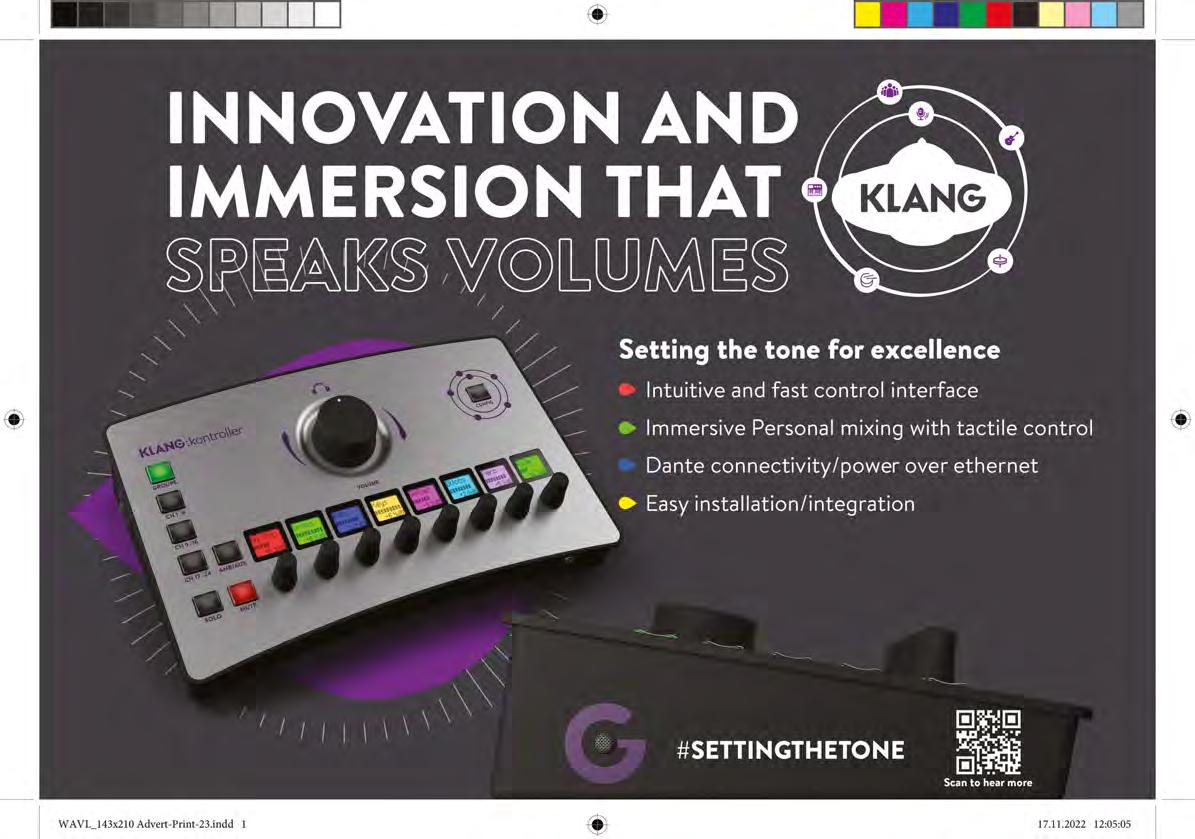
When done well, digital ministry can be a great way to overcome people’s preconceived ideas about what they believe and what they must “do” to find faith. You can continually and consistently show up with a message of hope and transformation that works for them and overcome some of
your message in a non-religious way and in a genuine, authentic manner that perhaps they don’t get to see otherwise.
You can offer ministry through digital opportunities in many ways. These don’t rely on geography or proximity –you can minister to people wherever they are and consequently grow your influence without the need to travel or have them travel to you.
Don’t discount how you can use digital ministry to grow your local church. It is a great way to
locally and invite them to connect with you to find out more. Bringing people into a genuine, authentic and real community can be one of the most potent uses of digital ministry in a post-Covid world.
Digital can be used as a testing ground for new ideas and teachings; the beauty of digital is that if something doesn’t “land”, you can delete it, tweak it, re-release it and try again – and again and again. This can be a low-risk place to experiment.
Considering these 10 reasons, one truth becomes clear: digital ministry isn’t a passing trend but a lasting way to spread your message, connect and create an impact.
I’m sure many of you will already have considered some of these, but perhaps there is something new here for you too. I want to encourage you to find your “why” –it doesn’t have to be one of these 10 reasons, but it’s crucial that we all have one.

LIGHTING IN HOUSES OF worship has a lot of room for creative diversity. The lighting needs for some may be simply to provide basic visibility of a speaker, while other houses of worship strive to create and control specific and intentional atmospheres and experiences during services. Regardless of where your house of worship falls on the spectrum, there is no denying that lighting can and does have a significant role in people’s response to an environment.
We’re going to take a look at a couple of simple, creative uses of lighting. Sometimes creative decisions are in your face and instantly recognisable. More common in the house of worship setting creative decisions are subtle – felt, but not necessarily noticed so as not to distract the worshipper.
We’ll begin with a quick review of the basic purposes of lighting. Whether specifically discussed within these contexts or not, all lighting decisions will touch on one or a number of these purposes. By reviewing them, they can give you a context for coming up with creative lighting ideas. Regardless of if your
house of worship is large or small or has a large lighting rig or not, hopefully these ideas will spark further creative uses and concepts that you can use in your services.
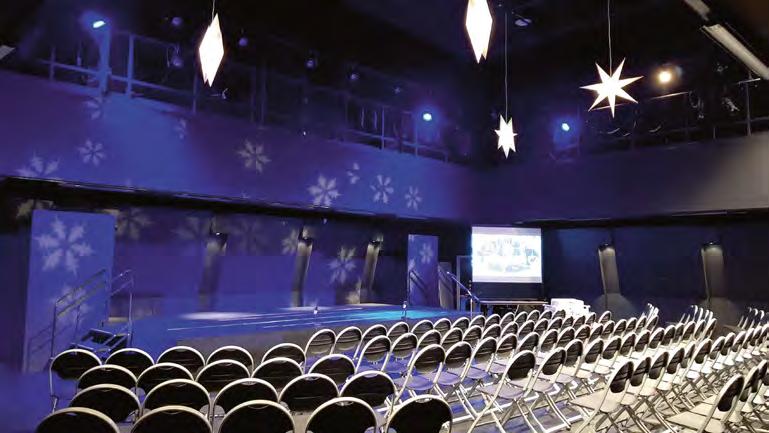

While these are most often discussed in the context of theatrical lighting, the basic purposes of lighting hold true in most lighting circumstances. Some decisions may emphasise certain purposes over others to achieve particular effects, which is where the creativity in lighting design comes from. The basic purposes of lighting are selective focus/visibility, mood, composition, revelation of form and reinforcement.
Selective focus/visibility refers to choices made to direct a spectator’s attention to exactly where the designer wants them to look. In contrast, it also refers to choices made to direct a spectator’s attention away from what the designer doesn’t want them to see. For example, you may want people to focus on a drama being performed on one side of the
stage while the opposite side is being reset for a speaker, lighting only the active portion of the stage so that the set change doesn’t distract from the drama being performed.
Mood refers to choices that are made to set the tone for the message of what is being presented or to evoke certain emotional responses. After all, lighting is very psychological and human emotions are often linked with colours, intensities and directions of light. For example, if you want to create
a quiet, reflective atmosphere, the lighting designer would not choose to wash the stage or audience area in yellow-coloured light as that would create a completely different, unintended mood and atmosphere. Composition refers to the use of light to create the overall stage picture. Many houses of worship use very little scenery or backdrops compared to what would be found in a theatrical setting. Lighting can be used to create the backdrop or stage picture that the designer wants people to see. An example
John Black takes a look at some simple, creative uses of lighting that can be used to enhance your services
would be the use of layering visible light beams from a number of trim heights and positions to create a sense of depth on an otherwise shallow stage. This technique requires the use of atmospheric haze and a black backdrop that “disappears” behind the light beams.
Revelation of form refers to lighting that is used to reveal the form of a performer or subject and help them stand out from the background. This is particularly emphasised in dance situations to accentuate the curves, muscle definition and poses of the dancers. In non-dance situations, this is more often addressed with regards to lighting subjects from a variety of angles and how the light creates highlights or shadows on the subject in intentional ways. Revealing form is important when lighting for video to avoid the subject from looking flat or twodimensional on camera.
Finally, reinforcement refers to choices made to specifically support and communicate the story being told. Whether through use of colour or specific patterns used on surfaces, reinforcement is an element of the visual story. For example, when lighting a scene that takes place in a cold, damp cellar, the lighting designer wouldn’t use bright colours and angles that eliminate all shadows and suggest a happy, warm location.
All of these purposes interact with each other when making creative choices, regardless of the size of your lighting rig. Let’s take a look at four ways you can be creative with your lighting.

If your facility has a shallow stage and perhaps you have a limited lighting rig, a simple though effective use of lighting you could employ is adding instruments along the floor of the back wall of the stage, creating beams of uplighting, and then adding colour (gels or instruments capable of colour mixing) to establish mood. This is a common technique used to not only add a colour backdrop behind what is happening on the stage, but to provide depth to an otherwise flat surface. As the light gets higher, the beam will spread wider and fade out, creating a gradient on the surface. Coloured uplighting is especially nice if the wall is textured, creating highlights and shadows on the surface due to protrusions and cavities.

You can also place physical objects along the back of your stage, such as columns or other textured surfaces, and then uplight them to achieve different effects as the light beam creates highlights and shadows on the surface of the object. This takes some creative experimenting as the shape, angle, finish and colour of the objects will change the way you see the light.
Another subtle creative lighting use that also is related to the backdrop of what is happening on the stage is to focus instruments onto the back wall of the stage that you can add patterns to in order to project images onto the back wall. Patterns could be abstract and used with colour to add texture to an otherwise
of a service. At its simplest, varying the intensity during certain portions of a service can guide and usher congregants through the worship experience. For example, your service may look like this:
•Pre-service – HL @ Full
• Welcome/announcements –HL @ 75% (draws more at tention to the stage)
•Prayer – HL @ 65% (encourages congregants to settle their minds from distractions)
•Praise and worship – HL @ 45% (encourages congregants to “forget” about others around them for worship)
•Sermon – HL @ 75% (bring attention back up to the speaker)
between intensities (as is common with cheap LED sources), this can actually become a distraction.
The majority of lighting in most situations begins elevated above the stage or auditorium and focuses on the stage. This helps draw attention to the subjects or action on the stage. In a house of worship, it is often desirable to help people focus away from the stage and on their worship. Placing instruments on the stage floor or in low positions and focusing them up and over the auditorium can shift the focus away from the stage and draw the worshipper in as an active participant as opposed to spectator. Lighting focused on and around the auditorium, or using more backlight on the worship team rather than front light, can also be effective in drawing in the congregation.
Of course, it can be easy to go “too far” and create a concert-like experience in a worship service, which is why it is important to be intentional about lighting choices and connecting them with the content or intent of each portion of the worship programme.
These are just a few simple creative uses for lighting that you may be able to use. Remember that whichever way your creativity takes you, in a house of worship the most important thing is to ensure that the lighting reinforces and supports the purpose for the
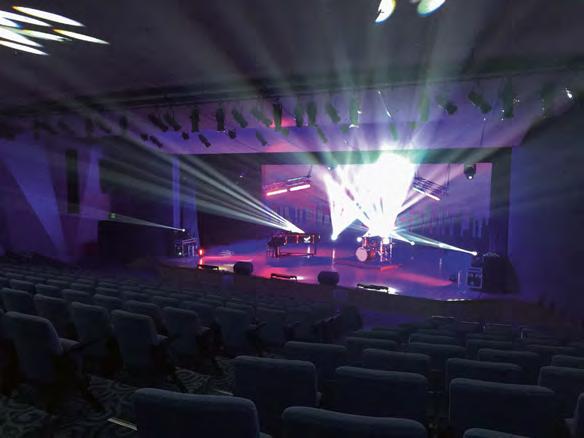
flat surface. Alternatively, patterns could also be recognisable or realistic to support a particular season or message. For example, if desiring to create a Christmasy, wintry feel, the projection of snowflakes can help set the season. If performing a drama, a realistic pattern of architecture can set the location for the scene. Abstract patterns come in a wide variety of designs, and you can select patterns that have more or less energy, sharpness or detail to create interesting patterns on surfaces.
Though often overlooked as it is not related to the stage itself, one particularly effective creative use of lighting is the very subtle, intentional use of varying the house lighting throughout portions
can guide the worshipper through periods of internal reflectiveness and outward awareness in ways that he or she may not actually notice being encouraged by the lighting. Of course, if the house lights change too quickly, or if they “jump”
Take photos of your creativity so that you can recall and reuse those ideas at later times throughout the year. Small tweaks to those looks, such as changing the colour, can make a huge difference in how your congregation responds. Happy lighting!
DR ANDREAS WILZECK

(head of spectrum policy and standards),
(project manager), as well as Dr Sebastian Georgi and Jan Watermann – the two research and development engineers who are the inventors of what is called wireless multichannel audio systems (WMAS) – look into the benefits of the technology and explain how it will change the wireless landscape.


Georgi: “With this technology, we are re-thinking wireless transmission in multichannel applications –wherever many audio channels are up in the air. Sennheiser’s implementation of WMAS is essentially a bidirectional wireless broadband technology, which combines microphones, in-ears and remote control in just one broadband RF channel.
“When we started out with this development project, our original intention was to combat RF fading, the natural signal loss on stages. RF fading can cause signal dropouts, which is what makes every sound engineer’s job so difficult. By finding ways to better exploit the diversity offered by the broadband RF channel, we wanted to eliminate the risk of signal dropouts. In addition, we aimed to simplify setup for the user, acknowledging the fact that narrowband wireless systems require quite complex stage setups, especially in multichannel applications.”
Watermann: “Today’s wireless audio technology relies on narrowband RF solutions, with one transmitter sending signals to one receiver unit. And, unfortunately, the transmitter cannot notice whether ‘its’ receiver has been switched on or not, or whether it is out of range. In a figurative sense, you could say that every microphone, once configured, is fighting on its own.
“Broadband wireless technology, on the other hand, takes a systembased, cooperative approach. Many mobile devices are linked over the air with one rack-mount unit. Now, everything happens in a single broadband RF channel with a bandwidth of 6MHz or 8MHz, the bandwidth of a TV channel. The audio engineer simply selects a carrier frequency for the broadband RF channel to be configured, and the system will coordinate itself, with the quality and range that the engineer chooses for the individual audio devices.”

Brandenburg: “It does indeed. Just bear in mind that WMAS is designed for multichannel audio applications that integrate wireless microphones, in-ear monitors, remote control and other audio applications into one

radio interface. This brings significant efficiencies in spectrum use – not just by technology, but also by enabling workflow improvements. These wins can be invested in flexibility and audio quality. For example, IEMs and microphones, which today are split between two RF ranges that are several MHz apart, can now be handled together in a single TV channel, which, in addition, makes frequency planning a breeze. But to be clear, narrowband, 200kHz digital wireless microphones will continue to be used for applications where this integration is not required, or where only a few mics are used.
“Secondly, WMAS will operate with a total of 50mW of transmit power per RF broadband channel, which is the transmit power of a single microphone today. Within the capacity limit of the system, there will no longer be any scaling of the total transmit power by the number of devices used. Furthermore, this transmission power will be distributed over the entire RF
broadband channel, so the spectral power density is lower by a factor of 30 (6MHz) or 40 (8MHz) compared to a single wireless microphone with a bandwidth of 200kHz. This low spectral power density means that an RF channel can be reused more easily.
“Last but not least, our approach allows remote control of all equipment at all times, and also the allocation of resources to equipment as really needed at any given time. This makes it possible to save spectrum by employing a new workflow where the audio engineer can schedule resources on a timeline. Compared to today, where all devices would be actively transmitting at the same high quality all the time, this new workflow would mean a substantial gain in spectral efficiency at large events.”
Wilzeck: “It is worth noting that the number and complexity of large events and mega-events is continuously increasing, and the associated
Four Sennheiser experts reveal what this new technology is about and the advantages it will bring to sound techniciansJan Watermann WMAS is designed for multichannel audio applications Image courtesy of Glow Church in Queensland, Australia
enough spectrum for these big events is increasingly causing engineers and event organisers a headache, especially with outdoor events. The WMAS solution will certainly help.”

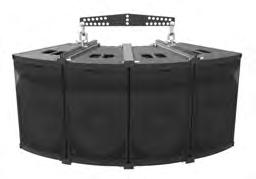
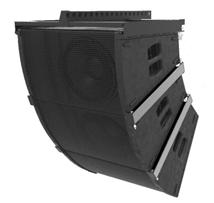


You mentioned that current narrow-band microphones have a stipulated maximum RF transmission bandwidth of 200kHz, but your broadband microphone will depend on this limit being lifted. Have the regulatory bodies already agreed to do this – worldwide?

Wilzeck: “The relevant harmonised standard EN 300 422-1 for wireless microphones was amended in 2017 to take WMAS into account. This EN 300 422-1 standard is referenced more or less worldwide in the national regulations for the market access of wireless microphones. We successfully initiated the necessary regulatory changes some years ago; they have already been implemented in many countries in EMEA and APAC. The process in the US is not yet complete, but we are confident that WMAS will soon be possible
here, too. The availability of products based on this technology will naturally accelerate regulatory changes on a global scale because, after all, no country wants to get left behind.”
Are the frequency ranges WMAS will be operating in the same as those of today’s narrowband systems?
Wilzeck: “Yes, the WMAS solution will operate in co-existence in the standard UHF frequency ranges for wireless microphones – no changes
to the transmission power limits are required. It was just the bandwidth limit that had to be removed or lifted to at least 6MHz.”
Why are you using a manufacturer-specific transmission technique? Wouldn’t standard technologies – such as a 5G microphone with a SIM card – do the trick, too?
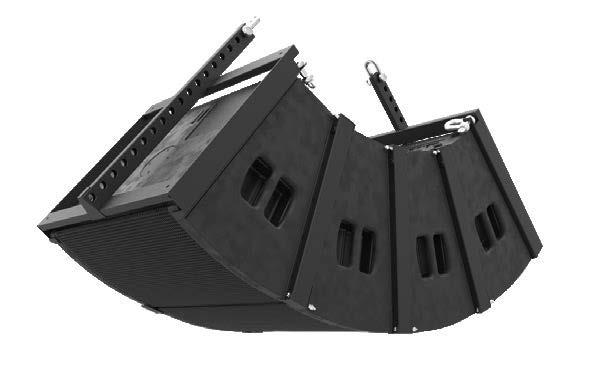
Brandenburg: “By offering a bespoke solution, we can create
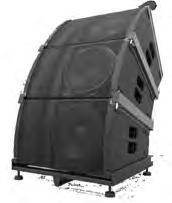
tailor-made systems for our customers and their use cases. Live audio has very strict requirements on latency, operational reliability, multichannel audio and audio quality that standard technologies cannot –or do not want to – fulfil today or in the near future.”
What are the advantages of this new WMAS approach?
Watermann: “Combined, bidirectional bodypacks including low-latency, true digital in-ear monitoring will be possible – bands and artists will just need one device instead of two. Mic transmission, in-ear monitoring and permanent remote control will all happen via the same device in a single RF channel. Also, the sound engineer will be able to flexibly select the audio quality, latency, range and resource occupation for every single audio transmission of the devices. Furthermore, all mobile devices will be perfectly synchronised, enabling wireless stereo and even 3D audio recording without any audio phase issues.”
NORMALLY, I WOULD WRITE about some kind of device or other engineering type thing. But this month, I asked the editor if I could write my article on my church’s television ministry – to be different and to celebrate the end of an era.
Some 41 years ago, Green Acres Baptist Church in Tyler, Texas had
Casey Hawkins is the director of video engineering and IMAG operations for Green Acres Baptist Church in Tyler, Texas, a Southern Baptist megachurch with over 17,000 members. Having begun his career in 1990 volunteering at his childhood church in Fullerton, California and later at Green Acres in Tyler, he spent the past 25 years in broadcast television working for multiple television stations in the US. He has worked as a broadcast technician for a major telecoms company, managing national and international television broadcast signals over a switched fibre optic network. He also owned and operated an
technology, Joe Smith. Those two hatched a plan to start televising the church’s services. It was 1982 and very few churches were televised back then. Green Acres was to be a pioneer in church television. At first it was live, with a local station live truck feeding the signal from the church back to the station. Eventually, new equipment was purchased, and the church decided to tape delay the broadcast, which we continue to do to this day.
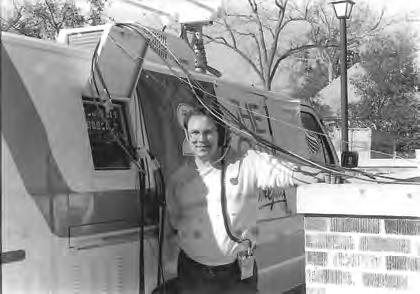



There were no IMAG screens in the chapel. Everything done with the equipment was solely for air and tape distribution. This was an era when television was still “magical” to the average person. Today, so
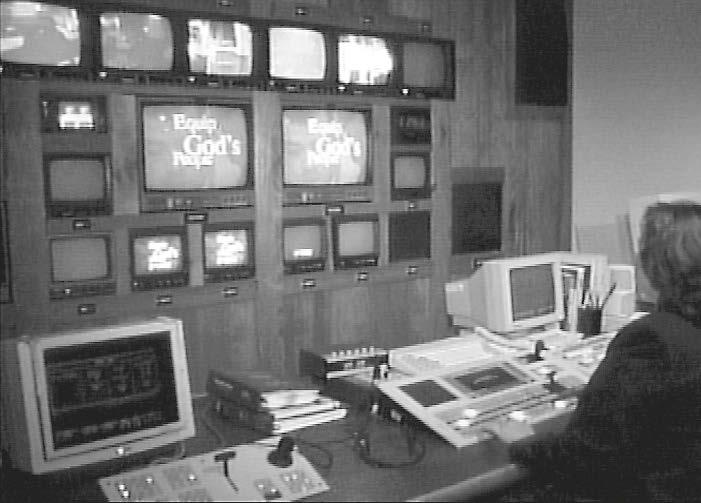
television audience, advancements were made in the gear that was used by the church and the staff and the volunteer crew grew. By the early 1990s, we had Ampex VPR-80 1-inch videotape machines, an Ampex ACE25 edit controller with an Ampex Vista switcher and Chyron ACG character generator. A Pinnacle DVE, five Hitachi broadcast studio configured cameras and, of course, the accoutrements of video formats to convert to and from: Hi8, VHS and the always popular ¾-inch U-matic.
There was a special “broadcast” audio console in the television control room. This console had a duplicate of every audio source that the FOH console had, but with the intent to create a mix more suitable for television than an open, airy Southern Baptist chapel mix. There were ¼-inch reel-to-reel machines, ½-inch multi-track recorders as well as ADAT. ADAT used S-VHS video tape to master multiple digital channels of audio. I don’t recall us ever using DAT, but I presume we had a machine or two back then.
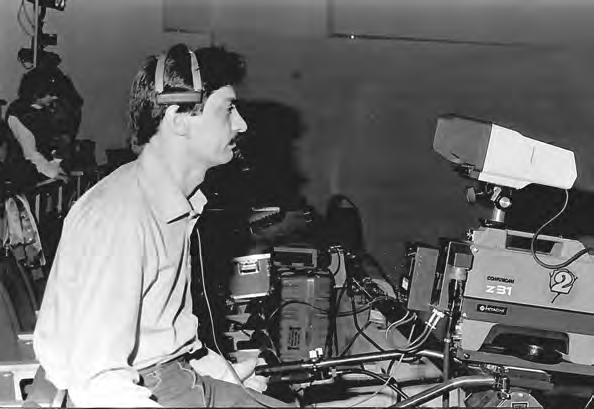
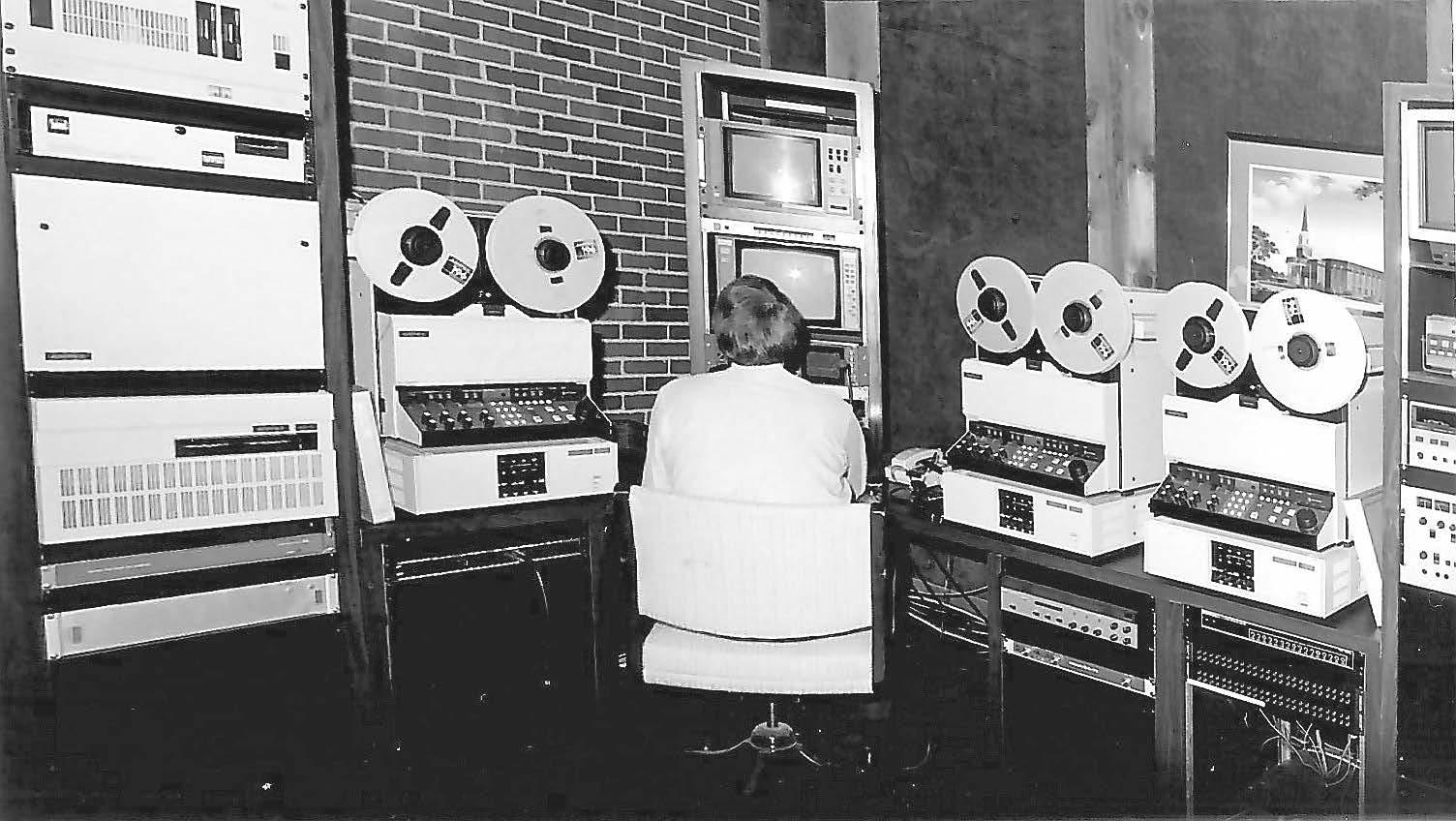
For me, those were the days! You just didn’t walk into the average church and see a television control room like we had, like you find so regularly today. Today, having a church with several high-definition cameras and a switcher with a few multi-viewers and ProPresenter with a dedicated audio mixer for the livestream mix, not to mention the livestream itself, is commonplace. Live in 1982 was a completely different kettle of fish to being live today. I think many younger people today often take all this great technology for granted.
I learned some basic video and lighting skills at my childhood church in California from 1990–1993. But I truly excelled at broadcast-level skills at Green Acres from 1993–1998, when I learned how to operate all that
equipment while still in high school. In fact, my experience at the church with their equipment uniquely prepared me for employment in television, and a long, lucrative career.
When I walked through the doors on that first Sunday back in 1993, I was mesmerised by all the cool stuff that I’d never seen before. And I wanted to learn about it all. I began volunteering as soon as they let me into the rotation. For some reason, I was placed at shading cameras and that is where I stuck. But then the summer came, and I didn’t have to go to school, so before long, I was up there during the week learning
But what went on while I was gone is nothing less than extraordinary.
For a decade of those years, Green Acres saw national television on DayStar, INSP, Cornerstone, FamilyNet and Church Channel networks. Soon, they became a true television ministry selling tapes, DVDs and CDs all over the world. There were people on staff whose only job was to pack and ship orders placed by national television viewers. I would have liked to have experienced those years.
But this year marks the end of a truly remarkable era: Tibby will retire after nearly 25 years as head of the ministry. With 10 full-time staff and two part-time employees as well as about two dozen faithful volunteers, our broadcast ministry, as it is known today, is literally one of the best in the world. Although our national days are a decade or more in the past, we remain over the air on our local ABC affiliate, KLTV, along with another TV outlet and several radio channels. Of course, with livestreaming, we truly are global in our reach once again.
how to edit the service for air. That was literally the best time of my life, I reckon. I didn’t know it then, but it was.
It was through volunteering there that I met my first boss, Tibby Wright. He was a television audio volunteer along with his best friend Joe Smith. Remember Joe from the start of this article? Joe was not only instrumental in the start of our television ministry, but he also donated a lot of his time, resources and money to the ministry over the years and he really is why we are what we are and have been what we have been. Sadly, Joe passed away in 2016.
In 1999, Green Acres began to build what is now our Worship Center and, around that time, Tibby was hired to be the director of broadcast ministries for the church. At that same time, I moved to Tulsa, Oklahoma to pursue my broadcast career. In 2016, Tibby hired me as a video director, and I’ve been there ever since.
As I write this article, our senior pastor, Dr Michael Gossett, celebrates two years leading our church into the next generation. As Tibby retires, and as a few 20-year broadcast ministry staff and volunteer veterans prepare for their own retirement, it truly is a time to celebrate an era. Last year, in 2022, we had the honour of recognising one of our camera volunteers, Dale Harrelson, who has manned a camera for us every Sunday since the first day, 41 years ago. I am honoured to be on staff so that the legacy of our decades will live on, because it can easily be forgotten.
As I look back and review the few photos we have of those many, many years of church television excellence, I am proud to represent such an amazing accomplishment within our church and local community. Thanks for reading and if you are looking to create a media ministry in your church, I hope this story will help inspire you and your church members to create a legacy for God. A legacy that can even spark interest in one of your youths and launch their career in television. For with television, you never really know whose lives you are touching every single day.

why achieving the perfect colour in pixel lighting can be so elusive? In my line of work, I have the privilege of collaborating with designers and installers on their lighting projects, and I’ve had the opportunity to witness some truly amazing designs. There are many situations where the pixels themselves are intended to be used in a low-light setting but, when turning down the intensity, the resolution is sacrificed. Another challenge is often seen when mixing colours. When trying to achieve a particular colour with RGB mixing, it doesn’t always look like what was intended.
This is where the magic of digital current control comes into play. It’s the secret ingredient that can turn a good lighting design into something truly spectacular. In this article, we’ll delve into the world of pixel lighting, where the quest for accurate and rich displays often hinges on mastering the nuances of LED control. We’ll explore LED
current and Pulse Width Modulation (PWM) and, most importantly, we’ll uncover the transformative power of digital current control.
Unlike traditional light bulbs, LEDs operate based on current rather than voltage. The brightness of an LED is directly proportional to the amount of current flowing through it. For instance, halving the current from 20mA to 10mA results in a 50% reduction in brightness. PWM, on the other hand, manipulates the LED’s intensity by rapidly switching it on and off. Each time the LED is on, the current is constant, so the intensity during the on period is always the same. The rapid oscillation between on and off is what can dim the intensity of light but, because it is so fast, it creates the illusion of continuous brightness to the human eye. The ability to control PWM levels is crucial in pixel
systems, offering various intensity levels for a seamless visual experience.
Some pixel driver chips rely solely on PWM to control LED intensity, leaving little room for customisation. However, modern pixel driver chips have introduced digital current control, allowing for precise adjustments in LED brightness. This grants you the ability to tune the operating current of the LEDs during the on period, which in turn directly tunes the brightness.
Intensity scaling – the traditional method of reducing LED intensity in software – involves scaling down incoming DMX values before
outputting them to pixels. While this method effectively lowers intensity, it sacrifices dimming resolution. For example, if you consider 8-bit DMX with 8-bit pixels, there are 256 levels of data being received that can be mapped to 256 levels of PWM on the LED. If intensity needs to be reduced by 50%, the pixel controller cannot output greater than the value “128” to the pixel LED. That means that the incoming 256 DMX levels are mapped to 128 PWM levels, which means every second DMX value is effectively ignored and doesn’t impact the output.
Digital current control, on the other hand, allows the controller to configure the current during the PWM’s on phase without compromising PWM resolution. This ensures that every pixel retains its full resolution, creating a visually superior outcome. There are two types of digital current control you need to know about.
Luke Gaschk, customer service engineer at Advatek, offers exclusive insider knowledge on turning a good lighting design into a spectacular masterpieceMeow Wolf used Advatek’s PixLite A4-S Mk3 controllers in its latest lighting installations
digital current control has revolutionised lighting
1) Global current control lets you adjust the current of all colours within a pixel LED simultaneously (red, green and blue in an RGB LED, plus white if using an RGBW LED). This feature is ideal for environments requiring lower light levels, as it diminishes overall brightness without resorting to intensity scaling. Pixel protocols offering global current control include APA102, SK9822, UCS9812 and more.
2) Individual colour current control provides unparalleled flexibility by enabling adjustments for each colour within a pixel LED individually. This not only serves the purpose of global current control but also enhances colour mixing capabilities. For instance, if blending red, green and blue yields an undesirable white balance, adjusting the current for each colour can rectify the issue. (By the way, gamma correction and individual colour current control are complementary features that work together to make pixels look even better!) Pixel protocols that currently offer individual colour current control include HD108, SM16714, SM16803/4, TM1814, UCS2603, UCS5603 and more.
Mastering LED control is essential for achieving awe-inspiring pixel
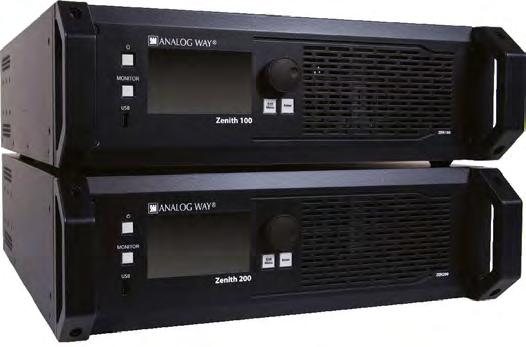
lighting. With a grasp of LED current, PWM and the revolutionary digital current control, you can take your pixel LED displays to new heights. Explore the possibilities offered by global and individual current control to unlock the full potential of your

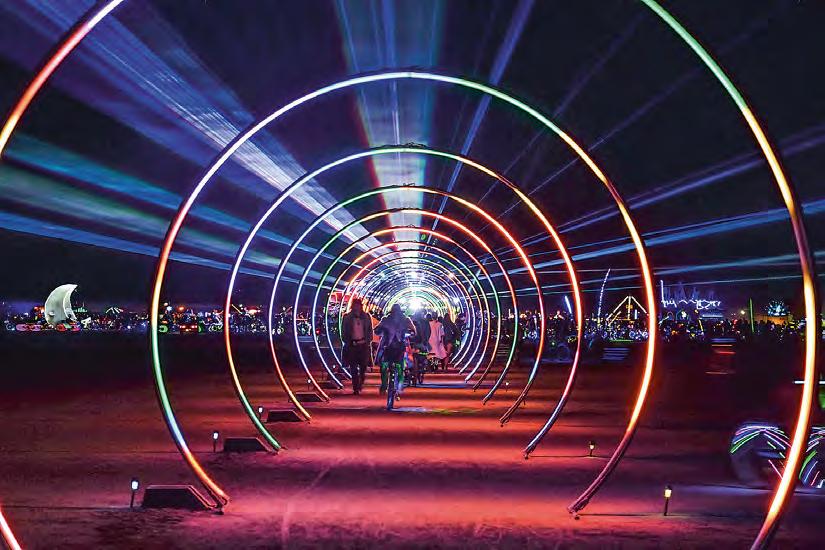
pixel installations. By understanding these principles, you can create captivating visuals that leave a lasting impression, making your pixel lighting application truly extraordinary.
www.advateklights.com
In short, digital current control will revolutionise your displays
Allen & Heath has unveiled its CQ series, a trio of compact digital mixers suitable for houses of worship which place a priority on ease of use and speed of setup
“CQ TAKES OUR PROCESSING and effects, adds new assistive mixing tools and packages it all up into our smallest, and most affordable, digital mixer series yet,” says Keith Johnson, product manager at Allen & Heath. “Usually at this price point, users are forced to choose between a midrange analogue mixer, lacking in modern features, or an entry-level digital mixer, where corners have inevitably been cut. With CQ there are no compromises. It’s a fully featured 96kHz mixer with intelligent tools that, regardless of your experience, lets you mix smarter, sound better and work faster.”
Built around a new 96kHz processing engine, the series comprises the CQ-12T and CQ-18T desktop mixers featuring tactile controls and a 7-inch multi-touch screen, and the portable CQ-20B stagebox mixer, all controllable via the companion CQ apps.

The processing engine, utilising Allen & Heath’s FPGA technology, is said to bring numerous time-saving tools to the CQ to speed up and simplify common tasks for users of all abilities. Gain Assistant automatically sets preamp gain to the optimal level and monitors and adjusts for any unexpected peaks in the signal. Feedback Assistant identifies and filters out problem frequencies across all outputs via simple one-button operation, with more in-depth control available for challenging acoustical environments.
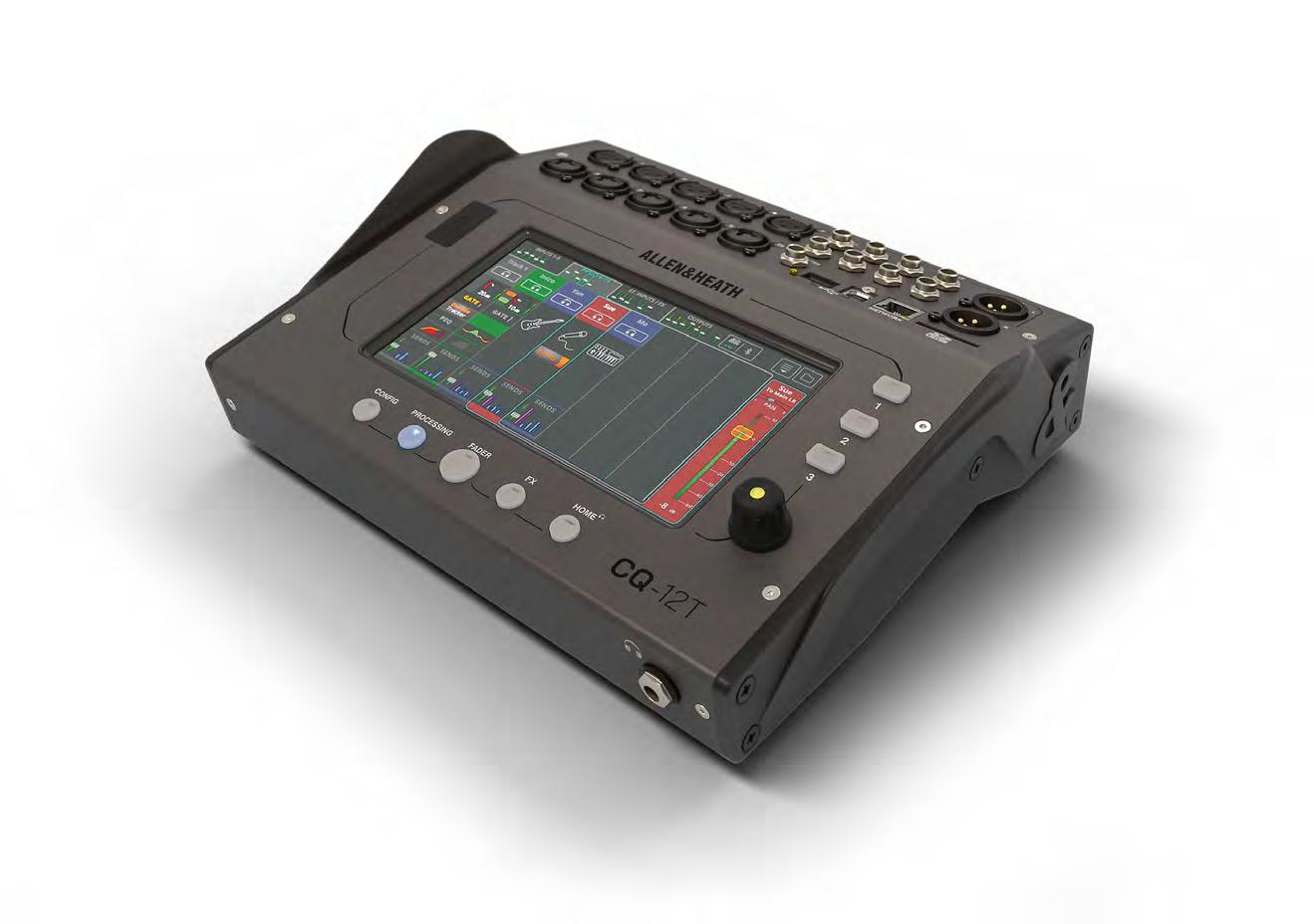
Input channels can be switched between a Quick Input, giving users a source-specific set of controls with single knob control of channel processing, or a Complete Input for full control of all channel processing parameters. Additionally, an Automatic Mic Mixer (AMM) is present on all input channels, instantly improving clarity and reducing
signal for optimal clarity. The CQ-18T and CQ-20B offer four FX engines and the CQ-12T features two FX engines. All three CQ mixers benefit from flexible recording and playback options, including a multichannel USB audio interface, multitrack SD card playback and recording,
playback via an external USB drive, plus convenient stereo Bluetooth playback.
The CQ series is supported by a pair of free multi-platform apps. The CQ-MixPad app enables remote control of the mixer from anywhere in the venue, while the
CQ4You app allows performers to take control of their personal monitor mix via their mobile devices. The CQ-18T and CQ-20B also benefit from integrated high-performance dual-band Wi-Fi for quick and easy connection of control apps without any additional network equipment.
The CQ-18T provides 16 mic/line inputs and one stereo input; the smaller CQ-12T includes 10 mic/line inputs and one stereo input; and e stage-friendly CQ-20B offers 16 mic/line inputs, two of which can be used as Hi-Z instrument inputs, and two stereo inputs. All three models feature six independent outputs which can be configured to run up to three stereo outputs.
www.allen-heath.com
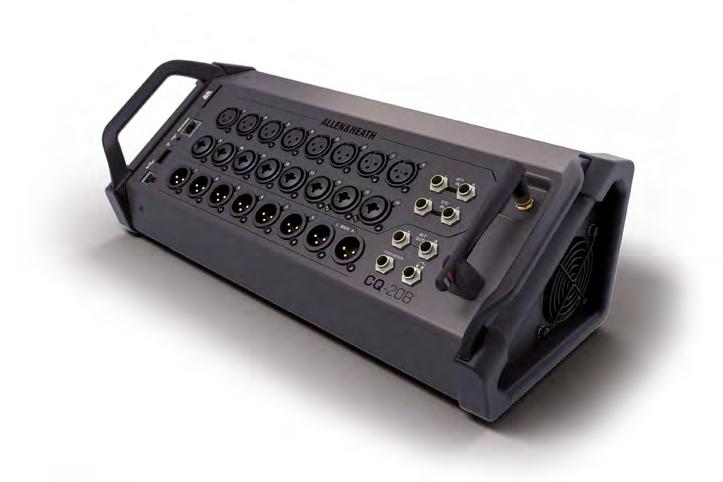







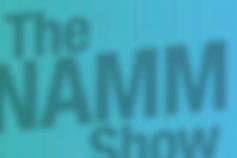

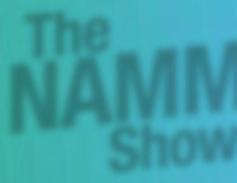

L-Acoustics is aiming to take immersive technology to the next level with L-ISA 3.0
AS MORE audio professionals look to leverage spatial audio, the L-ISA 3.0 software platform from L-Acoustics aims to make investing in immersive technology easier with a range of features and mobile streaming capabilities. Tools include the FX Engine, Stereo Mapper and Snapshot Engine, as well as expanding the L-ISA ecosystem to qualified third-party applications and technologies.
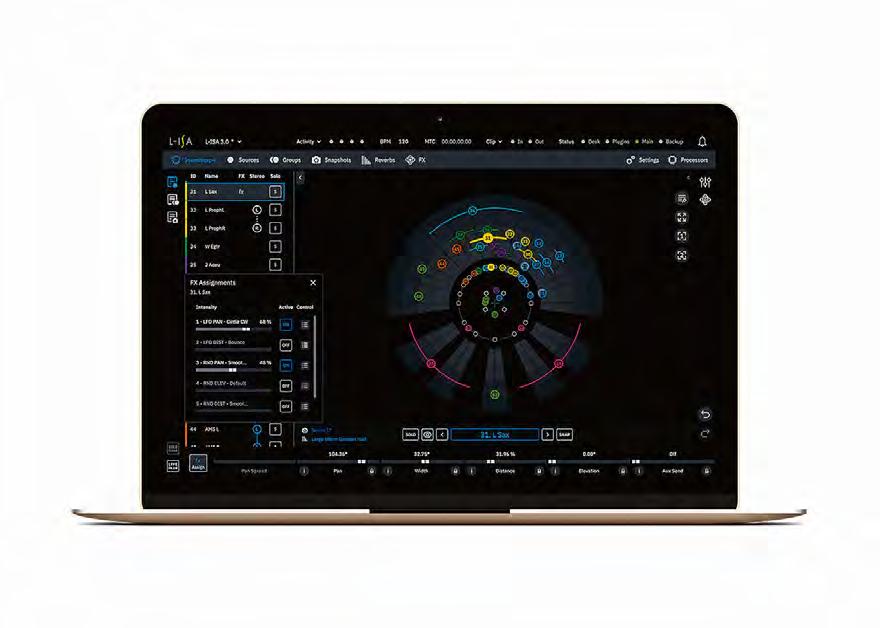
L-ISA’s FX Engine allows designers to create movements and trajectories of any kind: reactive to the designer and reactive to other objects within L-ISA to create organic movements. The FX Engine includes customisable controls and behaviours that can be additively applied to unlimited objects.
Meanwhile, although an increasing number of venues already possess L-ISA immersive audio configurations and 3D mixing capabilities, touring artists may not have content ready in an immersive format. For those artists, L-ISA 3.0’s Stereo Mapper feature maps existing stereo content to an immersive speaker configuration without changing the original mix. Stereo
Mapper distributes stereo content to an L-ISA configuration while conserving a similar power distribution as traditional left/right array configurations to retain the original stereo image and overall mix. Stereo Mapper also increases low-frequency coverage throughout the venue, while any out-fill speakers can be time aligned to either stereo or immersive, making switching between stereo and spatial content seamless.
L-ISA’s updated Snapshot Engine provides more granularity and scope of what can be stored in snapshots, allowing users to choose which sources are visible at any given moment in time, with features such as source processing, delay and reverb providing more control over spatial mixes.
Its Edit Mode function allows users to visualise the position of audio sources in each snapshot, making it easier to follow an object’s position across the soundscape at a specific moment in time. Meanwhile, Preview Mode allows users to visualise the position of specific objects and make on-the-fly adjustments without any
WITH THE launch of OmniBeam beam-steering technology, RenkusHeinz has advanced its entire Renkus-Heinz steerable product line. Delivering enhanced audio and coverage for all venues, the OmniBeam algorithm replaces the
previous approach of UniBeam. The California-based manufacturer claims that customised coverage can be directed with precision into the exact geometry of every space.
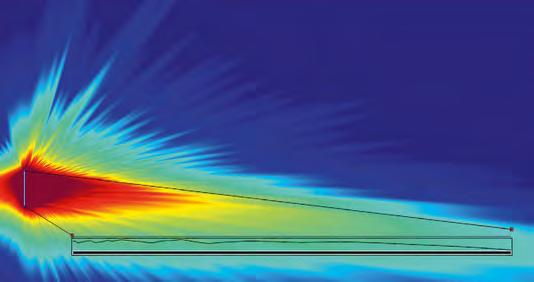
www.renkus-heinz.com
interruption or downtime. Preview Mode is available for both online and offline use.
Finally, the expansion of the L-ISA ecosystem has allowed integration for Mixhalo, a low-latency networking technology that unlocks high-fidelity, augmented audio for live events. Mixhalo streams multichannel audio to audiences via their own phones and headphones, all dynamically synced to the PA. Coupling Mixhalo with the L-ISA Processor II allows show designers to natively control Mixhalo augmented audio content directly from the processor and stream directly to mobile phones.
www.l-acoustics.com
• Class-leading, extremely wide 60 MHz UHF tuning bandwidth for maximum versatility

• Unique multifunction button on the handheld and body-pack transmitters can be used to switch to a backup frequency should interference be encountered
• Automatically adjusts squelch setting to maximize range while minimizing interference
• Optional network transmitter charging docks
• Frequency scan and IR sync for ease of setup
•
Handheld transmitter offers industry-standard thread mount for use with six interchangeable A-T microphone capsules, as well as other compatible capsules

D&B AUDIOTECHNIK has announced the availability of NoizCalc 4.0 software, the latest version of its advanced simulation tool designed to accurately predict noise arising from outdoor events equipped with d&b systems. Version 4.0 features a range of enhancements over previous versions, including a new Graphical User Interface and an optimised workflow to reportedly ensure an accessible and intuitive user experience. Among the enhancements are greater similarity and alignment with ArrayCalc and the R1 remote
user to identify, at the design stage, any potential noise issues – the advantage being that these can then be dealt with proactively, in advance of the production being set up.
Developed in collaboration with SoundPLAN, a specialist software developer for environmental noise prediction, NoizCalc 4.0 imports system settings directly from d&b ArrayCalc. The software then offers a choice of international standards for its calculations (CNOSSOS-EU, ISO 9613-2 and Nord2000), depending on the user’s requirement.
DYNACORD HAS announced the release of the latest update for its Sonicue Sound System Software, with version 1.3 including major enhancements to the MXE5 Matrix Mix Engine.
As a central component of the Dynacord ecosystem, SONICUE Sound System Software allows users to configure, operate and control electronics such as L, C, IPX and TGX series power amplifiers and the MXE5 Matrix Mix Engine. The software also enables customised system control through networked panel controllers such as the TPC1 and WPN1, or via the SONICUE Control app on Windows or iOS devices.
capabilities, offering an extensive range of audio manipulation options with 36 inputs, 32 outputs and up to 128x128 internal cross points.
control software, so users will find themselves in a familiar environment, without too steep a learning curve. NoizCalc enables proactive noise management in advance of an event. Using system data from d&b ArrayCalc project files, along with geodata from Google Maps and OpenStreetMap, the software calculates a grid noise map, which accurately predicts any potential noise issues in the surrounding neighbourhood. NoizCalc allows the
NoizCalc can model complex systems consisting of many types of d&b loudspeakers, including line arrays, point sources, subwoofer arrays, fill and delay systems. Systems designers can also simulate adjustments to the way each element of a system is placed and powered to achieve the desired result.
www.dbaudio.com
HOPING TO enhance the user experience across its range of hardware products, K-array has introduced a suite of interconnected mobile apps to provide an ecosystem for systems designers and end users to interact with its products.
K-FRAMEWORK is an offline software designed for 3D simulation and amplifier configuration. It enables users to simulate room coverage and then configure any amplifiers associated with connected loudspeakers.
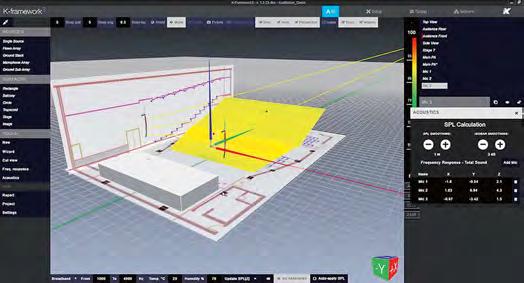
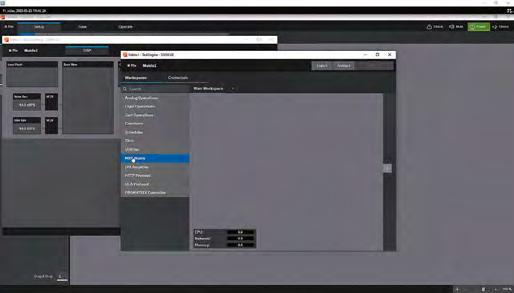
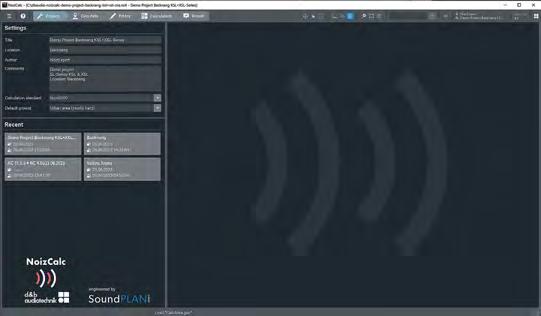
Available on iOS and Android devices, the K-CONNECT mobile app streamlines access by allowing users to connect to any K-array amplifier hotspot with a
scan of the QR code. The app offers browsing and modification of settings with a simplified user interface. Onsite, the K-array web app offers more comprehensive
One of the key highlights of the release is the introduction of free DSP configuration, which allows customers to leverage the MXE5’s open DSP architecture, providing users with unparalleled flexibility in structuring DSP configurations to meet their unique project requirements. The software unleashes the full potential of the MXE5’s signal processing
Sonicue 1.3 also features an enhanced task engine that enables advanced logical tasking capabilities. Users can create system events with complex triggering options using the Task Engine. It is now possible to override scheduled events, allowing dynamic system response. In addition, the task engine facilitates integration with thirdparty devices, allowing external control of actions and devices within Sonicue while providing status updates to Sonicue Control devices. This is said to open new possibilities for system control and extends the MXE5’s interoperability with external devices. In situations where complex DSP is not required, the semi-fixed zone mixer is still a time-saving option and still accessible in the software.
www.dynacord.com
system configuration. For technical assistance during commissioning and for ongoing monitoring, K-MONITOR provides efficient discovery tools.
K-array claims the software provides a fully connected suite of services for design, configuration, control and monitoring. While K-array amplifiers already have a dedicated operating system (OsKar) and a third-party control API with plugins available for control platforms like Q-SYS and Crestron, the company says this dedicated platform enables developers to create apps to extend the functionality of K-array amplifiers. The first service built on this platform is Dante Ready, allowing users to add Dante audio networking channels on demand.
www.k-array.com


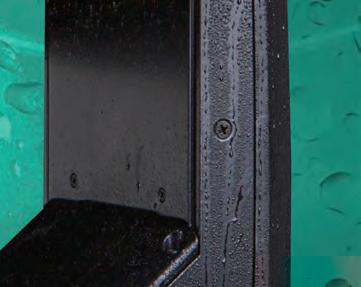




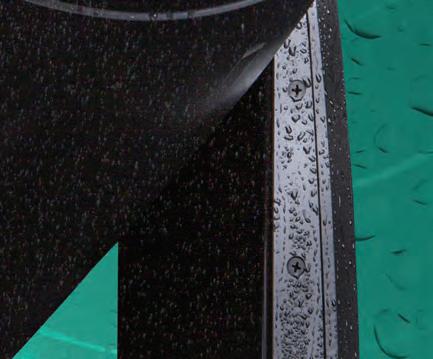




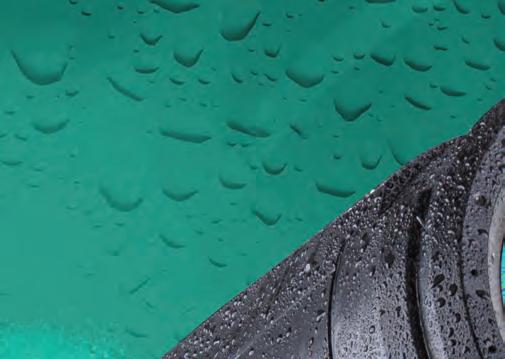
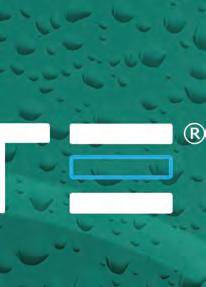

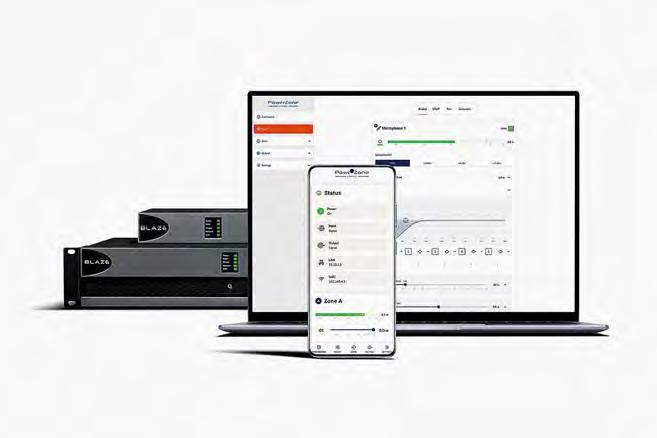
PASCAL SUBSIDIARY Blaze
Audio has added new features to its PowerZone Control app for its PowerZone Connect full matrix DSP amplifiers with the arrival of V1.4 firmware. Featuring an enhanced interface, PowerZone Control V1.4 is described as a versatile DSP controller for configuring audio and voice systems in locations requiring multizone audio setup with multiple microphone talkovers.
With the free update, PowerZone Control V1.4 enables a true multizone matrix experience, allowing for the combination of inputs to create four separate mix groups which are available to send to any output. For simple control of special announcements, the new web app has features to configure priority input and ducking to override primary audio (such as background music) throughout the
EQ on each analogue input and all outputs, including a high-pass filter that provides improved microphone speech clarity. Equally important, PowerZone Control V1.4’s S/PDIF output routing capability readily facilitates the routing of zones and inputs to S/PDIF and expands the scope of the installation with additional power amplifiers. Recognising that the most important consideration for any installation is sound quality, the manufacturer has included a variety of loudspeaker presets that enable integrators to have extensive control for fine-tuning the sound. These cover commonly installed loudspeaker brands, including Bose, Yamaha, JBL and Sonance. Furthermore, the presets can be customised, renamed and saved using the PowerZone Control web app directly from a user’s phone.

have been designed by Harman Professional Solutions for a variety of applications. Featuring wide horizontal and narrow vertical coverage with a built-in 10° downtilt, both COL Series models deliver optimum coverage for most listening areas, while allowing the speaker to be installed flat to the wall. Racetrack woofers provide maximum radiating area in a column form factor. Multi-tap transformers allow for use on either 70V or 100V distributed speaker lines, while the speaker is switchable for direct 8Ω operation. Available in black or white, two included L-brackets can be installed on either the top or bottom panels. These speakers can be installed indoors or outdoors and feature an IP54 rating (per IEC60529) for protection against ingress of dust or water. The drivers are watertreated, the grille has a water-backing and a cover is included to protect the input terminals.
pro.harman.com
HOLOPLOT HAS released the compact X2 array, a smaller version of the X1 and intended for speechbased and multi-content applications, bringing the technology to a wider range of applications. Optimised for speech, the X2 is formed from the Modul 30 (MD30) matrix array loudspeaker, which incorporates 30 full-range drivers in a single layered matrix arrangement. Like its bigger brother, it uses intelligent software-based optimisation of sound system design and performance, facilitating customisable integration and decreasing the need for acoustic treatment by mitigating unwanted reflections. Like the X1, the solution
also takes a modular approach that allows it to be scaled up to meet the demands of multiple environments. While the mounting frame of the X2 reportedly allows for efficient installation, the cabinet has also been built to withstand extreme weather,
meaning it can be installed in locations regardless of the climate. Holoplot is also releasing a new version of Holoplot Plan, which enables planning and simulation with X2 modules.
www.holoplot.com
PAN ACOUSTICS has released what it describes as a new technology for the energy-efficient supply of AV components in an Ethernet network. Power Core has been created to generate the maximum audio experience from any IT network. Modern Ethernet networks with Power over Ethernet (PoE) are available in different power classes and can deliver constant power from 15.4W to 90W over a category cable, depending on the version. Power Core manages the available power depending on the selected PoE class and allocates it to the loads in an energy-optimised manner. It also serves as an energy buffer for maximum available peak power from the PoE network.
Active Pan Beam speakers with Dante audio network – launched in 2018 – have now been re-engineered and are available with integrated Power Core technology. Pan Beam works on power classes of PoE+ and PoE++ (30W, 60W and 90W). A selection of the power class is possible via the free Pan Beam configuration software. Overloading the network with too much power is avoided. An additional status LED on the back of the speaker signals the correct PoE supply. Due to the power-
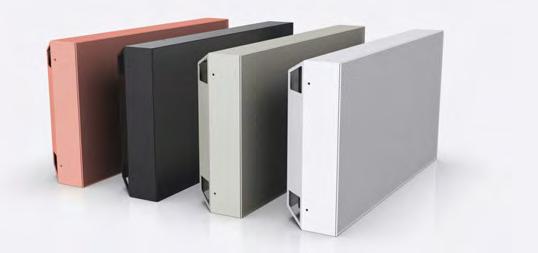

CEMENTING ITS installationfocused IS-Series of loudspeakers, Adamson Systems has extended the series with a 12th addition in the form of the IS7c passive two-way coaxial speaker. Exhibiting extended low-end frequency response, the compact cabinet is resistant to corrosion with an elevated IP rating and is available as a weatherised product. The IS7c integrates an ND7-C coaxial transducer incorporating Adamson’s Advanced Cone Architecture, which enhances durability in addition to targeting the upper midrange. Operating within a frequency range of 80Hz–20kHz with a maximum peak SPL of 130dB, the IS7c displays a nominal concentric dispersion of 90°. Rigging points are available in the form of top and bottom mini-SLR discs, each containing a 10mm threaded insert. Two speakON NL4 connectors and a two-point barrier strip are available for connection.
Supporting the design for any Adamson system together with full control and monitoring of the CS-Series loudspeaker, the Canadian innovator has released the Windows version of its ArrayIntelligence software. The software is logically laid out to move from design and
simulation to configuring I/O and routing to system control, metering and diagnostics. Much of the design and simulation technology from the previous Blueprint AV software has been modified to allow for integration of identifiable and controllable endpoints into the workflow. In addition, ArrayIntelligence allows for implementation of multi-layer DSP zoning and grouping, auto-detection of online devices and use of Adamson’s proprietary optimisation algorithm to fine-tune line array performance. The legacy software Blueprint AV will continue to be supported for system design.
www.adamsonsystems.com
THE QB363 mkII is a modular column bass system from Alcons Audio. It can be used as a lowfrequency extension (LFE) system to the company’s Q-series line source column systems as well as an arrayable LFE system with any Alcons system.
Designed as a subwoofer to expand the manufacturer’s QRP40 into a full-range stack system, Alcons says the QB363 mkII is also a more economical solution for taller bass arrays. It can be stacked or flown in multiples, making it suitable as a building block to form bass arrays, for obtaining low-frequency projection and throw control in acoustically challenging spaces or in long-throw applications. The controlled (cylindrical) projection of the Q-series can be extended to lower frequencies by enlarging the LFE array length.

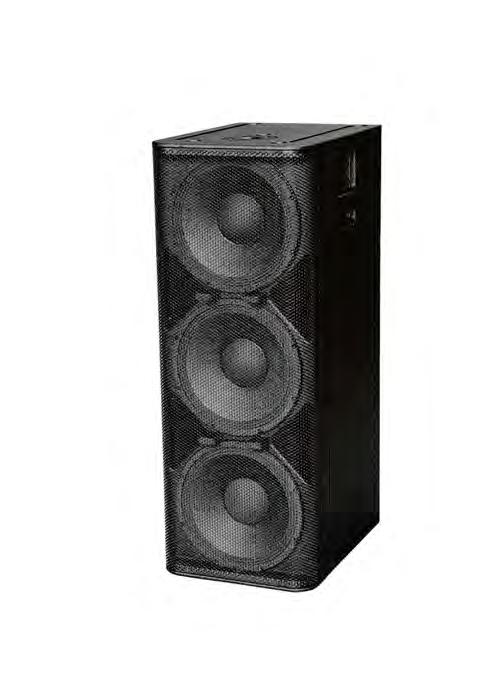

The system’s 12-inch transducers feature a large, dual 3.5-inch voice coil neodymium motor to enable an extended excursion while maintaining a high sensitivity. Meanwhile, its tightly spaced, direct-radiating neodymium drivers breathe through large, symmetrically positioned bassreflex vents, increasing overall output while reducing port compression. The ports are part of the cabinet’s integral structure, for increased rigidity under a minimal system weight.
when assembled in multiples; an array of six 12-inch woofers can be driven by one Sentinel channel.
The QB363 mkII is powered and controlled by the ALC amplified loudspeaker controller and offers QB363-specific drive processing. The integrated factory presets in the ALC drive processor offer gain, phase, array length and filtering matching with all Alcons pro-ribbon sound systems.
www.alconsaudio.com
DESCRIBED AS the newest crown jewels in its VIO-X family of powered PA loudspeakers, dBTechnologies has launched the VIO-X310 and VIO-X315. As the first three-way active speakers in the line-up, they are said to combine precise time-alignment, internal DSP and a “virtually bottomless well” of amplifier power. The MF-HF coaxial component mounted in both the VIO-X310 and VIO-X315 use the same transducer as the VIO L1610 line array module: a 4-inch voice coil plus a 2.5-inch voice coil coaxial driver, a highfidelity transducer reproducing from 500Hz upwards. When it comes down to detailed midrange reproduction, a compression driver diaphragm is much quicker and more accurate than a similar-sized woofer. Furthermore, because of the compact
dimensions, this content can be easily dispersed through a horn for improved control over the sonic pattern. These characteristics reportedly result in a faithful and “meticulous” reproduction of the most critical frequency range, essential for clear-cut intelligible vocals and instrument separation. The speakers incorporate the manufacturer’s fourth-generation DigiPro Class-D amplifiers and DSP processing, and
The VIO-X310 delivers low frequencies using dual 10-inch woofers mounted on either side of the midrange-treble assembly in a dipole configuration. The coaxial midrange and treble drivers are placed behind a 90° x 40° rotatable horn. The VIO-X315 features a single 15-inch woofer and the same coaxial midrange-treble drivers mounted in a 90° x 50° horn, which is tilted slightly downwards to optimise coverage in small to medium-sized venues. The extended bass response of the VIO-X315 is as low as 34Hz at –6dB. Both models can be flown using optional accessories and are built to stand up to outdoor use and the punishment of touring.
www.dbtechnologies.com
THE FIRST 18-inch subwoofer to incorporate the Active+ platform has been designed by Catalonian manufacturer Amate Audio. The Xcellence XW118 incorporates an 18-inch neodymium transducer and 4-inch voice coil with direct laminar bass-reflex radiation to produce a continuous 133dB musical program output. Powered by an internal 2,500W Class-D amplifier, DSP control parameters including gain, SPL limiter, crossover and EQ can be configured. Optional Ethernet or Wi-Fi control can be added via the Amate Audio DSPStudio
application, together with the Active+ enabling Dante system connection.
Within the 555mm x 740mm x 748mm outer birch wood structure is an inner design with asymmetric walls, reinforced to minimise internal standing waves to attain high dynamics. Designed to be the perfect companion to any element from the Xcellence series, the 56.8kg XW118 is finished with a polyurea coating. Flexibility is enhanced with an M20 pole mount and hardware for suspending the subwoofer from a customised BRXW bumper and KR rigging kit.
SYMETRIX HAS unveiled the xIO XLR-Series of wall-mounted, mic/line, Dante-enabled endpoints which include an ultra-high performance audio signal path using the same studio-grade mic preamps and AD/DA signal chain as its DSP. The endpoints are said to provide clarity, intelligibility and accuracy.
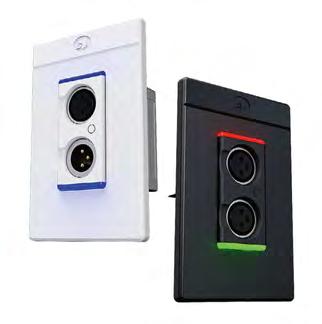


Features include studio-grade AD/DA and transparent mic preamps with up to 51dB of gain adjustable in 3dB increments. The endpoints are Danteenabled with sample rates up to 96K. The front-panel RGB LED for each connector can be programmed to reflect any system parameter such as signal presence, clip, mute or preset, or they can easily be blacked out. Integrated buttons are flush with the faceplate and can control any function of the system. In combination, the bright indicators and control buttons allow for rapid, onsite diagnostics and management of a system. The endpoints are available in four models that can be matched to any need. They are said to simplify setup and are available in light and dark finishes.
A raised bezel and proprietary thumb notch ease connector attachment and removal. The vertically oriented network port is accompanied by an integrated stress-release attachment point and the Decora-compatible faceplate snaps into place without visible screws. Each xIO XLR is constructed of die-cast zinc. The design incorporates a unique XLR mounting method that protects internal
The Active+ control platform can be monitored and configured from a 3.5-inch GUI colour touchscreen. Advanced FIR (Finite Impulse Response) is employed in providing total system phase linearity, ensuring no group delays over the entire frequency response, including high-order parametric EQs. Amate Audio’s proprietary over-voltage circuit provides added protection. In
supply’s power factor correction, safe operation of the XW118 is assured under unstable mains conditions up to 400V.
www.amateaudio.com
EXTRON HAS introduced the XPA Ultra FX Series of eight- and four-channel multizone audio power amplifiers. The units allow for a single amplifier to be set up in a variety of configurations to support large systems with multiple speaker types, can simultaneously drive 8Ω, 4Ω,
providing the ability to return to full power from standby in under 5ms. This reportedly ensures that no part of the audio is cut off. The fan-cooled enclosure can be part of a high-tech aesthetic or hidden away in a rack, without requiring adjacent empty space for ventilation. Offering 200W

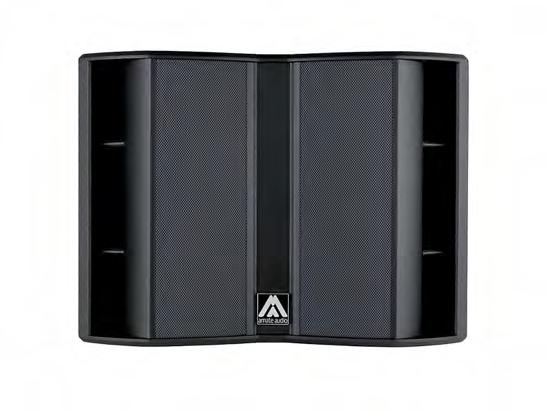

70V and 100V loads and are configurable per channel. Each channel of an adjacent pair dynamically draws power from the pair’s total wattage, delivering optimal power where it’s needed, according to system requirements.
per channel, the XPA U 2008 FX eight-channel amplifier and XPA U 2004 FX four-channel amplifier are intended to be go-to solutions for any multizone applications requiring mixed speaker impedances and power levels.
www.extron.com
WITH THE launch of the PowerShareX adaptable power amplifiers, Bose Professional has collaborated with Powersoft to deliver “high impact in a compact footprint”. Providing power and functionality, the PSX1204D, PSX2404D and PSX4804D 1U models offer 1,200W, 2,400W and 4,800W of rated power respectively across four channels. Building on the success of the existing PowerShare amplifier range, the PowerShareX smart amplifiers enable Dante connectivity to
performance, and ControlSpace Designer monitoring software provides a snapshot of the entire system from a single user interface. PowerShareX technology promotes power-sharing flexibility for dynamically allocating power evenly or asymmetrically across outputs. A high peak power capability delivers maximum output from all Bose Professional loudspeakers.
www.boseprofessional.com


HDL 26-A
133 dB max SPL
2000 W peak 2-way Class-D
55 ÷ 20000 Hz Frequency Range
100° x 10° coverage angle
3” Titanium Compression Driver
2 x 6” Neodymium Woofers
HDL 35-AS
Flyable complement for the HDL 26-A
134 dB max SPL
2200 W peak 2-way Class-D
40 ÷ 140 Hz Frequency Range
15” Neodymium Woofer
Networked Management
FiRPHASE Technology
Lightweight and easy to deploy, HDL 26-A Array module feature RCF transducers, Class-D amplifiers, and proprietary FiRPHASE DSP processing for a natural sound at any volume. Incredibly even SPL, consistent coverage, and flexibility for an extended market of professional installations and integrations. The complete integration of all elements provides users the freedom to adapt the system to the location, with powerful software tools for system design, tuning, and management.

WITH THE ListenWIFI product suite, Listen Technologies has developed the next generation of its Listen Everywhere, audio-over-Wi-Fi solution. ListenWIFI will replace the Listen Everywhere system and follows the naming convention of other Listen Technologies solutions, like ListenIR and ListenRF. Like earlier versions of Listen Technologies’ audio-over-Wi-Fi solutions, ListenWIFI lets venues stream audio over their wireless network to guests’ smartphones. Guests access the audio via a free app and listen with headphones or earbuds. An optional personal induction loop, also known as a neck loop, is available for guests with telecoil-equipped hearing aids or cochlear implants. When guests wear the neck loop and it is plugged into
their smart device, audio transmits directly to their hearing aids or cochlear implant.
Applications for ListenWIFI include assistive listening, language interpretation, streaming audio from video or TV screens and audio description. While previous versions of Listen Technologies’ audio-overWi-Fi solution had similar applications, the ListenWIFI platform features the latest hardware, including LWR-1050 dedicated receivers, LA-490 ListenWIFI Beacons, two-, four-, eight- and 16-channel servers and enhanced software for system configuration and management.
ListenWIFI LWR-1050 receivers are available for venues to meet legislative assistive listening compliance requirements and to
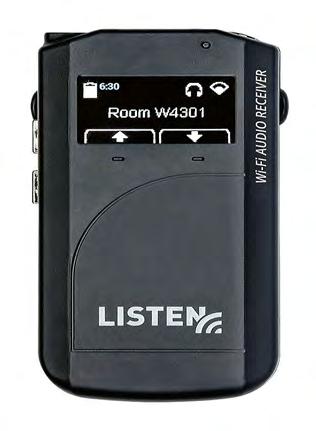
simplify audio access for guests. Making ListenWIFI a global assistive listening system, the receivers enable ListenWIFI to meet international compliance requirements when used with signage and neck loops. The LWR-1050 receivers can access streamed audio via the ListenWIFI app on their smartphones. Alternatively, the audio can be accessed using the LWR-1050, which does not require Wi-Fi connection or an app download. The ListenWIFI LA-490 Beacons provide location-based audio. The
lightweight units can be mounted on a wall and information can be transmitted via Bluetooth to the LWR-1050 receivers or smartphones. Venues can configure the new LA-490 ListenWIFI Beacons to trigger the LWR-1050 receivers and users’ smartphones to stream audio automatically when a person is within a specific range of the unit. ListenWIFI software allows venue managers to determine the coverage area and which channels a user can access. The new ListenWIFI servers are available in two-, four-, eightand 16-channel configurations. ListenWIFI Manager software for Windows manages the ListenWIFI system and enables venues to program the entire ListenWIFI platform, including the LWR-1050 receivers, LA-490 Beacons, mobile apps and servers. Audio channels can be password protected and QR codes can be generated to access audio on smartphones.
www.listentech.com
ALLEN & HEATH has boosted its “Everything I/O” ecosystem of remote audio expanders with the DX88-P, a 96kHz expander designed for fixed installations. Featuring eight mic/line inputs and eight outputs on Phoenix connectors, the DX88-P can augment the analogue I/O of an
processors adds room combining features with a visual interface for creating and managing layouts of up to 16 rooms. Room levels, source selectors and dividers can be controlled by A&H’s IP range of PoE-powered controllers, GPIO or by third parties via TCP. The company’s Custom Control
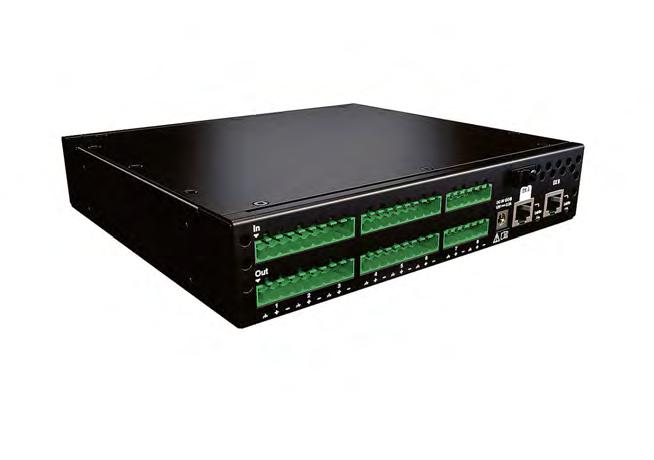
WITH THE
audio to people with hearing loss, Williams AV has unveiled its Bluetooth Auracast technology for the pro AV market. The company believes its assistive communication concept can create new opportunities for AV professionals and has added Auracast technology to its range of FM, infrared, Wi-Fi, digital and induction loop technology. The Auracast platform can simultaneously deliver up to 20 audio broadcasts to an unlimited number of people, and deliver audio directly to an Auracast receiver. Meanwhile, the manufacturer has also unveiled the newest member of its portable, wireless digital product family – the Digi-Wave AIM transceiver. According to Williams AV, the Digi-Wave AIM – with AIM
Module – has been developed due to the growing customer demand for a feature-rich, portable language interpretation solution to support a variety of bilingual and multilingual scenarios. While the current DigiWave 400 transceivers include an interpretation mode, the Digi-Wave AIM transceiver streamlines two-way interpretation and includes the advanced functionality customers have requested. The AIM mode includes all of the current features of the Digi-Wave 400 series, including intercom and courtroom modes, and now comes with a new Q&A mode for easy question-andanswer sessions.
www.williamsav.com
Meanwhile, the release of V1.4 firmware and System Manager for the AHM range of audio matrix
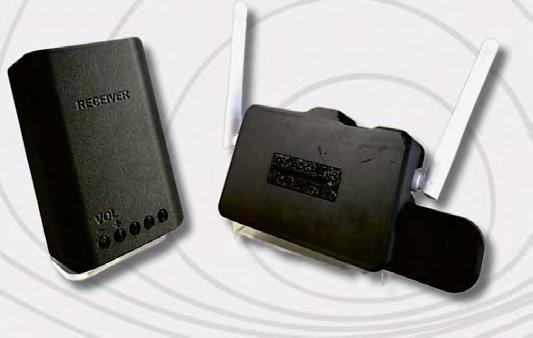
Manager.
www.allen-heath.com
Even more Everything with hardware and software boostDX88-P
THE CE Series from AMX is a family of professional-grade universal control extenders said to deliver hardware control to
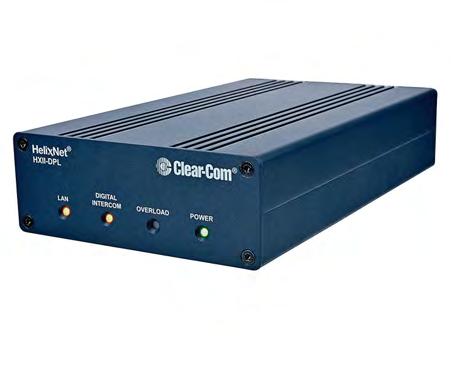
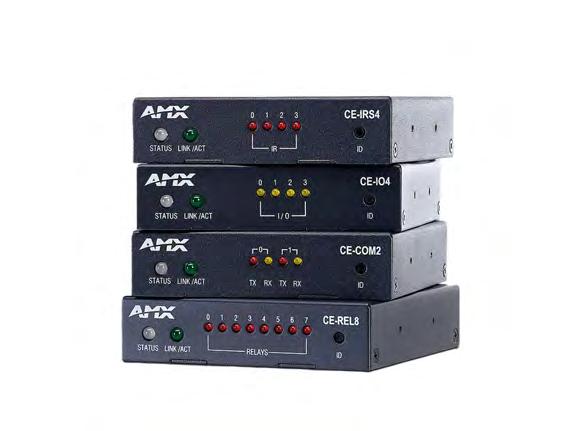

and a compact footprint simplify installation and concealment. Finally, the SVSI N4321D audio transceivers with Dante and


BRIDGING THE gap for facilities relying on XLR audio cabling for intercom, Clear-Com’s compact HXII-DPL
Powerline Device delivers IP digital audio to HelixNet intercom systems over three-pin XLR cabling without channel selection constraints and audio interference.
Multiple HXII-DPL Powerline
and the integrated web interface enables configuration without specialised applications. Harman’s HControl protocol enables autodiscovery by next-generation AMX control processors and other Harman Professional products. PoE
Dante to analogue, analogue to AES67 or nearly any other combination, these transceivers are said to simplify networked audio integration.
pro.harman.com
Designed as a plug-and-play IP interface, the HXII-DPL delivers power and digital audio to HelixNet beltpacks, speaker and remote stations from an Arcadia Central Station System (or legacy HMS-4X Main Station). Arcadia-based systems open a world of digital audio connectivity for HelixNet users, including IP transceivers and third-party Dante devices, as well as support for FreeSpeak Digital Wireless Systems.
HXII-DPL connects to an existing Arcadia system or XLR
Devices can be added to increase HelixNet User Station capacity and allow for greater user density per system.

With support for up to seven HelixNet beltpacks on a single line, the device can use passively split audio cabling similar to traditional analogue partyline systems without humming or buzzing. The system also features visual indicators to resolve any up- and downstream cabling and overload issues.
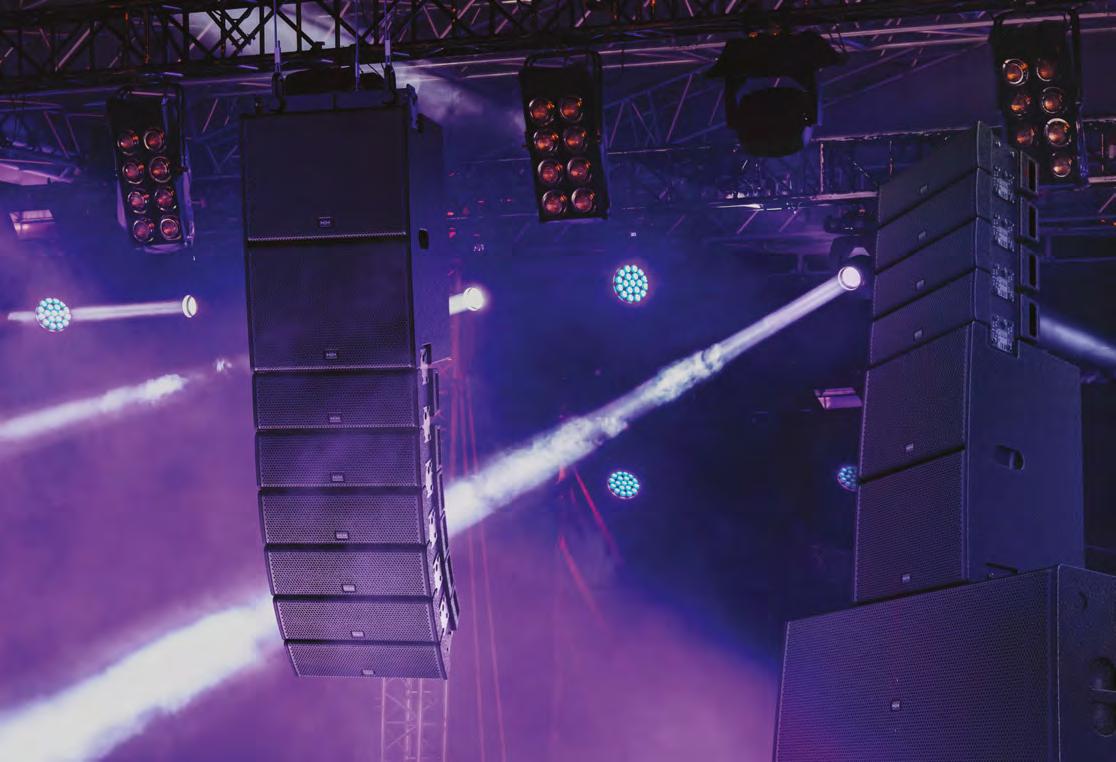
ACTIVE AND PASSIVE LINE ARRAY SYSTEMS COMPACT, HIGH QUALITY SOUND, UNMATCHED VALUE
AFTER THE successful launch of its DDK4000 Drum Microphone Kit, DPA Microphones has added several other professional sound microphone kits. The additions will provide audio engineers with a selection of highquality condenser mics for a range of purposes. The bundles include the DLK4000 Live Microphone Kit, DSK4001 Studio Microphone Kit, DRK4001 Ultimate Recording Kit and DLS4000 Location Sound Kit. Offering a microphone and accessory selection for touring sound engineers, the DLK4000 Live Microphone Kit features 20 mics and capsules, along with accessories said to enhance sound quality, clarity and consistency. Included in the kit are mics for lead and backup vocals as well as instrument mics for close-miking any live instrument. To further equip
Accessories such as extension cables, mic clips, mounts and wind screens reportedly provide easy setup and breakdown, no matter the instrument. For those miking more in the studio than on the stage, the DSK4001 Studio Microphone Kit has been designed for small home studios and large professional spaces alike. The condenser mics are suitable for recording bands, vocals and anything in between. This medium-sized kit contains both instrument and vocal mics, as well as a wide variety of helpful clips and holders, allowing for simple setup when close-miking a single instrument or spot-miking an entire group.
The DRK4001 Ultimate Recording Kit features over 24 DPA condenser microphones and close to 100 functional accessories. The DRK4001
the standard TV/film production solutions, along with cables, holders, concealers, adapters and clips. From shotguns for booming to microshotguns for discreet plant-miking and a range of lavaliers for close-
miking, each microphone included in the kit has been chosen based on input from professional sound engineers.
www.dpamicrophones.com
YAMAHA HAS announced the DM7 Series of professional digital mixers, said to deliver next-level efficiency and agility for creative sound engineers. Designed to deliver intuitive operation, reliability and high-quality sound to achieve maximum performance, the DM7 Series offers four purchase options, including a 120-channel (DM7) and 72-channel (DM7 Compact) mixing console, each with an additional control expansion unit (CTL-DM7).
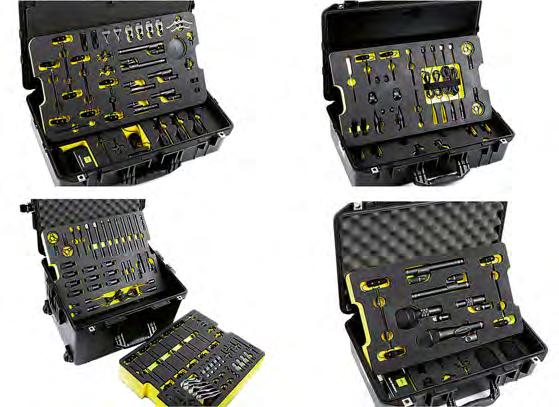
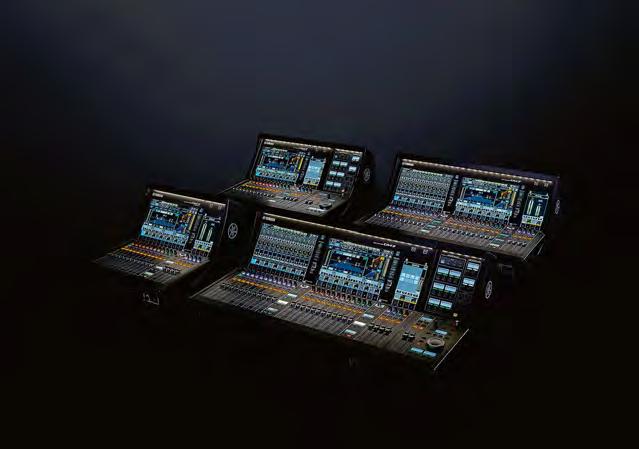
The DM7 can process 120 input channels and features 32 local inputs and 16 local outputs. The DM7 Compact can process 72 channels, has 16 local inputs and 16 local outputs. Both models feature 144 in/out Dante networking at 96kHz, 48 mix, 12 matrix and two stereo busses.
With the purchase of the CTL-DM7, the mixing console provides more tactile encoders and faders for
increased flexibility. The DM7 Series can be used with 1st and 2nd Generation Yamaha R Series I/O racks and unlocks their 96kHz functionality. In addition to Rios, the DM7 supports a wide range of Dante devices to provide scalable audio systems. The channel strip features the four varieties of channel EQ from the RIVAGE PM Series alongside the new FET Limiter and Diode Bridge Compressor.
Two 12.1-inch multitouch screens (one on the DM7 Compact) contain Yamaha’s familiar “touch and turn” knobs. A new Selected Channel View displays a list of information on individual channels and the overview screen for analogue mixer-like operation. A histogram display has also been added to the input meters to help manage head amp levels.
www.yamaha.com/proaudio
THE AT2020USB-XP cardioid condenser USB microphone is the latest addition to AudioTechnica’s 20 Series content creation products. Building on the AT2020USB-X USB condenser model, the AT2020USB-XP includes the same silent touchsensitive mute switch, built-in headphone jack with volume control and personal mix control to allow for monitoring of the microphone, as well as plug-and-play USB Type-C operation. Additions and improvements for the AT2020USB-XP include a 24-bit/192kHz sampling rate, three levels of noise reduction (via selector switch with LED indicator), automatic gain control (with LED indicator) and the inclusion of a clip-on pop filter.
The microphone’s directional pickup (cardioid) keeps the focus on the voice or other chosen
sound source, while its highresolution A/D converter is said to ensure extremely clear, natural sound reproduction. A two-state LED indicator ring lights blue to indicate that the microphone is receiving USB power and lights red when audio is muted at the microphone. The LED indicator also blinks when peak audio level
The microphone comes with a custom desk stand and clip-on pop -inch-16 to -inch-27 threaded adapter and 3.1m USB-C to USB-A cable with a USB-A to USB-C adapter. The AT8455 shock mount, is

In brief, Audio-Technica has announced integration between its ATND1061DAN beamforming ceiling array microphone and a wide range of AVer PTZ cameras designed for video collaboration.
www.audio-technica.com
Taking creativity to the next level
THE IGGY-ANA8.8 is the latest addition to Ross’s family of live analogue audio/IP bridges. Its form factor is said to provide flexibility to deploy IP audio conversion wherever it’s needed – in a studio, truck, onstage or in a fly-pack. The bridge
density, broad interoperability with AES67 and ST 2110, and network monitoring can reportedly support any environment.
It comes with flexible mounting options and “robust” features, including redundant power supplies, redundant Gigabit Ethernet connections and locking
(Tascam). In addition to Ross DashBoard and a WebUI, a range of discovery and control protocols are supported, including NMOS,
rate range from 44.1–192kHz, it is said to improve flexibility. Additionally, the module supports optional HD SRC technology, enabling state-ofthe-art sample rate conversion and providing an alternative to FastSRC. The company has also expanded its range of supported audio network formats with the addition of AVB/ Milan to its existing line-up, which
bridge AVB/Milan and Dante or any other supported audio network, as well as MADI, AES3 and analogue. The PRODIGY.MP, with the addition of AVB/Milan and its filtering and DSP processing power, is said to provide “an unparalleled solution for FOH signal management and PA tuning”.
www.directout.eu
DIGICO HAS deepened its commitment to the Avnu Alliance with the introduction of its Milancertified DMI-AVB module. The DMI card module provides reliable Audio Video Bridging (AVB) networking and interoperability between any of DiGiCo’s DMI card slot-equipped consoles and any other system component on a shared Milan AVB network.

Compatible with all of DiGiCo’s Quantum range, the SD12 and any other console via DiGiCo’s outboard
Orange Box, the digital 64x64 AVB card supports both 48kHz and 96kHz formats and supplies eight streams
DEVELOPED AS a successor to the Magewell Cloud platform, Control Hub features an enhanced device management interface and expanded stream conversion capabilities. Flexibly deployable on-premises or in the cloud, Control Hub will provide
centralised configuration and control of multiple Magewell streaming and IP conversion solutions. Administrators, IT staff and systems integrators can manage multiple encoders and decoders across disparate locations through a browser-based interface. An
HTTP-based API is also available for third-party integration.
The Control Hub software will support Magewell hardware products, including Ultra Stream and Ultra Encode live media encoders; Pro Convert NDI encoders and decoders; the Pro Convert Audio DX IP audio converter; and the USB Fusion capture and mixing device. Users can remotely configure device parameters, monitor device status, trigger operational functions – such as starting or stopping encoding – and perform batch firmware upgrades across multiple units of the same model.
Control Hub features a revamped user interface that is said to make it simpler and more efficient to manage multiple encoders and decoders. Its redesigned dashboard provides
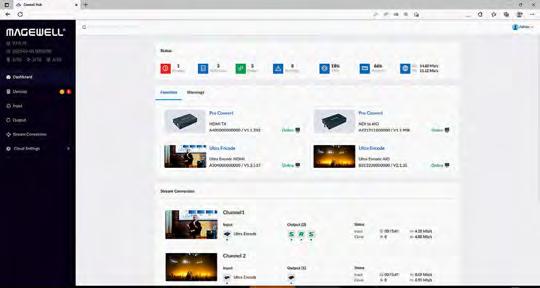
of eight-channel audio with extremely low latency. The DMI-AVB also supports Master/Slave clock mode.

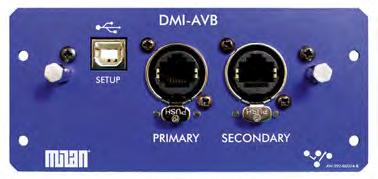
DiGiCo joins a host of professional audio manufacturers who have adopted the IEEE’s open-standard AVB technology, including d&b audiotechnik, L-Acoustics and Meyer Sound.
www.digico.biz
expanded information, making it easier for users to see the status of their devices and deployments at a glance. Video from remote Ultra Stream, Ultra Encode and USB Fusion units can be previewed directly in the Control Hub interface without needing to open the individual device’s interface panel.
Control Hub also expands on the stream conversion capabilities of the earlier Magewell Cloud software with support for more protocols and a more flexible stream routing architecture. Users can define presets for stream input sources and output targets, then create channels that map each input to one or more output protocols and destinations.
www.magewell.com
just one hand. This enables a single user to simultaneously set the field angle and focus, ensuring a quick and efficient workflow. 20-gauge stainless steel four-blade shutter assemblies reportedly provide meticulous sharpness without any halation. In addition, on the front of the holders, each with two accessory slots and a top-mounted, quick release, electroplated black gel frame retainer. The tough barrels are finished with a thick matte black powder coating, and they feature high-impact, thermally insulated knobs and shutter handles. The Encore Profile
reducing benefits of LED without

The HXC-FZ90 also supports HLG (Hybrid Log Gamma) and S-Log3 for Sony’s SR Live workflow, enabling HD HDR or 4K HDR when desired.
is the latest live production system from Sony designed to meet the needs of those seeking a 4K-ready production system. While most houses of worship currently produce the majority of their content in HD, they are increasingly aware of the benefits offered by 4K production and are looking for simple ways to switch to 4K. The HXC-FZ90 is said to offer a familiar design philosophy and operations that result in a seamless switchover at the time chosen by an organisation.
Key features of the new camera are focused on image quality and simple operation and include a -inch 4K CMOS sensor with B4 mount, enabling 2000 TVL resolution in addition to a 4K licence available on a weekly or monthly basis or as a permanent feature; simple integration with CNA-2 web RCP Control allowing advanced monitoring; simplified cabling with Prompter or PTZ cameras by Network Trunk (Ethernet); a stereo mini-jack connector for headset connection; and advanced focus assist feature. According to Sony, the versatility of design and functionality combined with the camera’s lightness and robustness mean it can be used in a variety of different production scenarios.

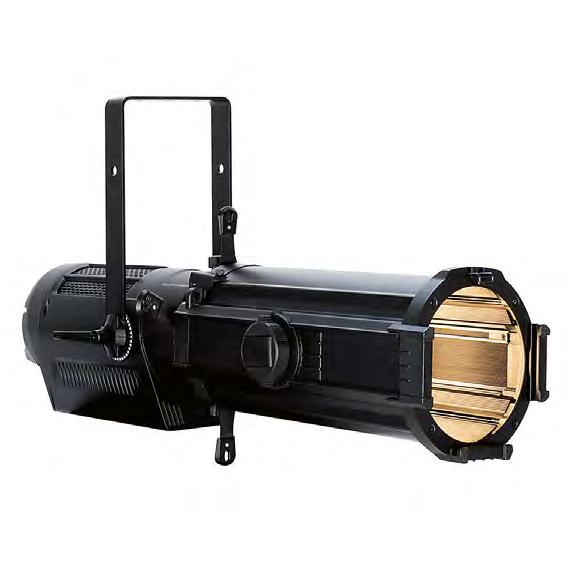
pro.sony
THE ZerOS 7.14 update for the Vari-Lite FLX Series consoles now supports Open Sound Control (OSC), RS485-based Vision.Net and DMX Input. The OSC input support in ZerOS 7.14 allows ZerOS-based consoles including the FLX Console, FLX S Series and ZerOS Server to receive OSC commands from other devices and software that support the third-party control protocol. The update allows users to integrate their lighting control into OSCcontrolled systems and automated
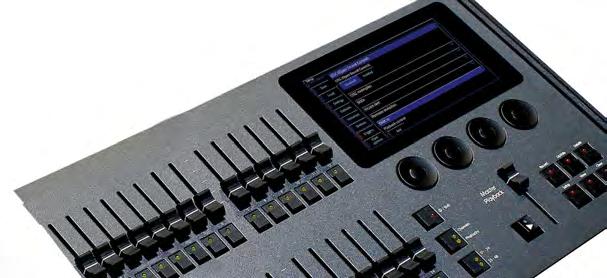
Vari-Lite is expanding its support for the Vision.Net platform within ZerOS. With support for Vision.Net RS-485, one of the FLX Series console’s onboard DMX ports can be used to receive Vision.Net commands from Vari-Lite Vision.Net Button stations or touchscreens. The addition of inbound DMX offers similar support for other DMX control devices in the system, including stage manager stations.
www.signify.com
aspheric front lens, combined with a bi-convex aspheric rear lens, which have both been treated with an anti-reflective coating. In addition to manual zoom, the lenses also offer manual focus control, allowing adjustment of the beam edge from soft to hard. The lens movement is designed to be smooth and effortless, allowing for easy adjustment with
control of the red, green, blue, white, amber and lime LED elements. It can also be used to generate colour-corrected white light, with a macro function providing easy selection of a range of different Kelvin colour temperatures, and offers a CRI in excess of 90.
www.adj.com
THE MAVERICK Force 3 Profile and Force 2 BeamWash are the latest additions to Chauvet Professional’s Force series. The two fixtures can be used individually or together to produce a flat, even field of light. Colour calibration and gobo selection in the Maverick Force 3 Profile match those of other Maverick Force fixtures. Along with the four-blade, rotating shutter frame system, the unit can deliver static, rotating and animation effects.
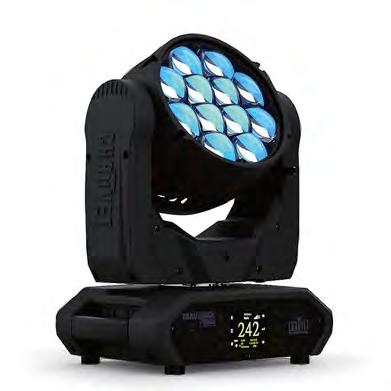
Featuring a 915W LED engine, the Maverick Force 3 Profile delivers 40,906 lumens and comes with a 4.9–53.9° zoom range to allow for a variety of coverage areas. Additional features include an animation wheel, 16-bit dimming of the master dimmer, CRI filter,
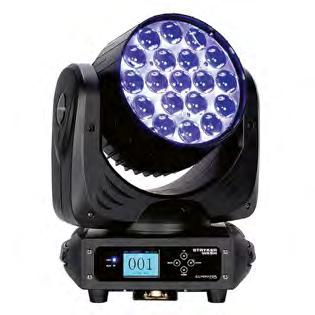

STRYKER BEAM and wash fixtures have been debuted by Eliminator Lighting. The former features a 100W cool white LED light engine with tight 6° beam angle designed to create interesting aerial effects, while the latter is a quad colour four-in-one LED moving head with a motorised zoom function capable of producing either wide colour washes or tight beams.
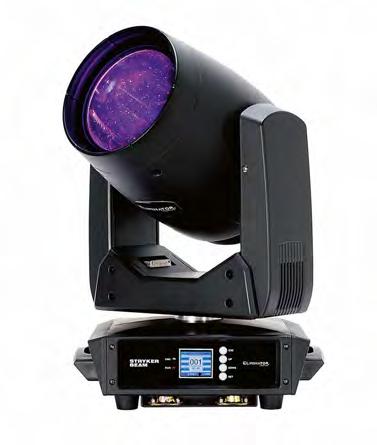
two independently layerable prisms (a five-facet linear and five-facet round), independent light and medium frosts, and two gobo wheels – one rotating, the other
The Maverick Force 2 BeamWash is described as a lighter, brighter, tighter, faster RGBW LED yoke wash fixture with full pixel mapping and zoom. It incorporates the latest LED and optical technologies to project narrow beams and deep aerial effects. Other features include 16-bit dimming of master dimmer, a built-in gobo wheel with background colours and calibrated white for 7,500K at full output.
www.chauvetprofessional.com
The face of the Stryker Wash is covered by 19 12W RGBW LEDs arranged in three concentric circles. Through independent dimming control of the red, green, blue and white LED chips, a huge gamut of colours can reportedly be created. In addition, there’s a dedicated Colour Temperature DMX channel spanning between 3,200K and 10,000K. A beam angle of between 6° and 50° can be achieved via a motorised zoom function, and the fixture’s moving yoke covers 540° pan and 210° tilt. There is a choice of two DMX control modes (13-channel or 23-channel), while the Stryker Wash can also run automatically using a choice of eight pre-programmed lightshows, either at a set speed or triggered by an internal microphone.
The Stryker Beam’s aerial effects are made possible through the incorporation of a dedicated gobo
WITH VISUALISATION software and tools like ETC’s Augment3d 3D programming environment, digital models play an increasingly integral part in lighting workflows. When time or budgets are tight, however, drafted or point-cloud models can still be out of reach. ETC’s Augment3d Scanner app is said to reduce this barrier to entry, allowing users to seamlessly create and import ready-to-use room models directly to their Eos Family consoles from a phone or tablet.
Built for use with the Eos Family line of lighting control systems, the A3d Scanner leverages the augmented reality tools included in a device, saving time building a 3D space. Once installed, users can explore the
tools to map a space, including walls, doors, windows, a full floor plan and even proscenium tools. When a plan is completed, the Scanner app builds a model on a device, allowing users

to send it via a Wi-Fi connection to any Eos Family console or computer running Augment3d.
In other news, the F-Drive R12 can now serve a wider range of
wheel featuring 11 metal patterns. A separate colour wheel features 13 dichroic filters (plus open white). Beam-shaping tools can be accessed through DMX control or set automatically. Wider aerial effects can be generated by utilising the two indexed rotating multi-faceted prism options. The eight-facet and 16-facet circular prisms can be used independently or layered with different rotation speeds to create animated effects. Beyond this, both fixtures boast 16-bit fine motor
control for fast and precise pan and tilt movements, smooth digital dimming from 0–100% and variable speed strobing.
www.adj.com
installations with the F-Drive Power Supply from ETC. The reduced-cost supply is suitable for sites with simplified power requirements. Now, customers can choose a dedicated 1,000W or 1,800W option with a simpler installation and reduced noise profile. The industrial and expandable Mean Well RKP-1U Rack System with RCP-2000-48 power supplies are still available. The manufacturer recommends this solution for installations where multiple power supplies and F-Drive R12 units are connected together or where in-line, always-active power supply backup is necessary.
www.etcconnect.com
JOHN PORTERFIELD IS AN online video specialist and webcast producer. Over the past 30 years, he has worked in various capacities from sales, technical and strategic relations. He also worked as a webcast producer and tech engineer for Harvest Christian Fellowship, handling weekly livestreamed services in addition to national and global events for more than six years. He also posts videos on his YouTube channel, JP’sChalkTalks, where he covers the livestreaming industry and hosts conversations with industry leaders, helping to evangelise new technologies and innovations as part of the online streaming community.
It was in 2014 that Porterfield made the transition from the more secular high-tech world to being on staff in a church and describes his privilege of starting as a volunteer at Harvest Christian Fellowship doing webcasts. The role transitioned into being on staff full-time, helping support Harvest’s multiple events, including their annual Crusade which this year moved to the Honda Center in Anaheim, California. The event attracted over 32,000 visitors and was streamed to more than 215,000 worshippers online. At around the same time, Porterfield also set up his
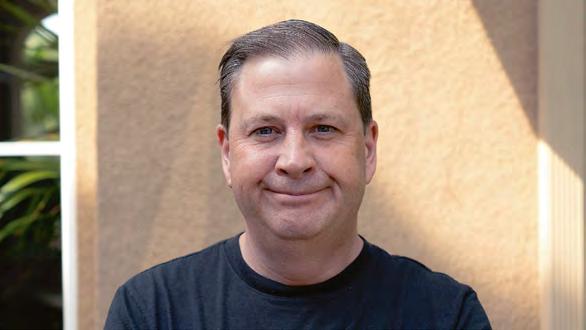
tech consultancy company Social180Group, which actively helps houses of worship with their livestreaming operations and productions. “I help churches make decisions on their livestreaming and advise them on how they can scale up their productions. One of the biggest challenges is that not every church will have volunteers who understand how the technology works. One of the key services I offer is remotely managing a church’s livestream. I also train people how to use the equipment and help them with their online presence. I’m their co-pilot – I can be available online and take over their stream if necessary. What I am working on is helping them manage their productions – there’s an exciting growth of livestreaming as a service as we see the convergence of tech with media.
“When the pandemic hit, it changed the whole structure for houses of worship of going completely online, which forced even the smaller churches to adopt a livestreaming solution for their environment,” explains Porterfield.
“It was like the Wild West, trying to get cameras, audio and PCs –whatever you needed to try and produce something. At Harvest, we had a plan in place, and we were
fortunate that we already had a basic setup to support a fully online church and playback for simulated live services for the church. Postpandemic, churches are now working to fine-tune what was pulled together during the pandemic and transition everything to a more structured livestreaming platform, and this is exactly where I can help out.”
One of the biggest challenges Porterfield comes across nowadays is the resources and people churches have in place to put together a production, and whether those resources can be used to produce a high-quality broadcast, particularly because technology is advancing at such a rapid pace.
“When I started at Harvest as a volunteer, I came with a technology background,” he explains. “Mostly, my work now is about advising churches to make sure that they have the right infrastructure in place by starting with their IT network since livestreaming is so dependent on it, in addition to other crucial areas in audio, lighting and video.
“There are many choices now and options to consider,” Porterfield continues. “To start, I will advise churches to capture their services first before livestreaming. It gives
you a better opportunity to fine-tune what you need to do before you go live. There are many choices and ways to build livestreaming setups now compared to when I started. The key is creating the ability to scale and build quality into your services and for those watching online to participate.”
As technology progresses, cloudbased remote production tools will allow HOWs to fully mix a live event, or playback, and minimise costs for onsite sources, as well as the management of livestreaming encoders remotely via the internet.

“For churches, a livestream is really trying to amplify what is happening in-house to those watching online to feel like they are included as part of the church,” he explains. “We’re trying to amplify what we’re doing so people will share that experience in terms of the worship experience and the message that is being conveyed.”
www.social180group.io







